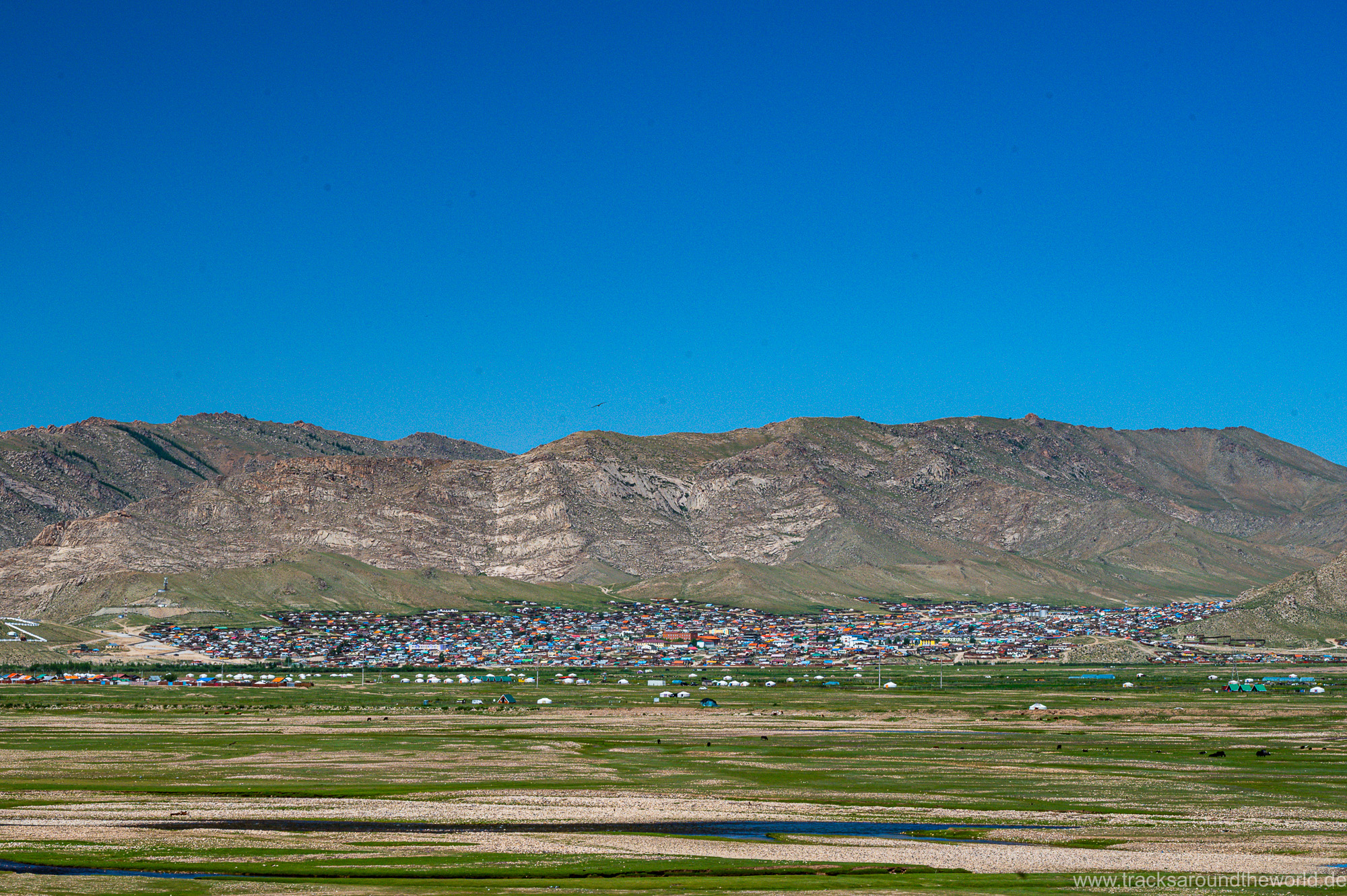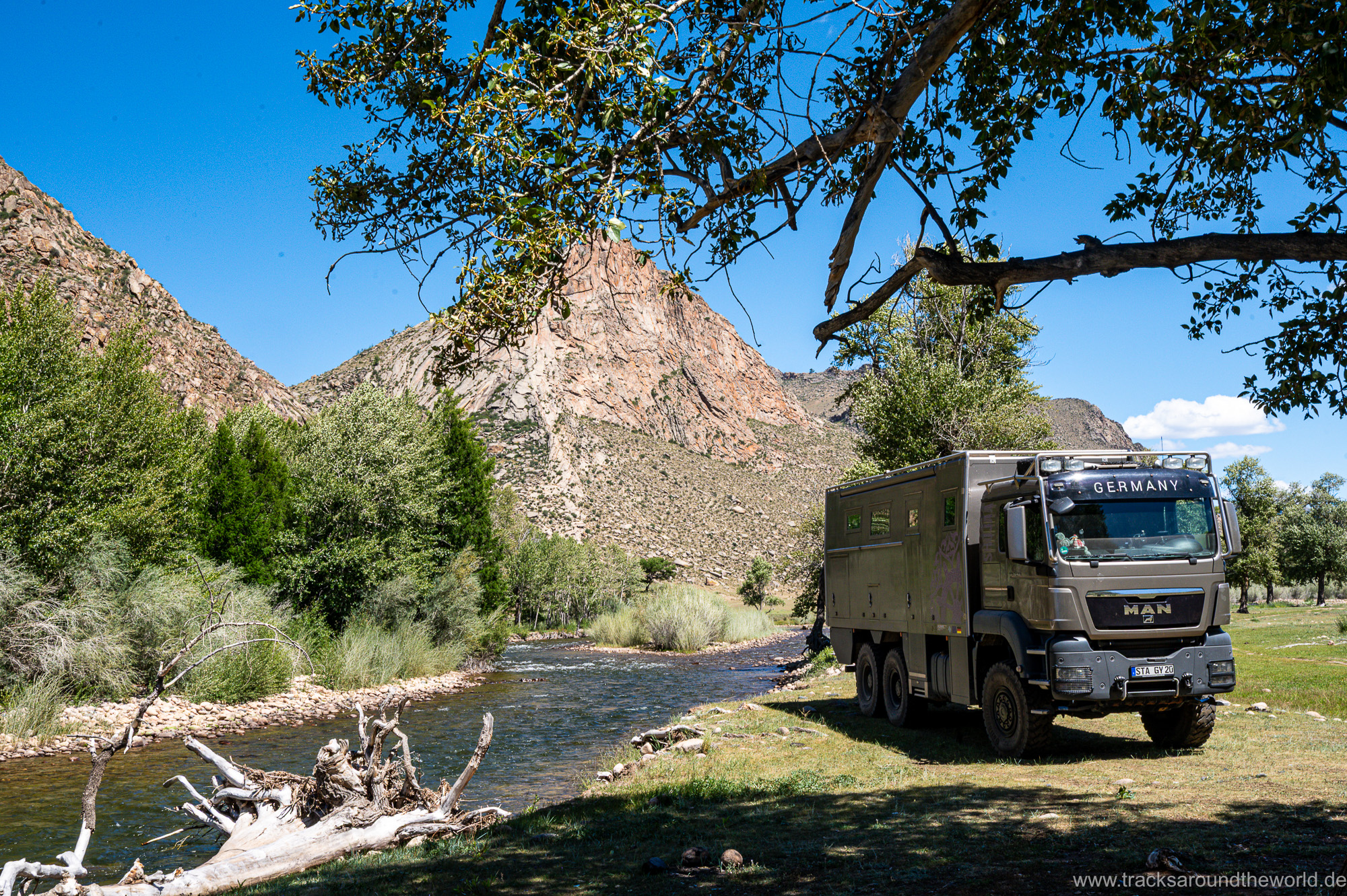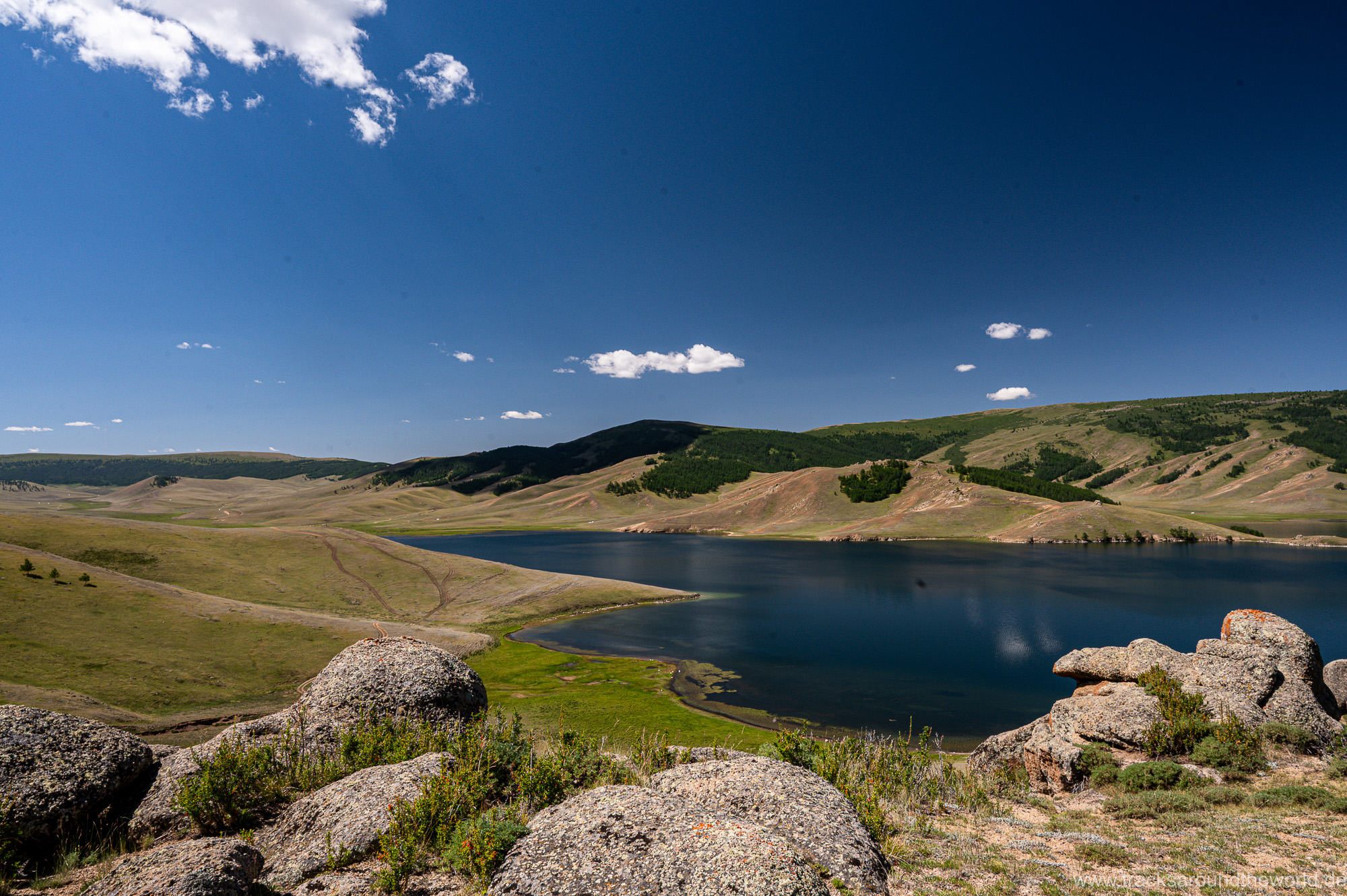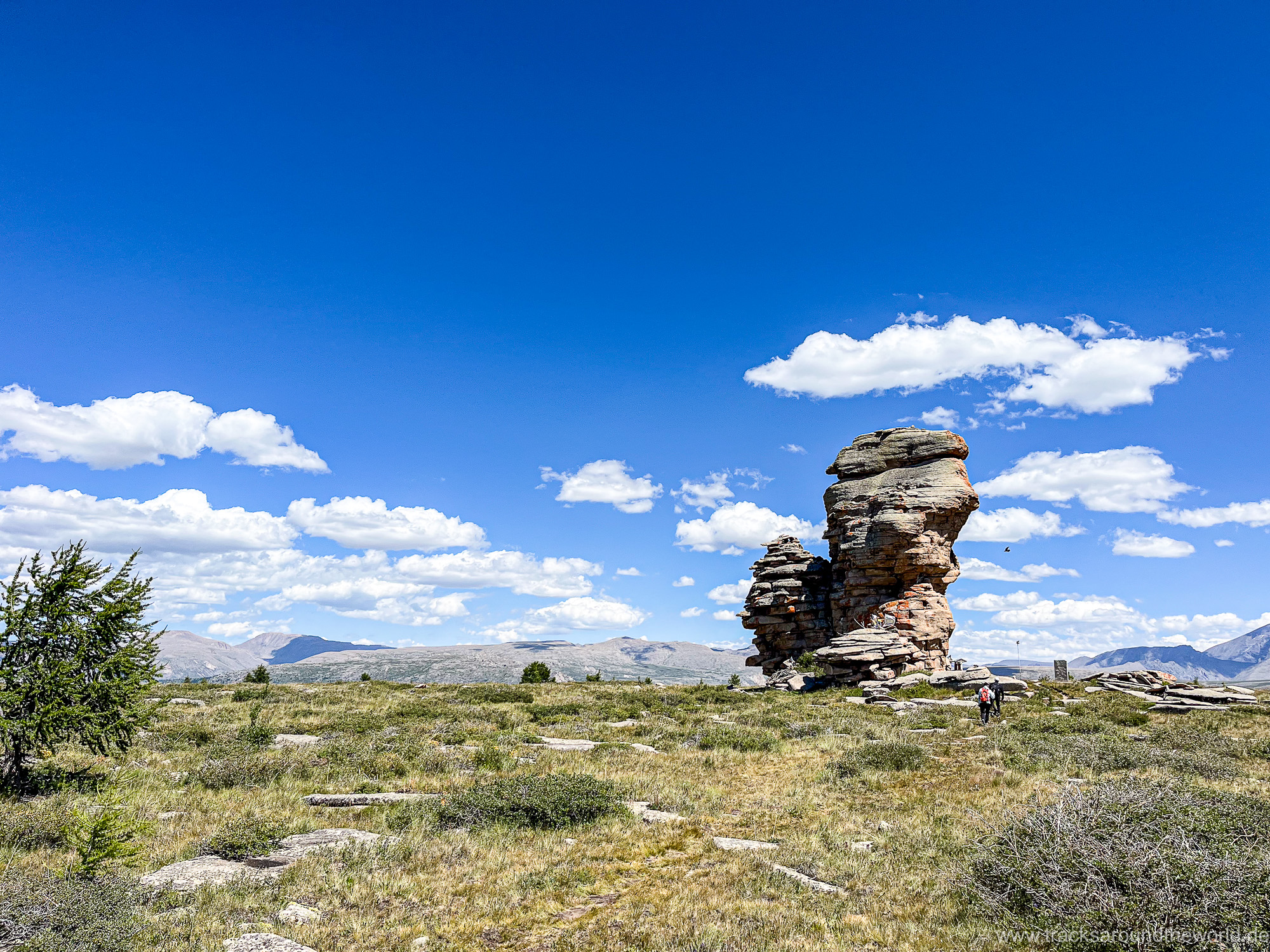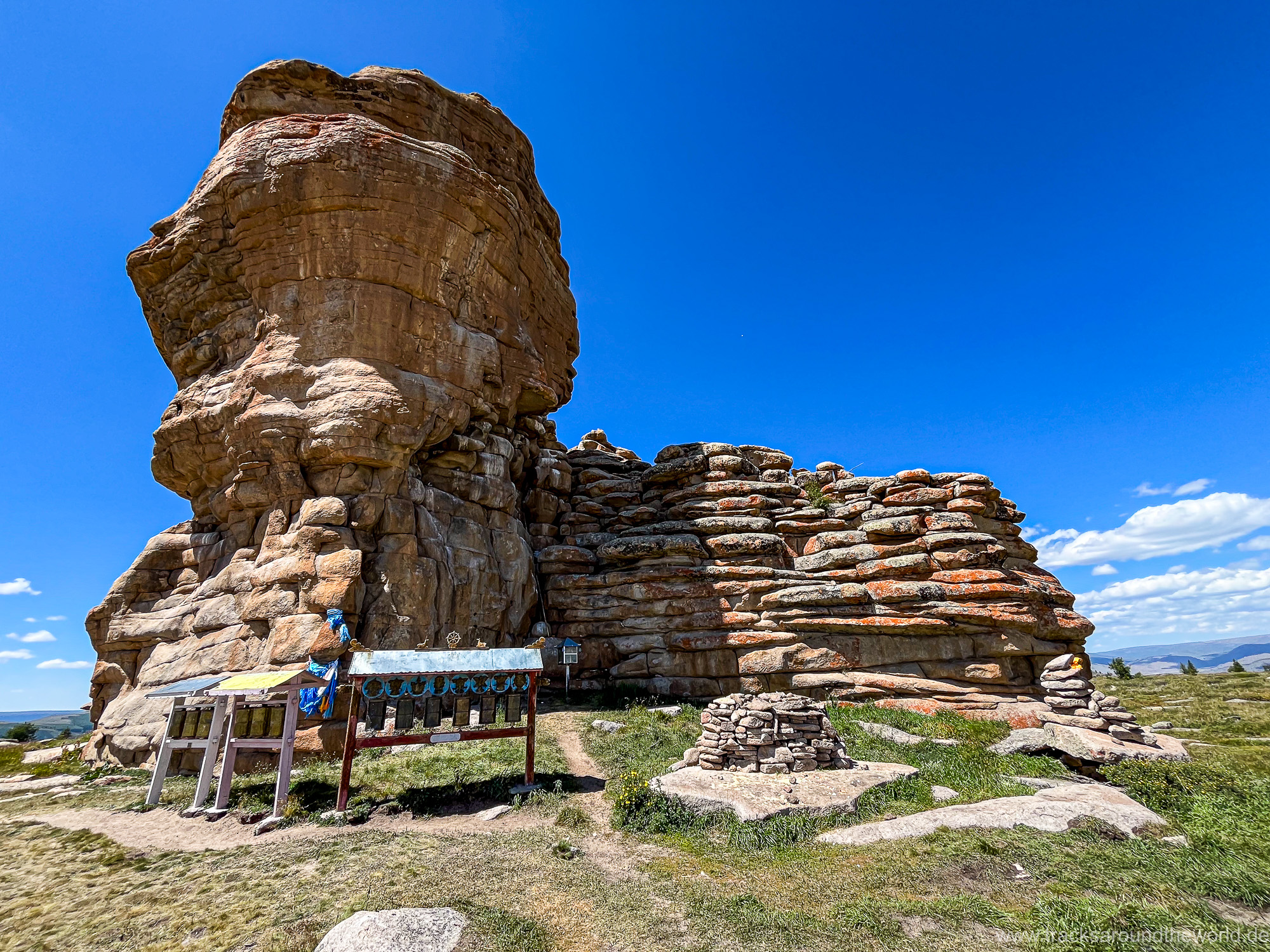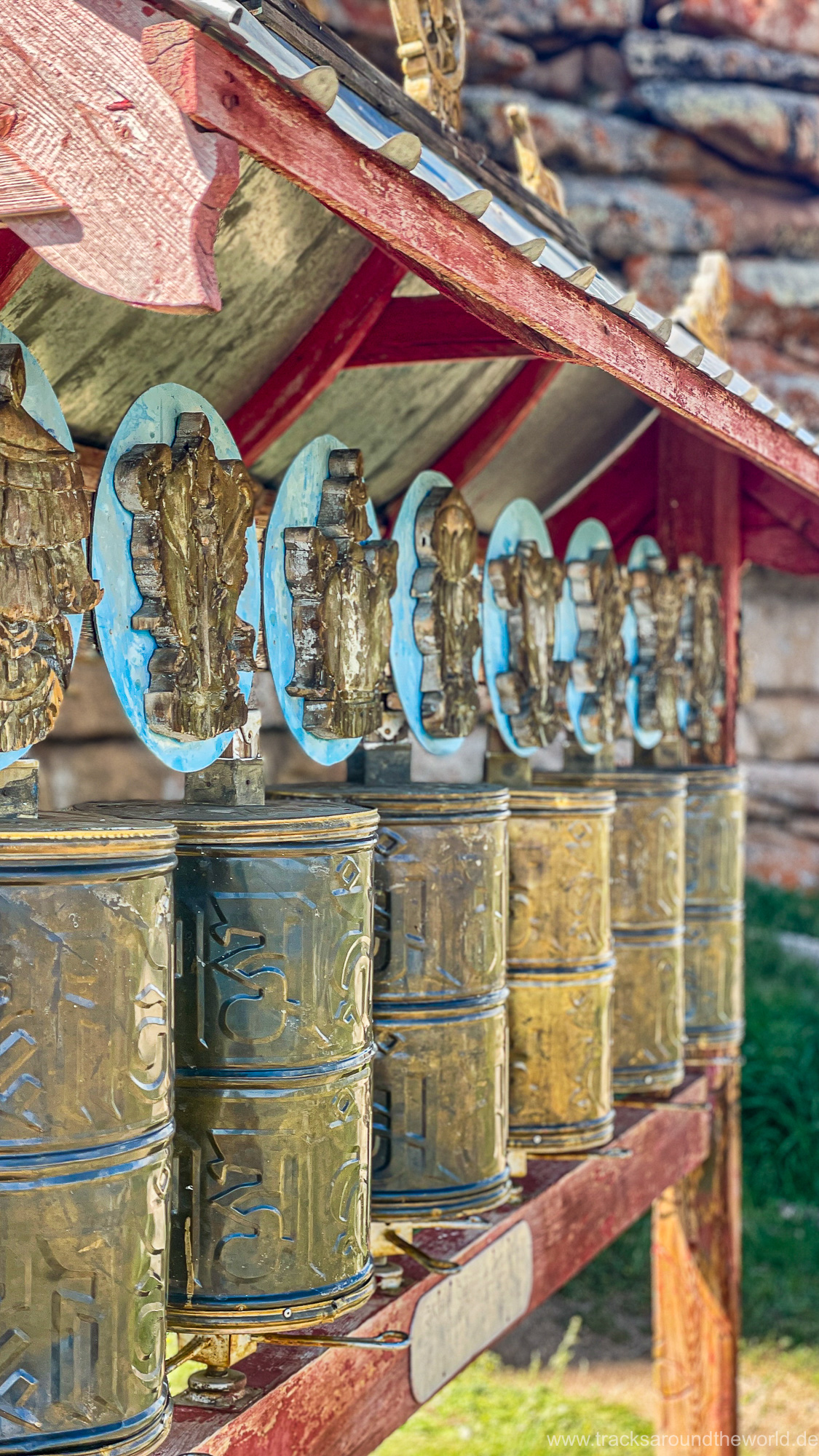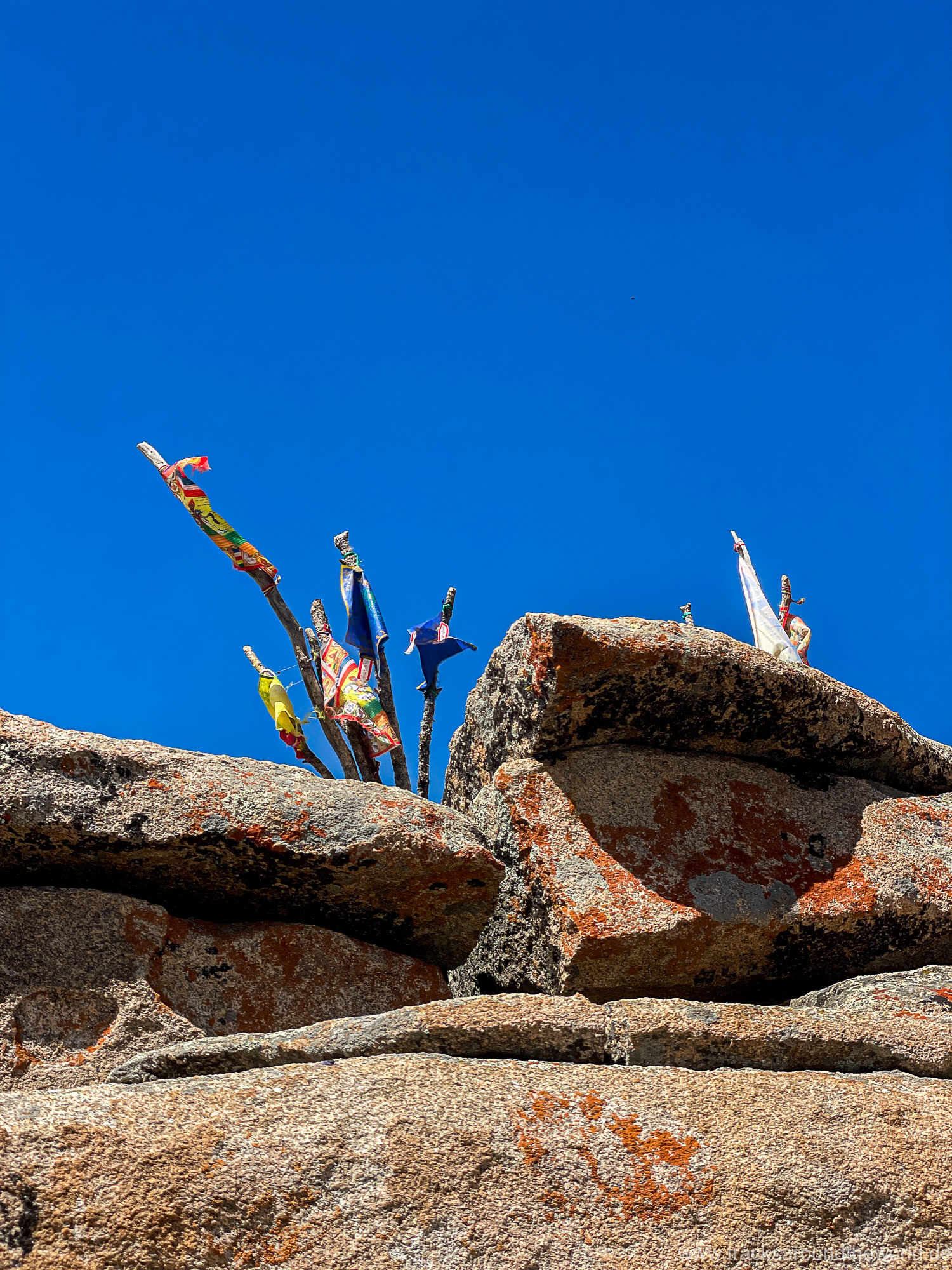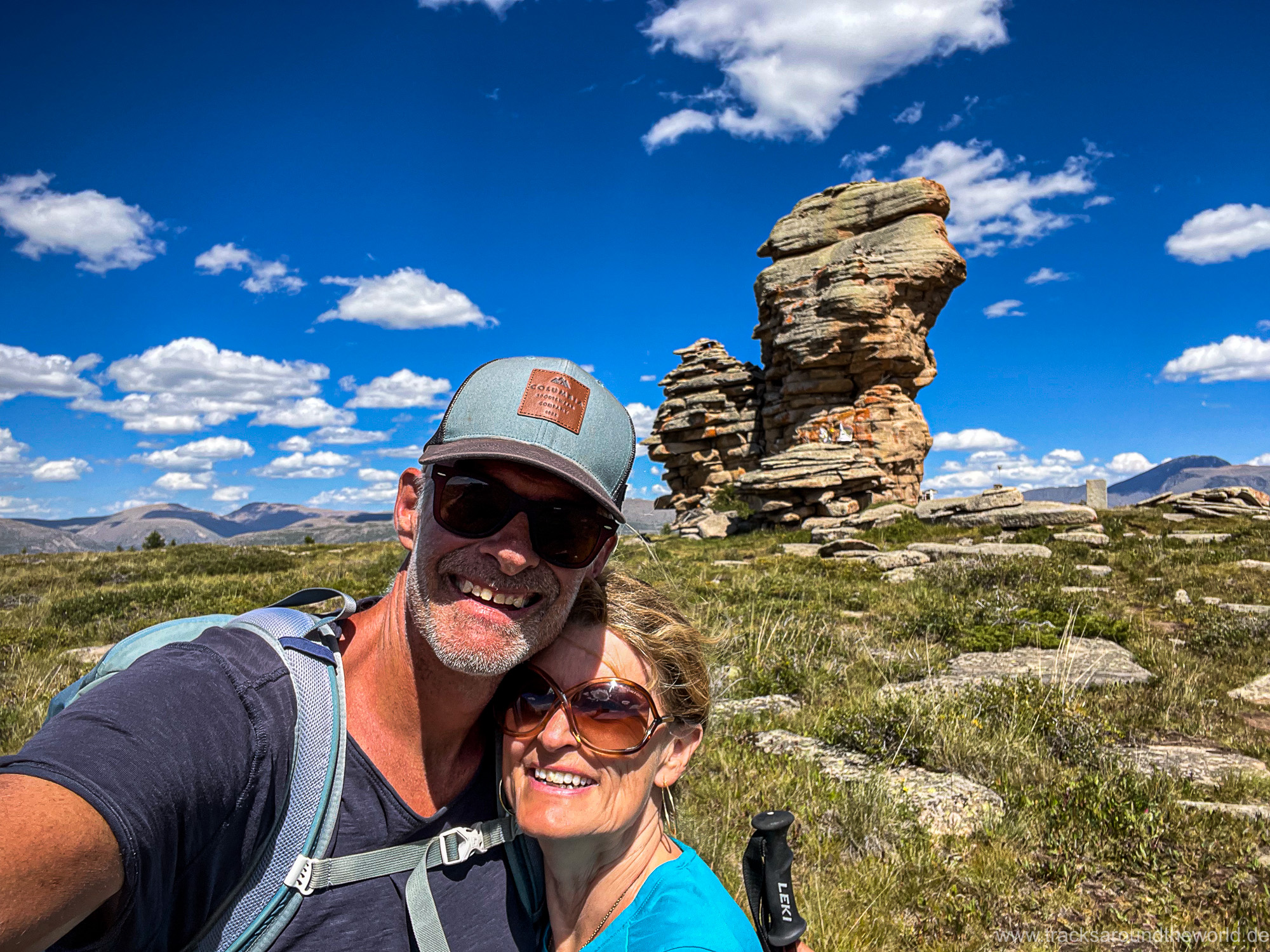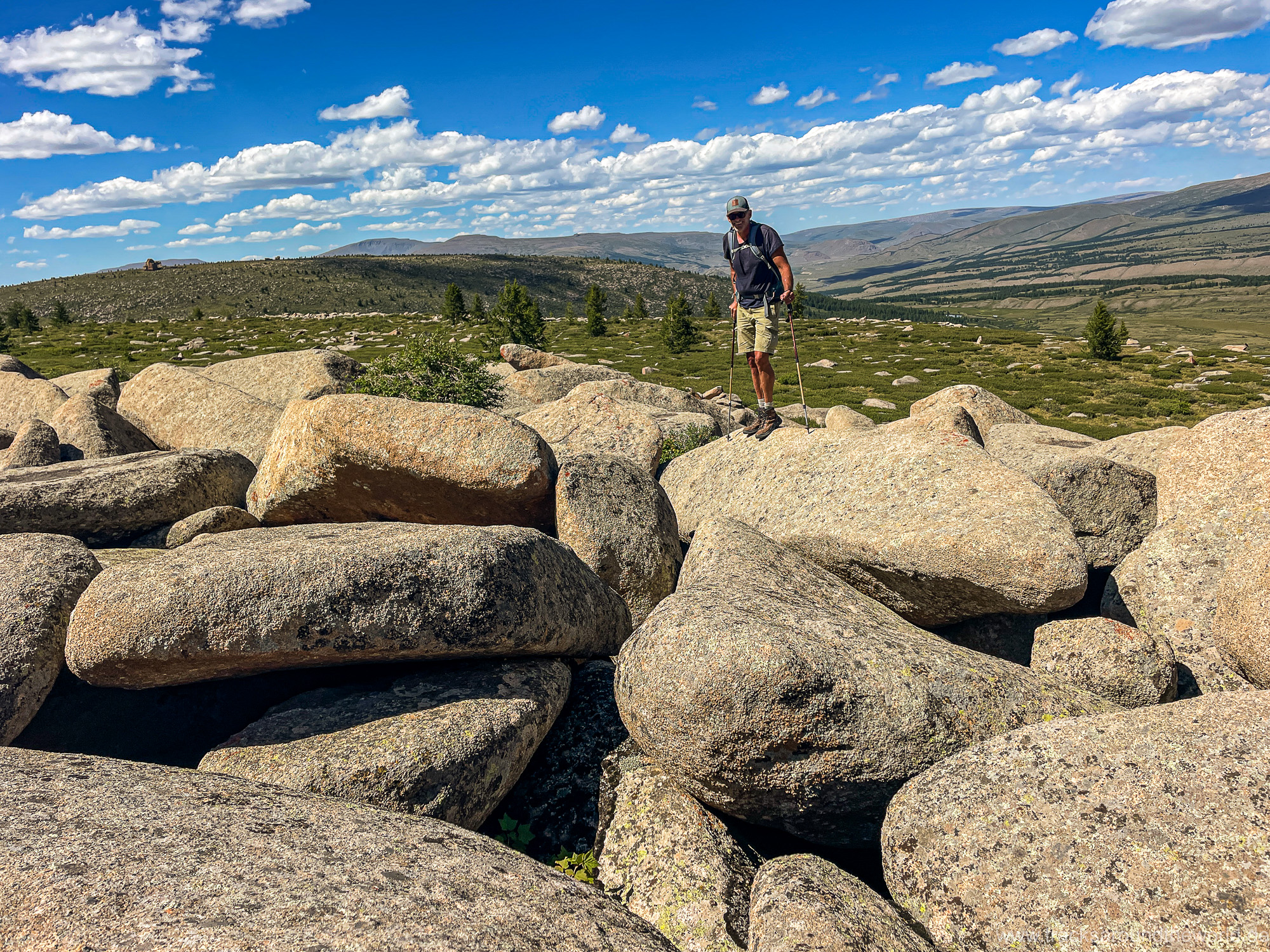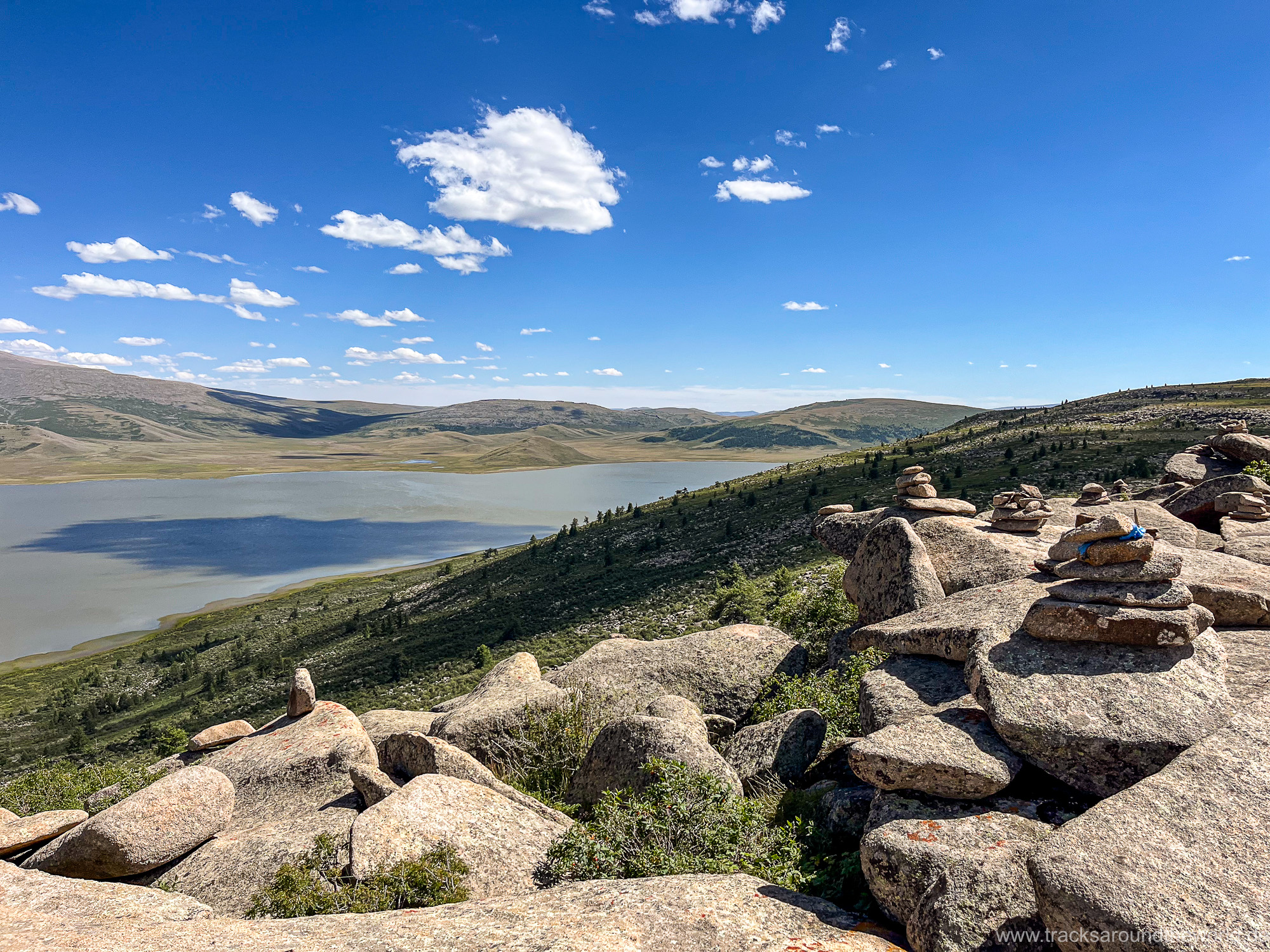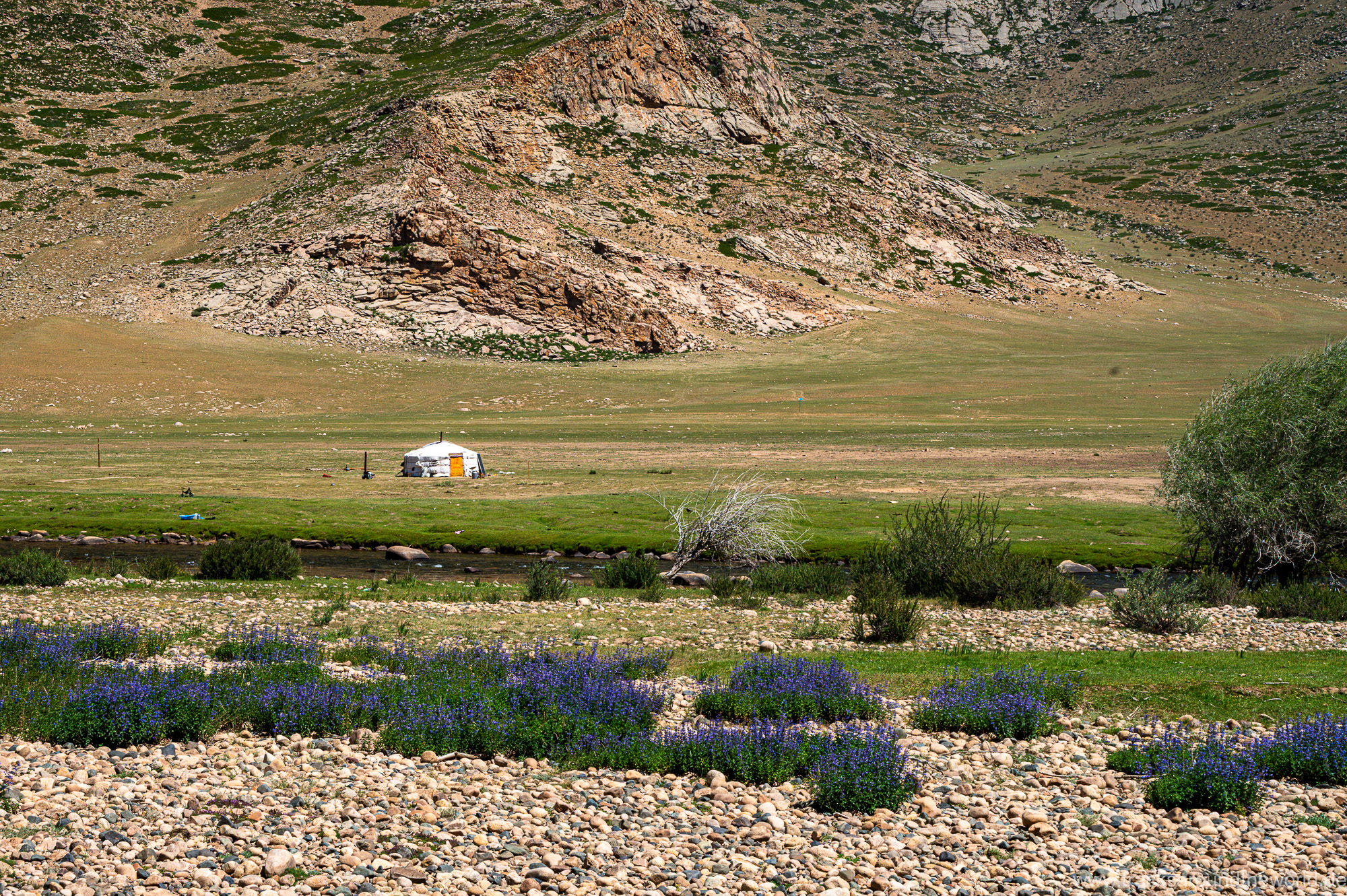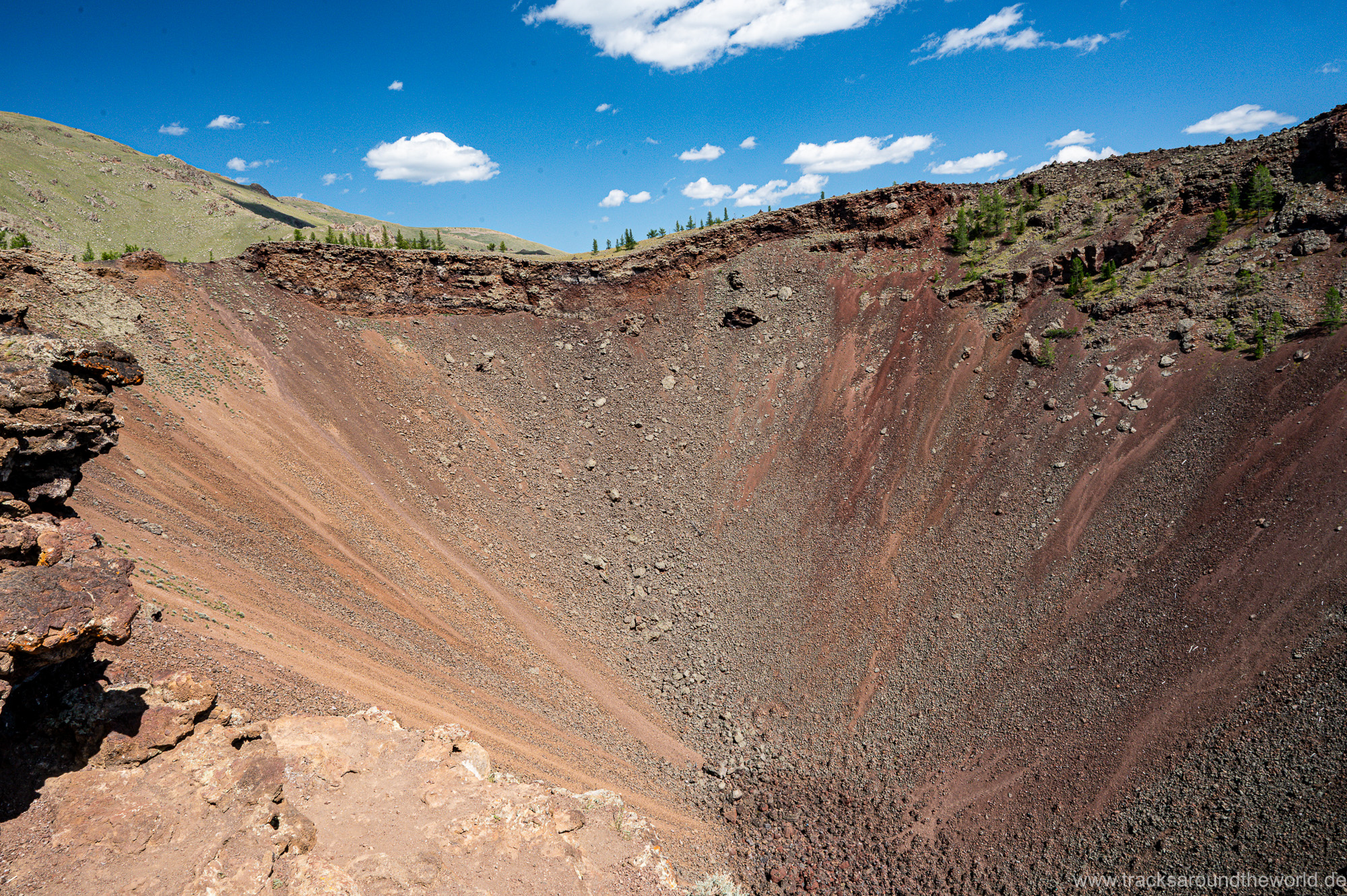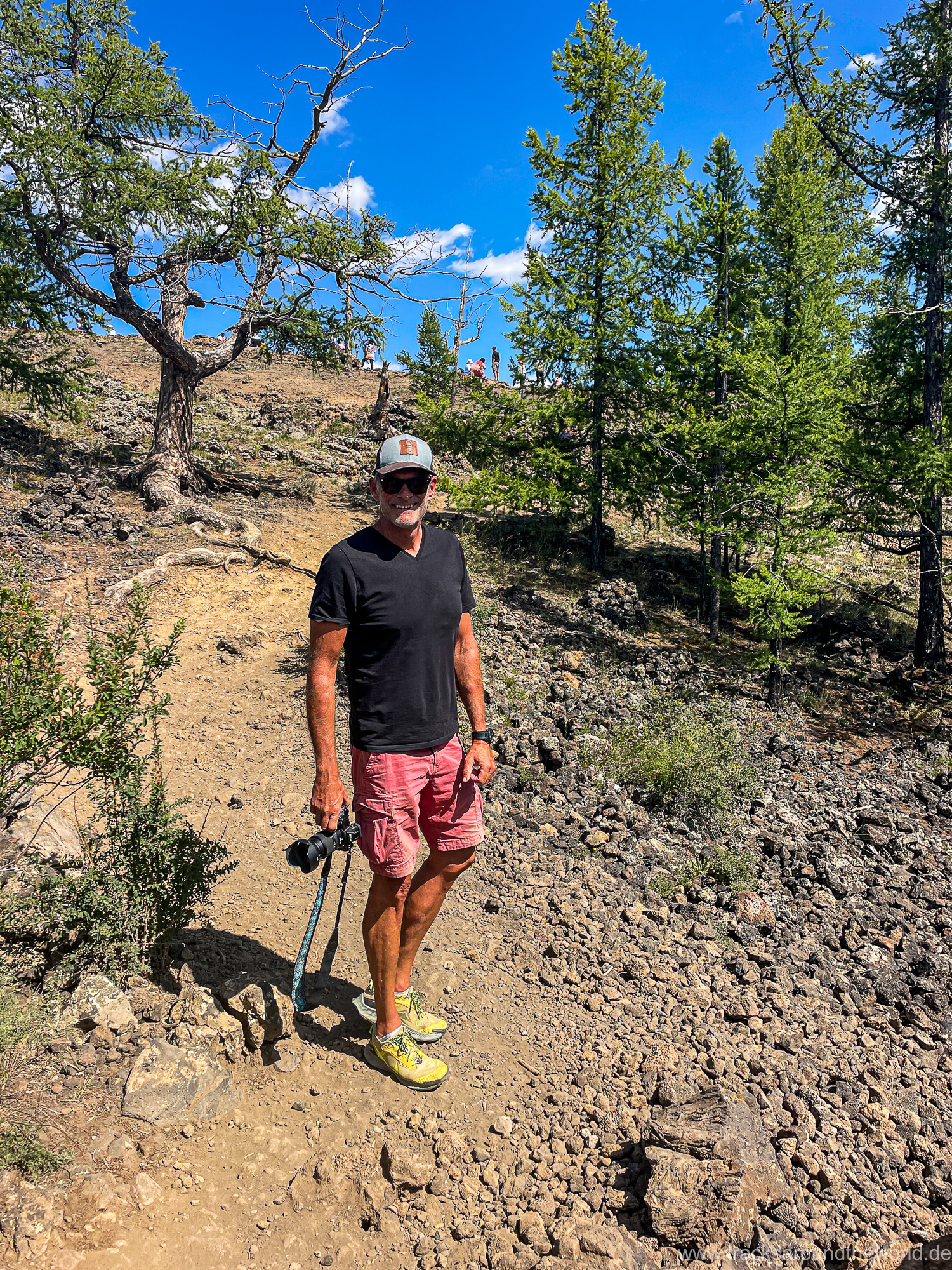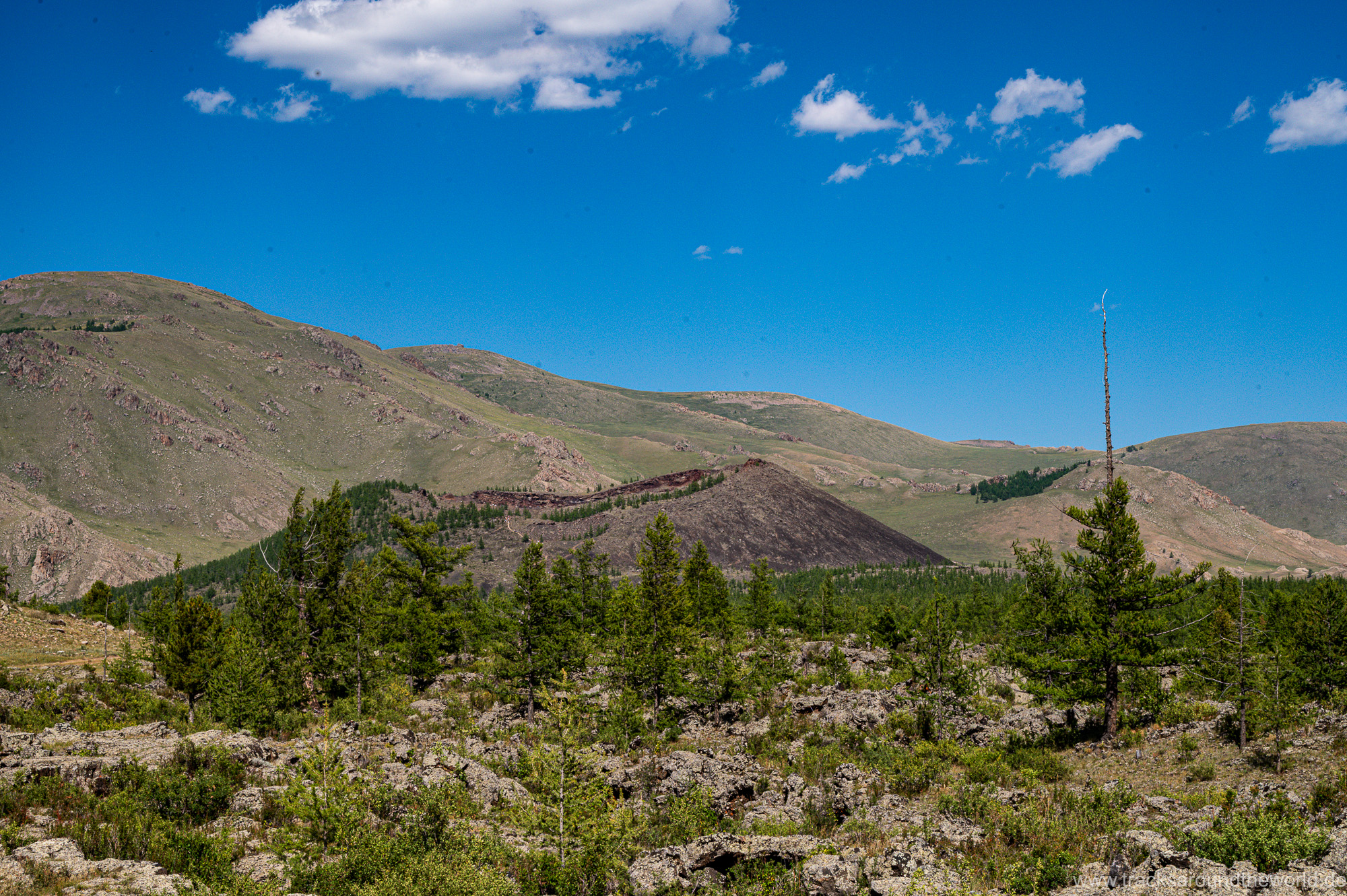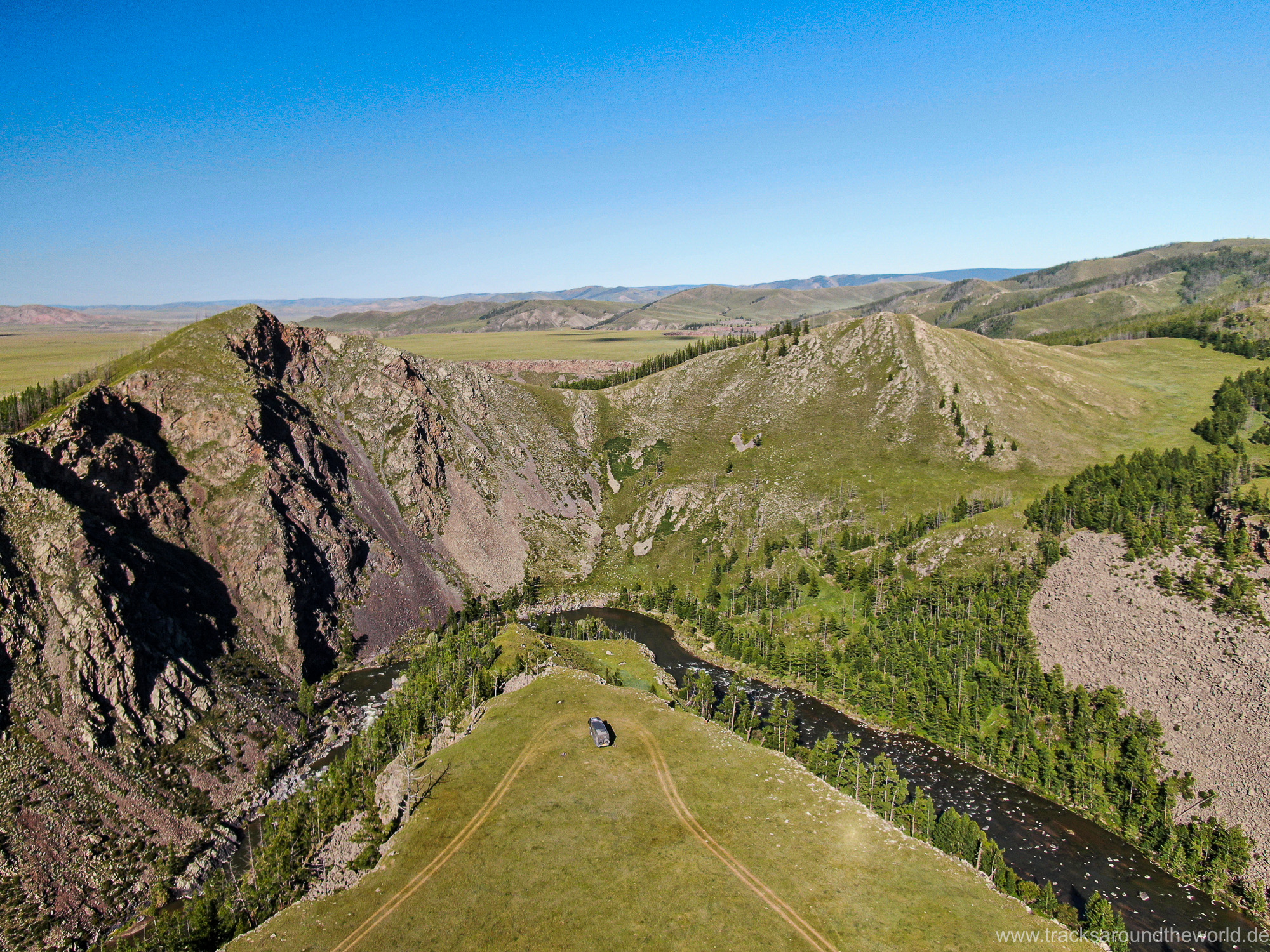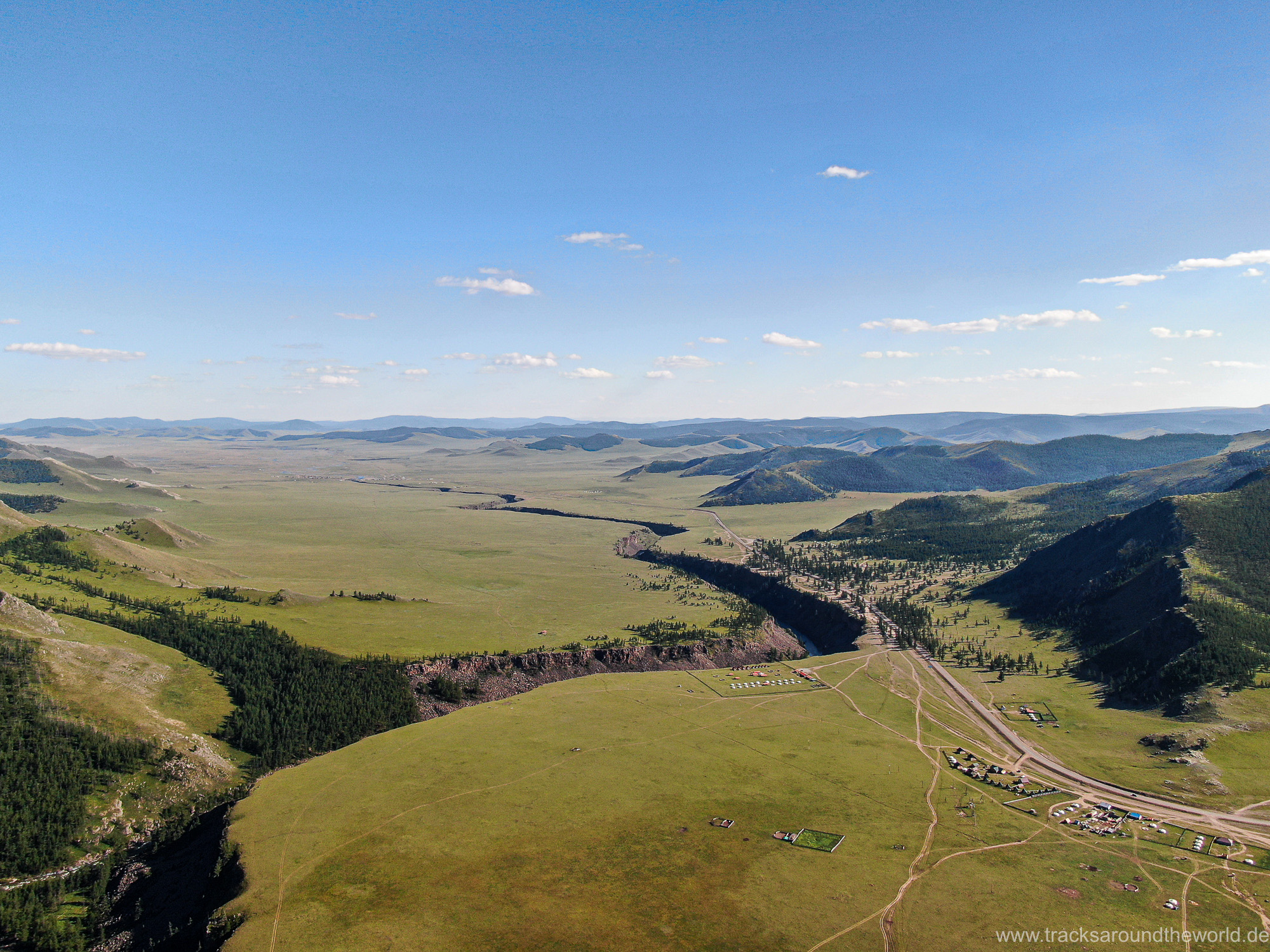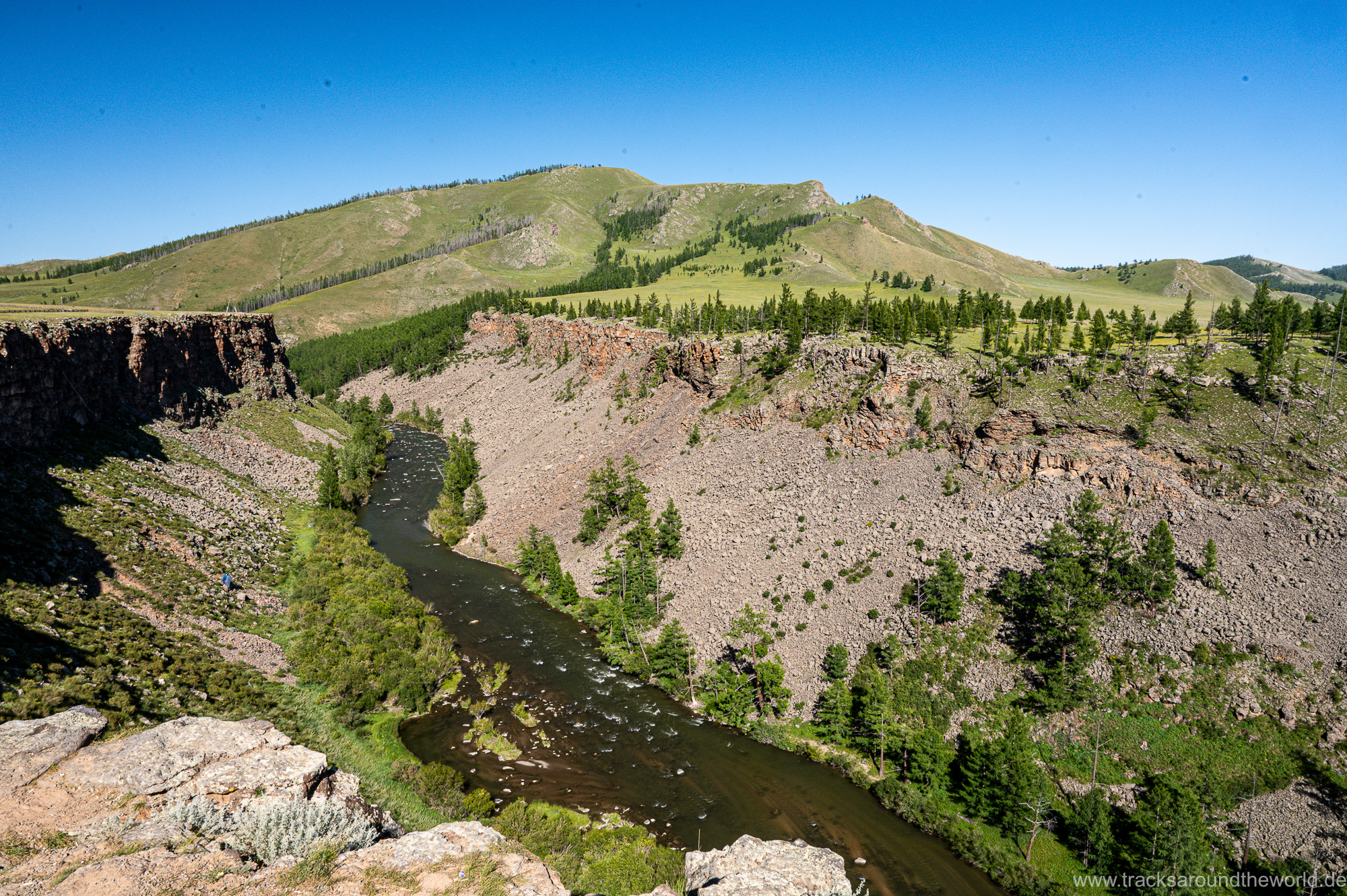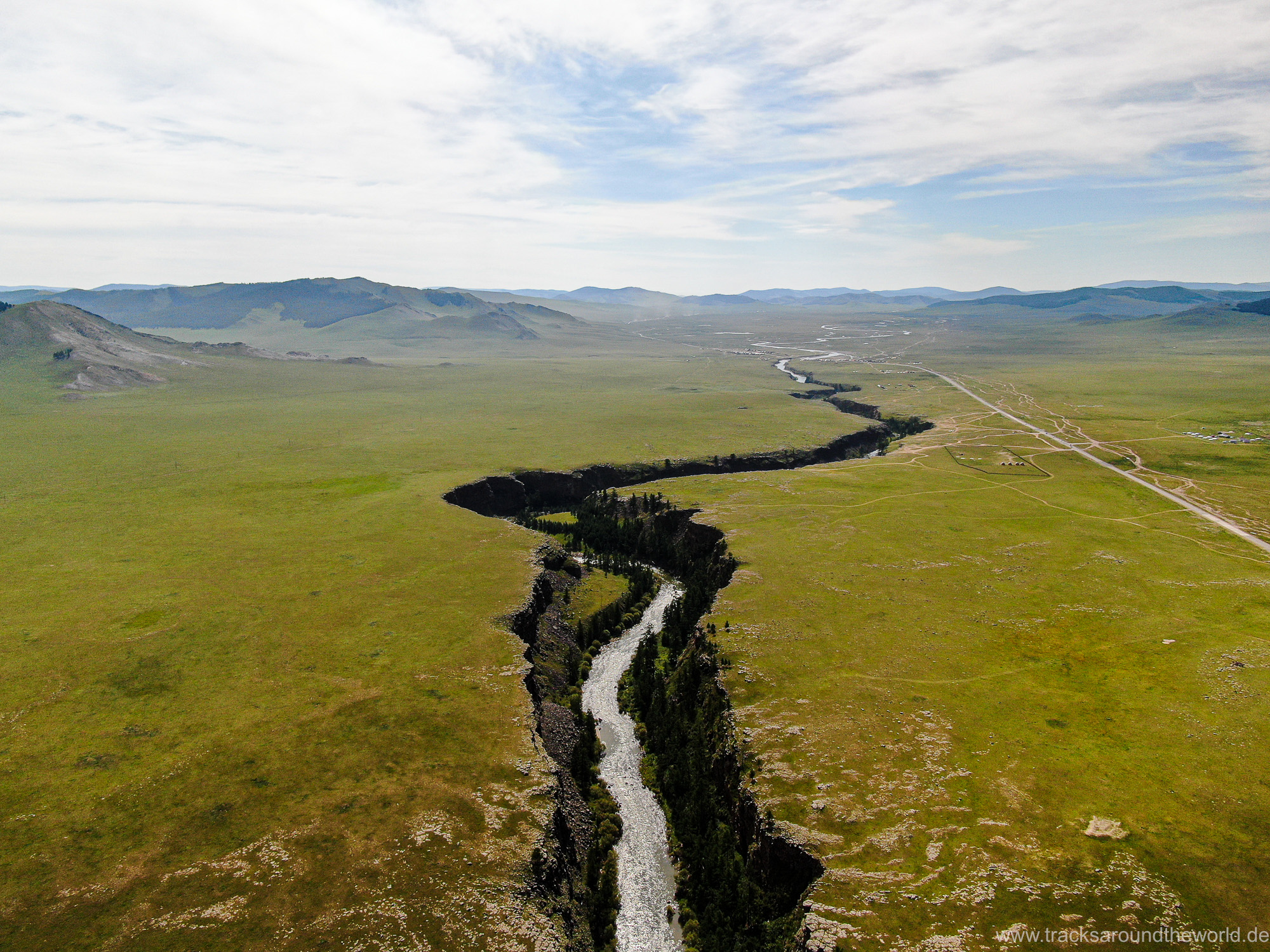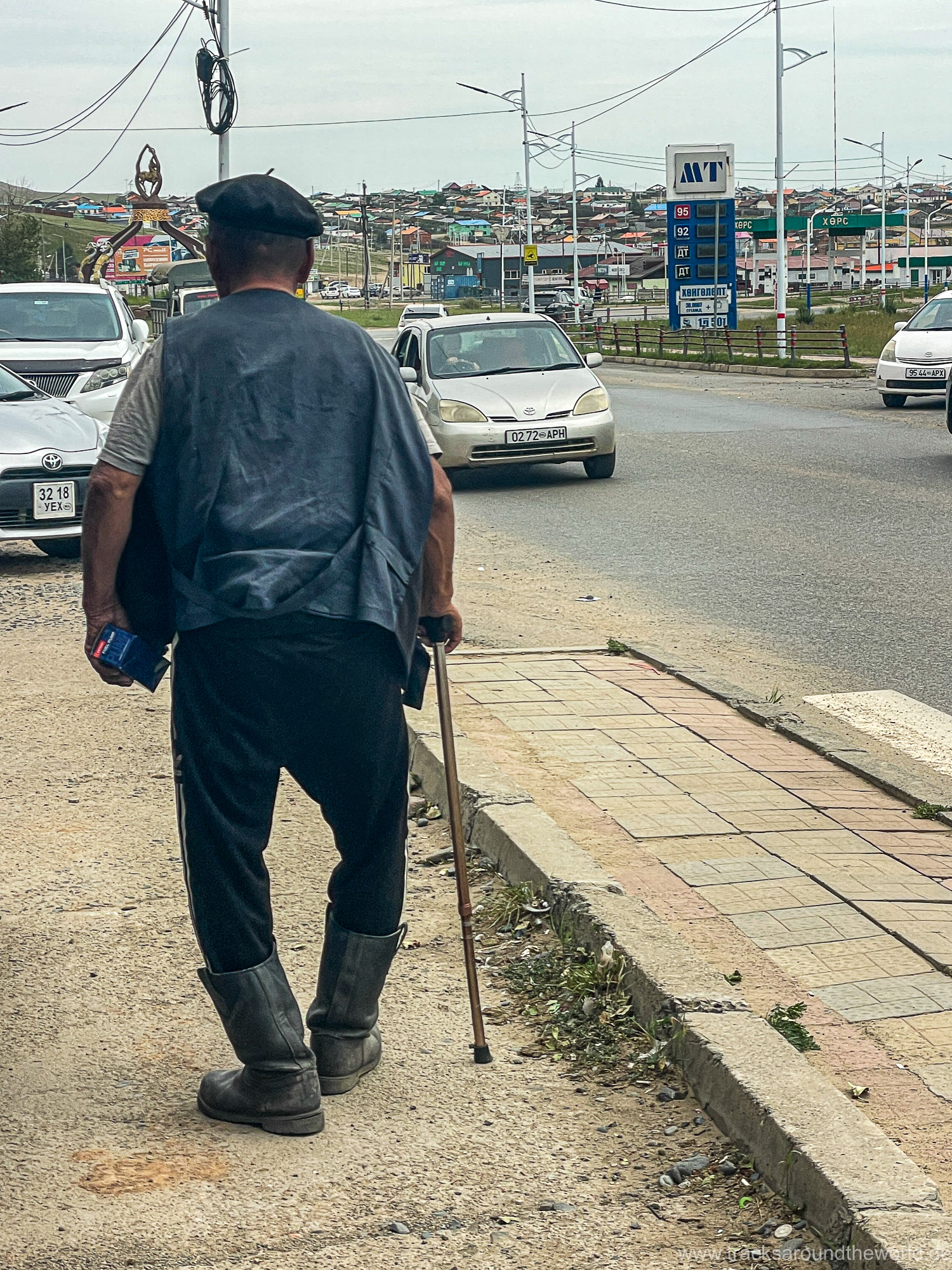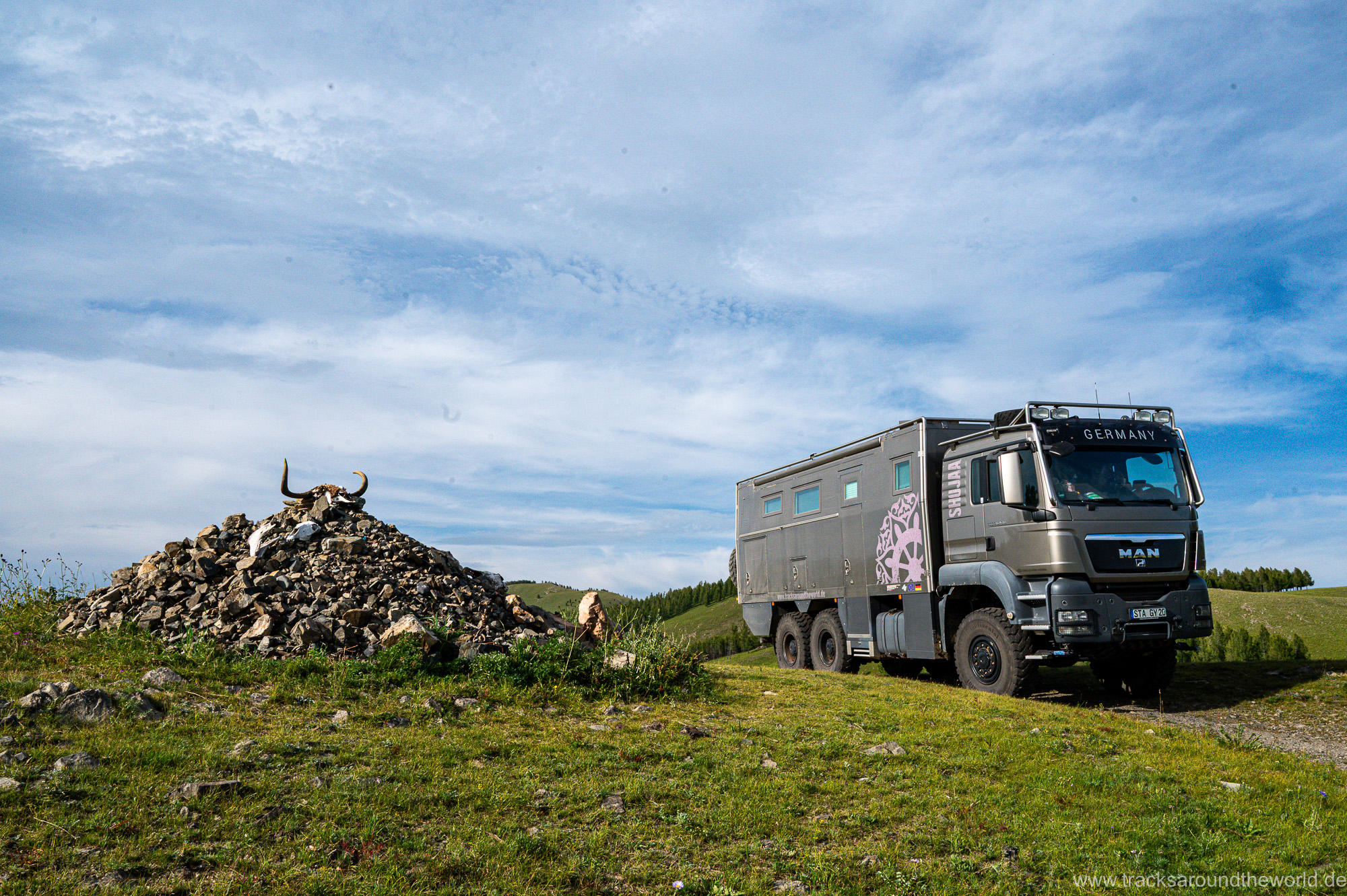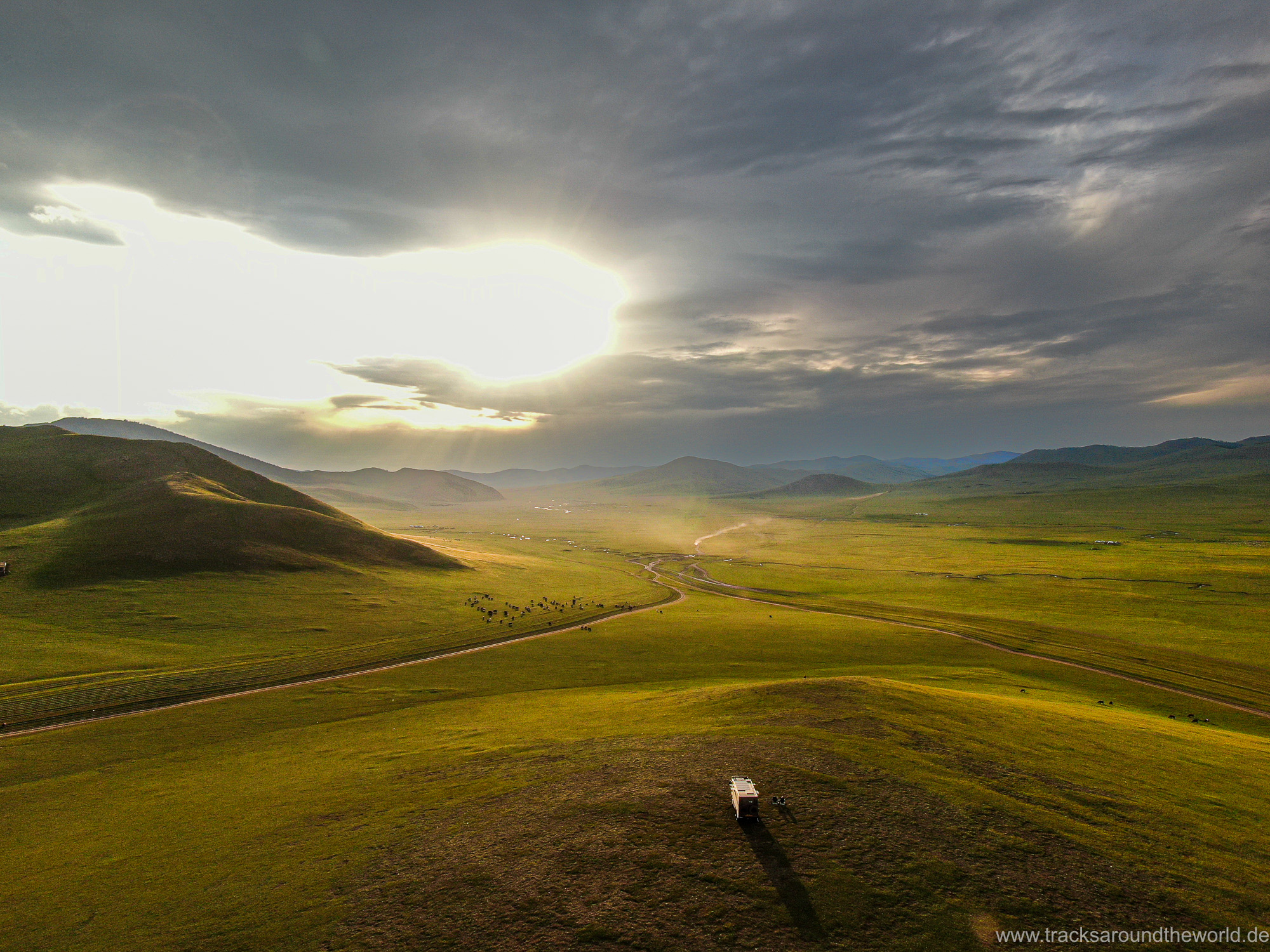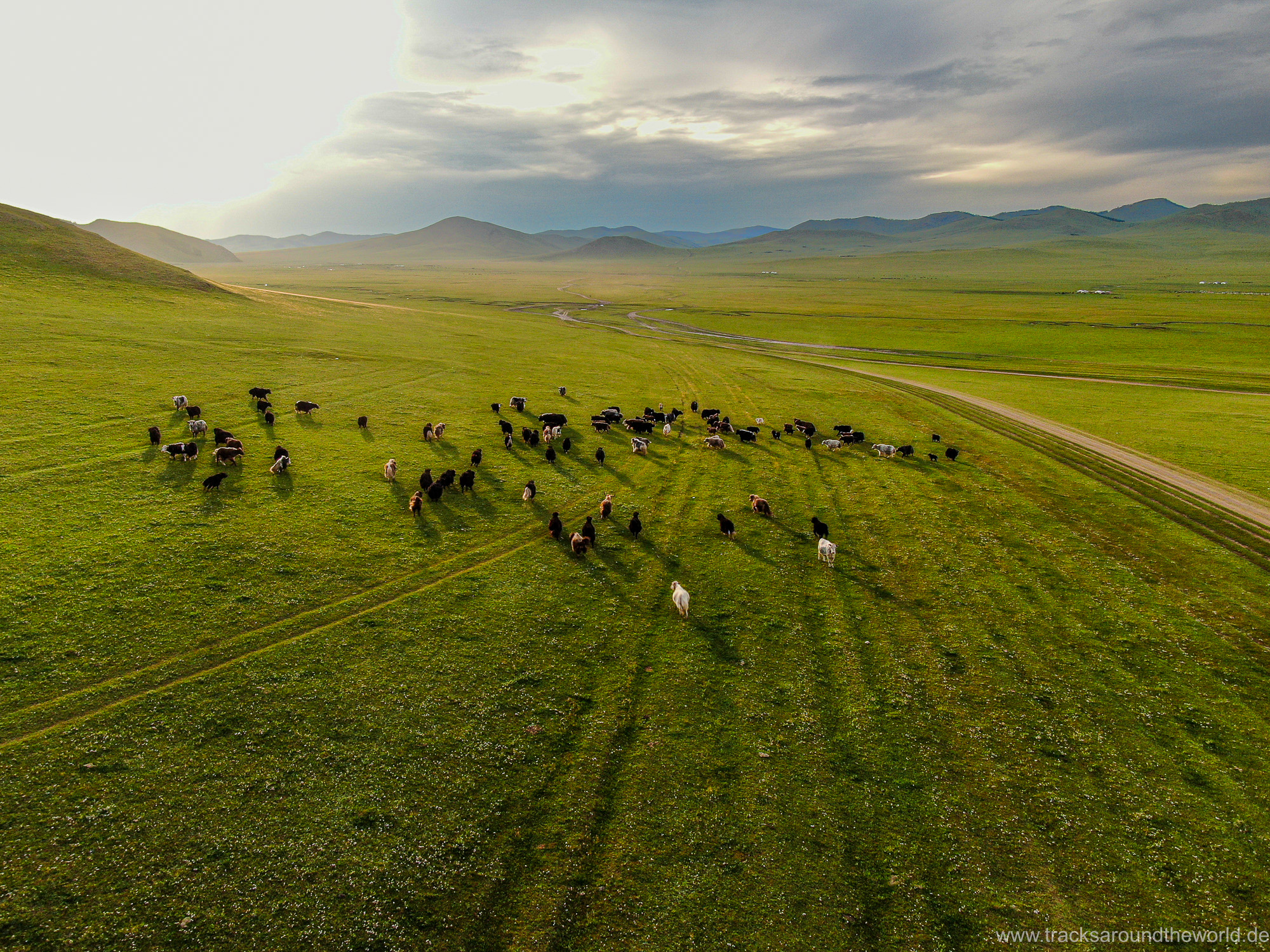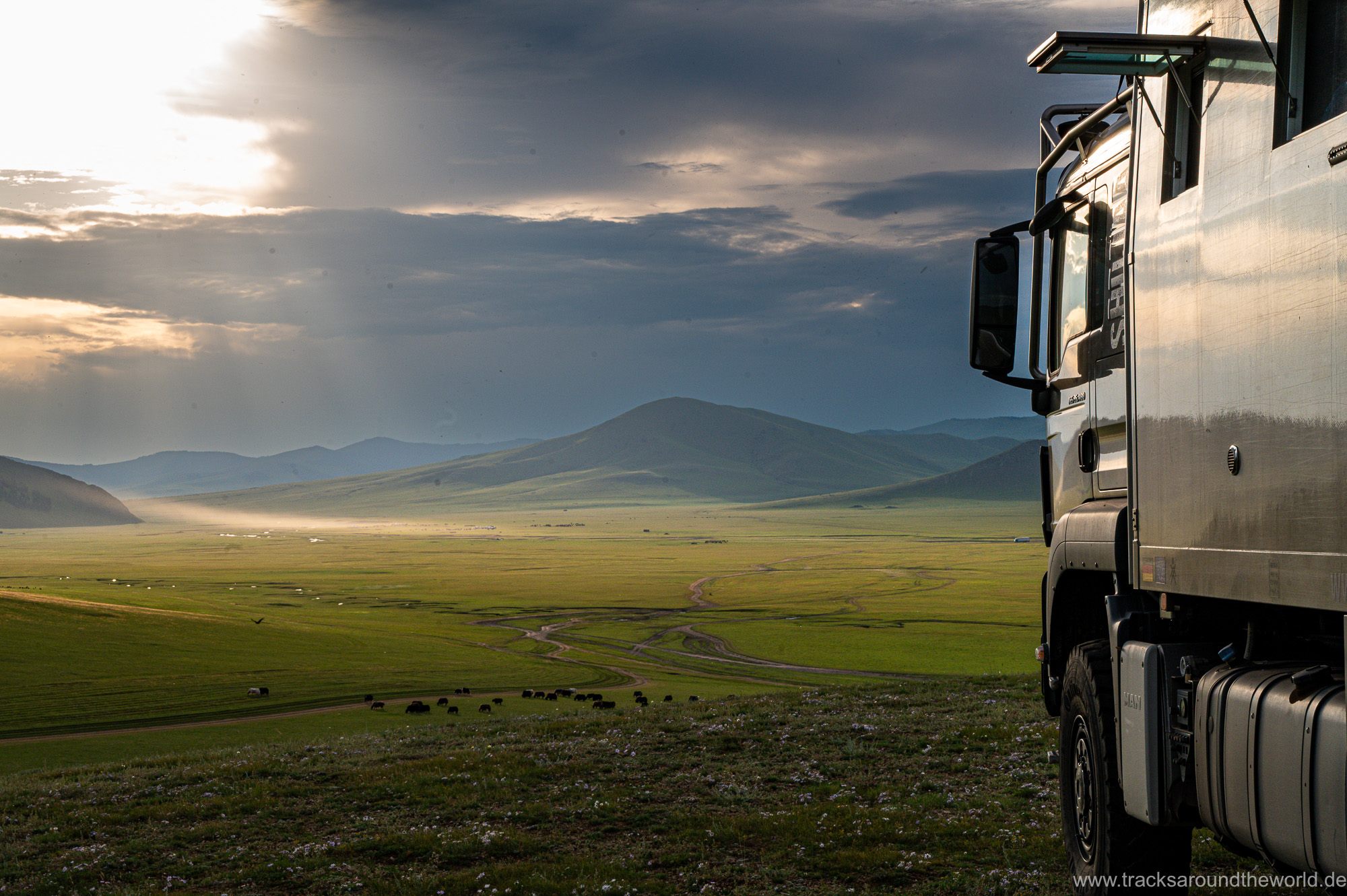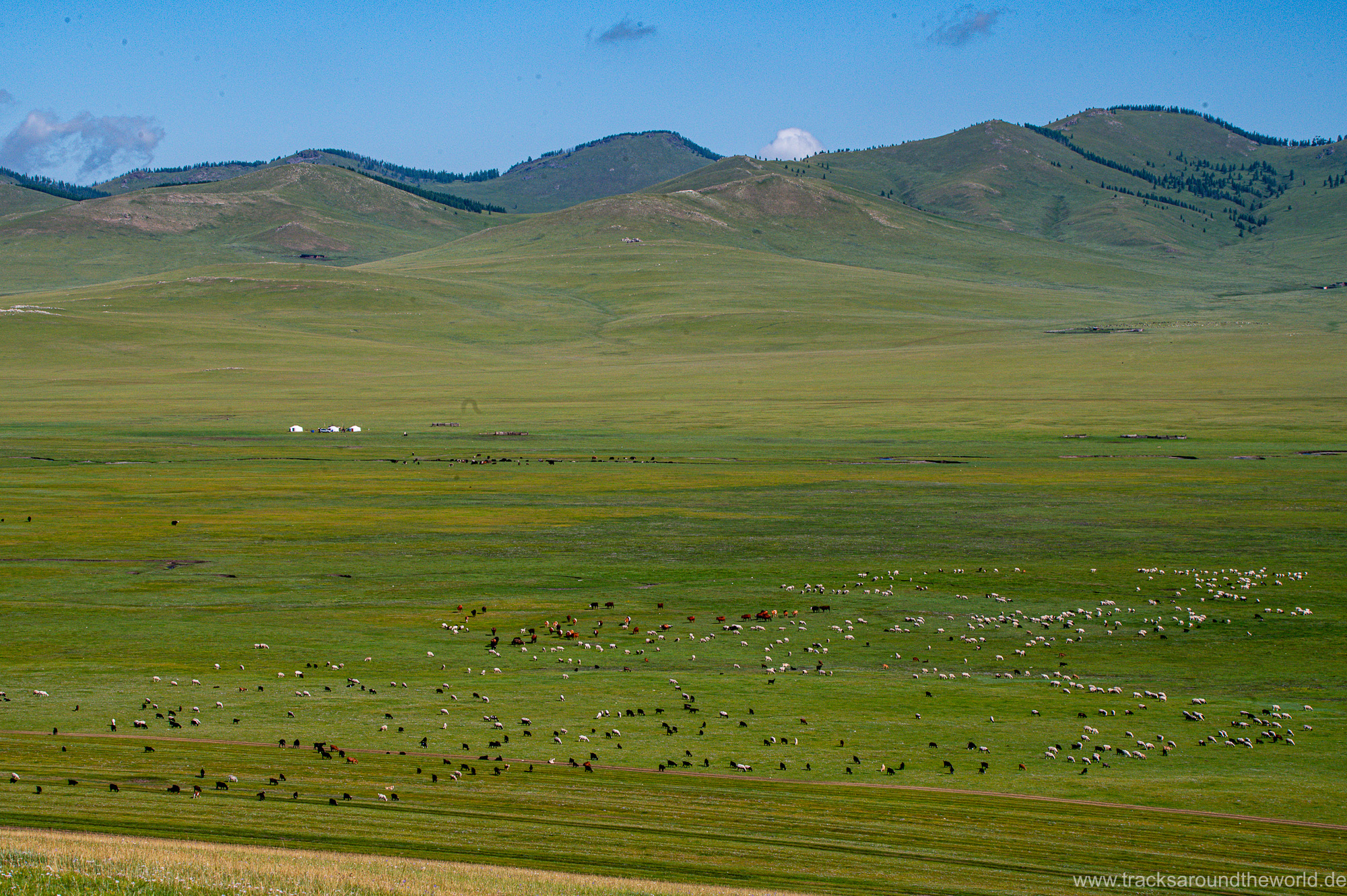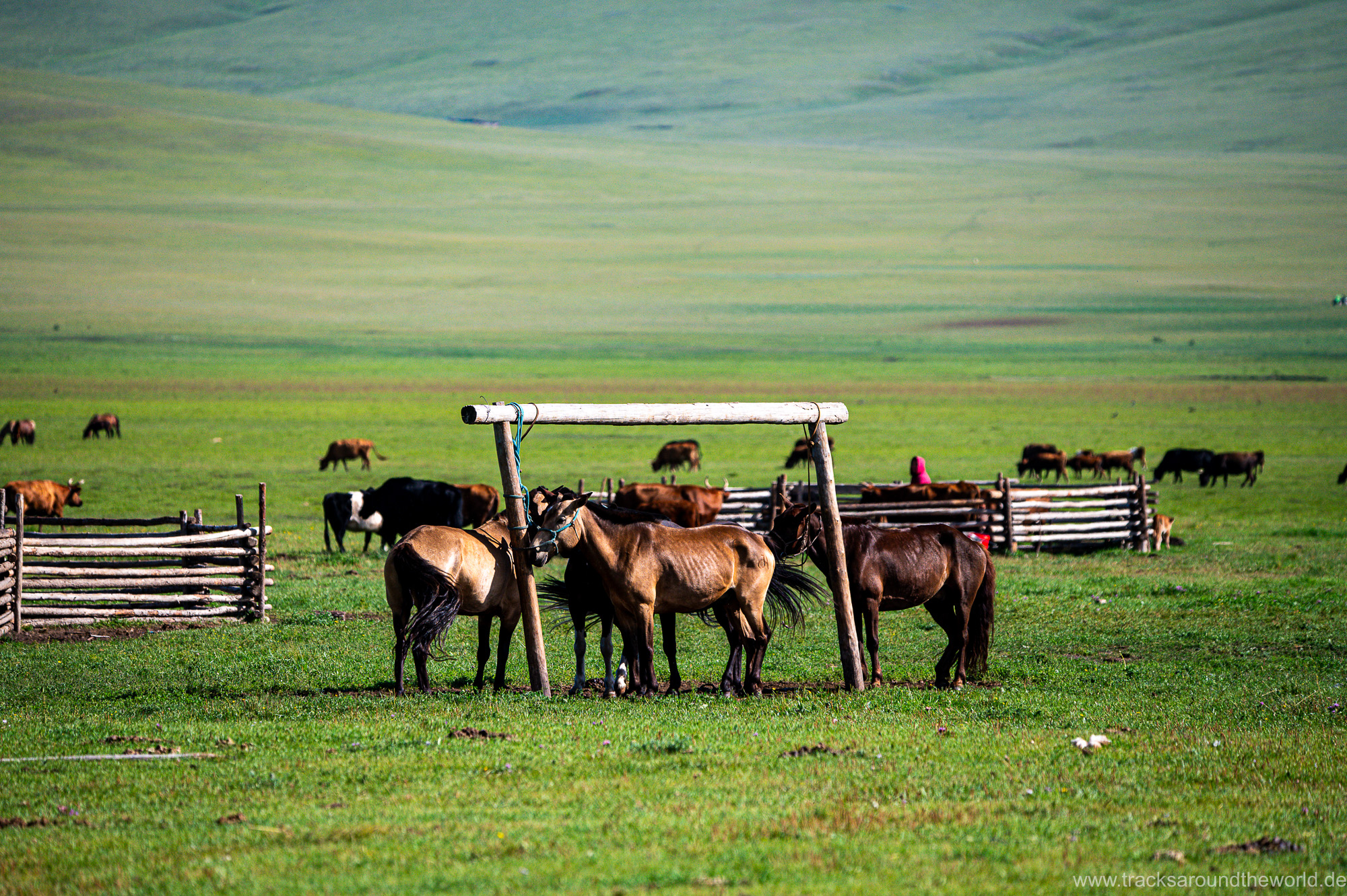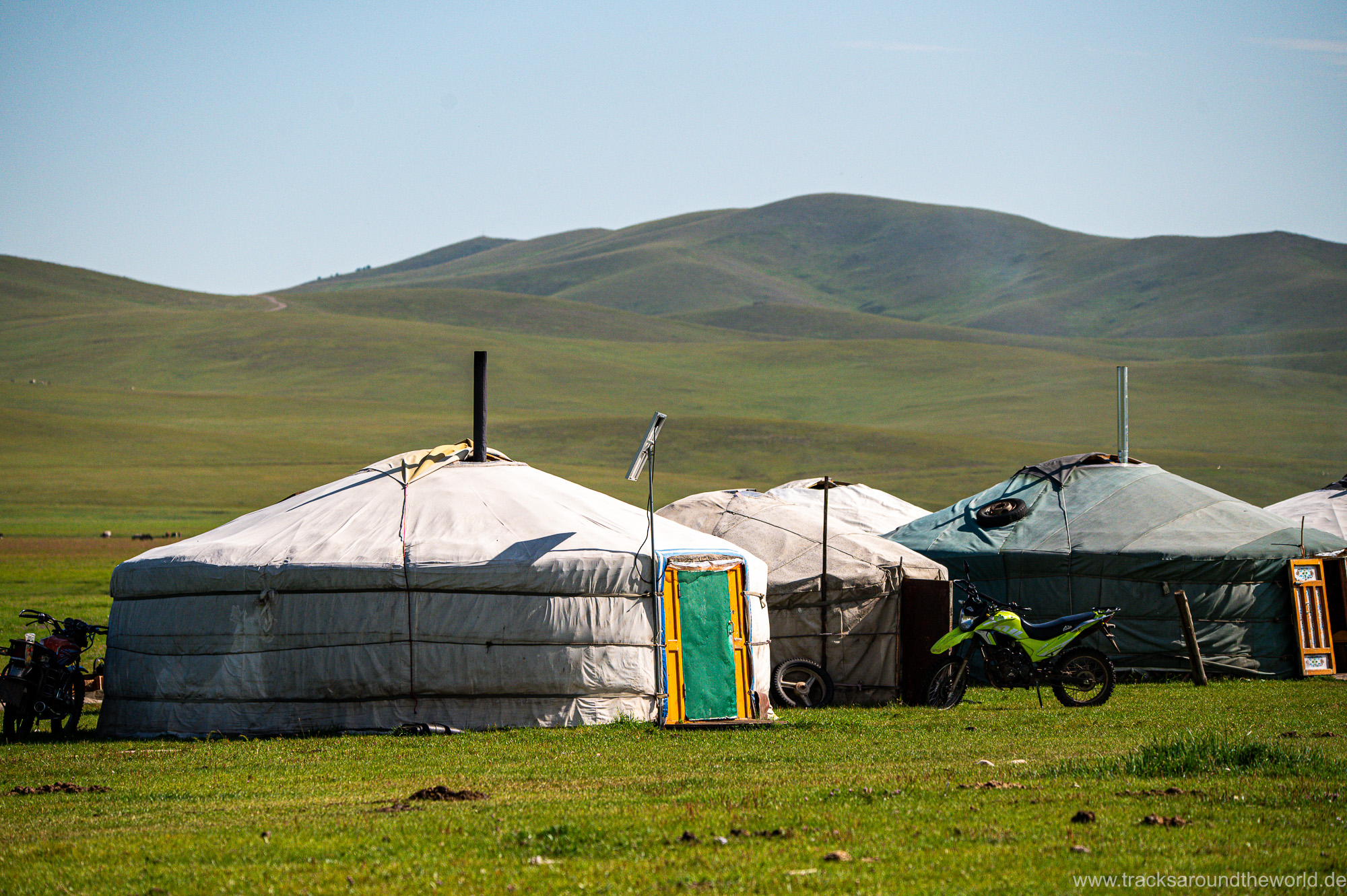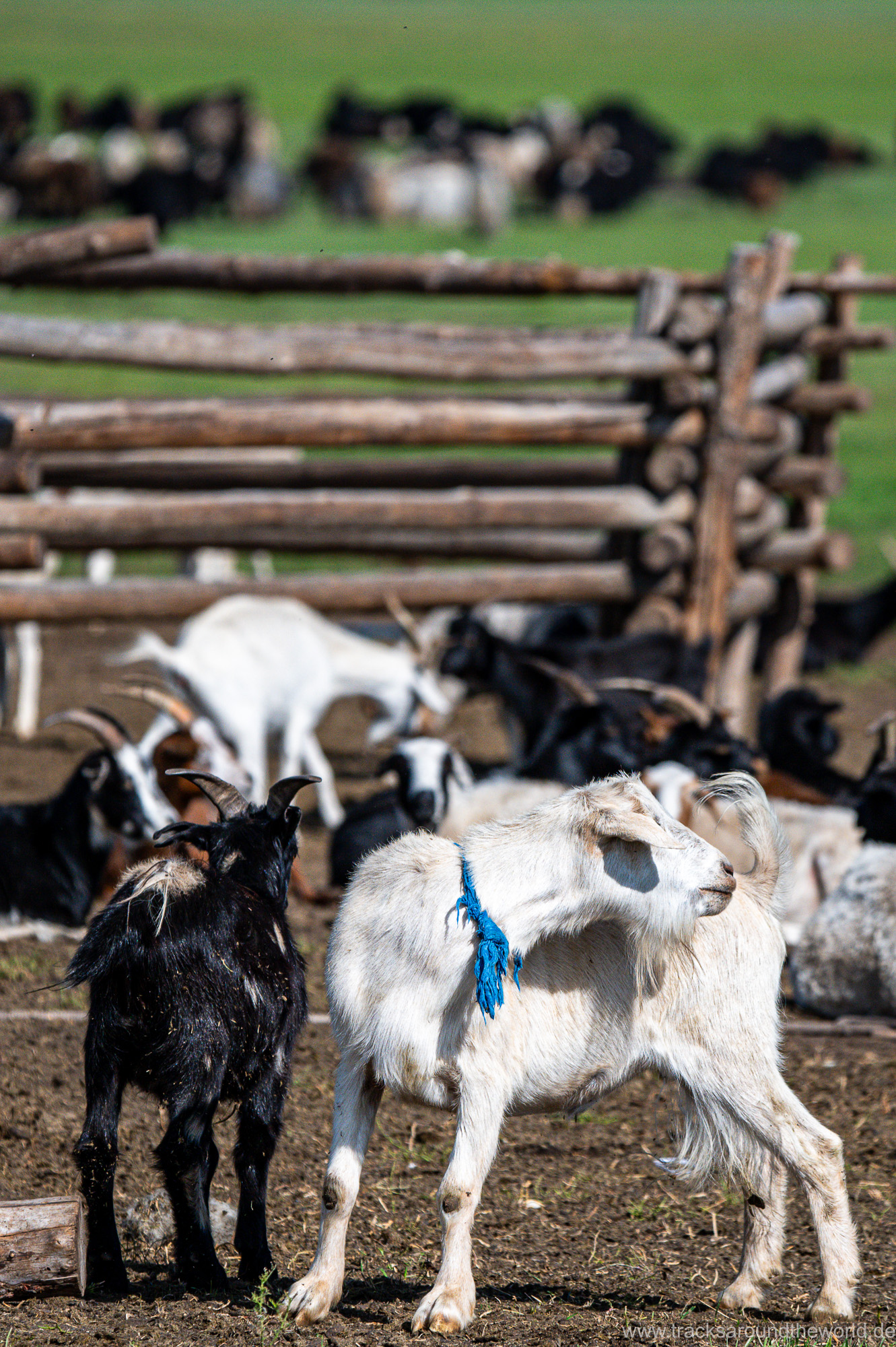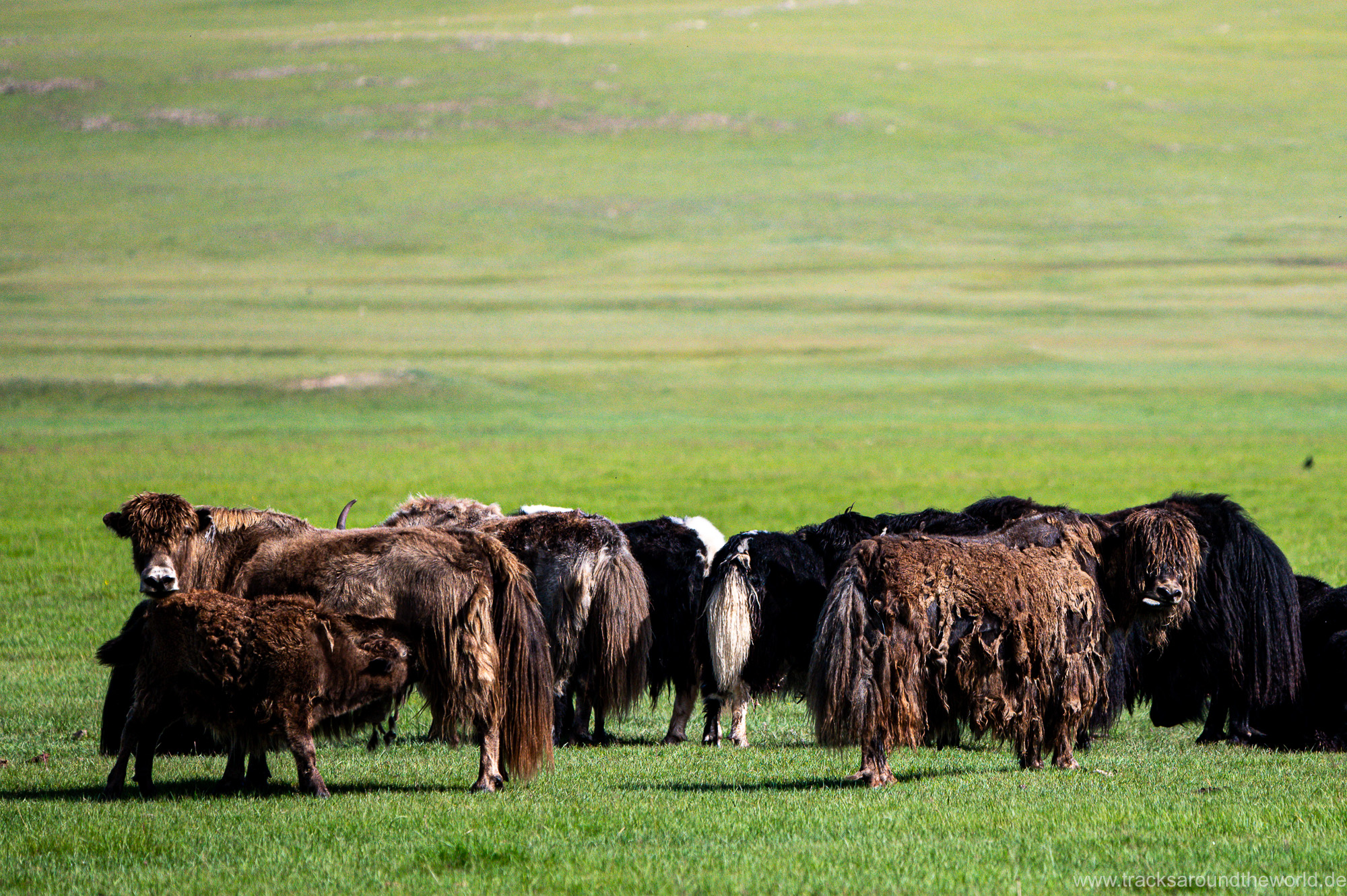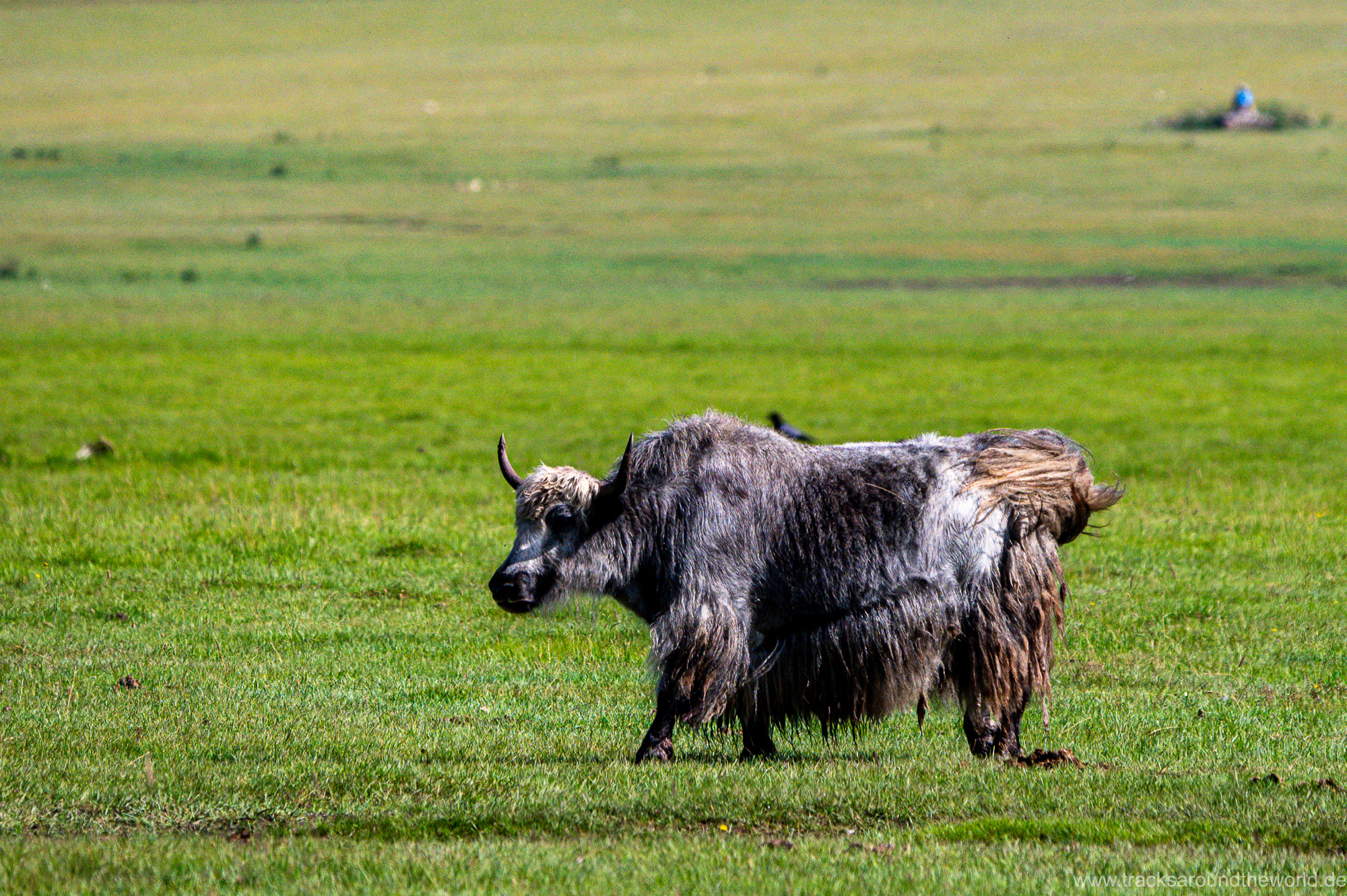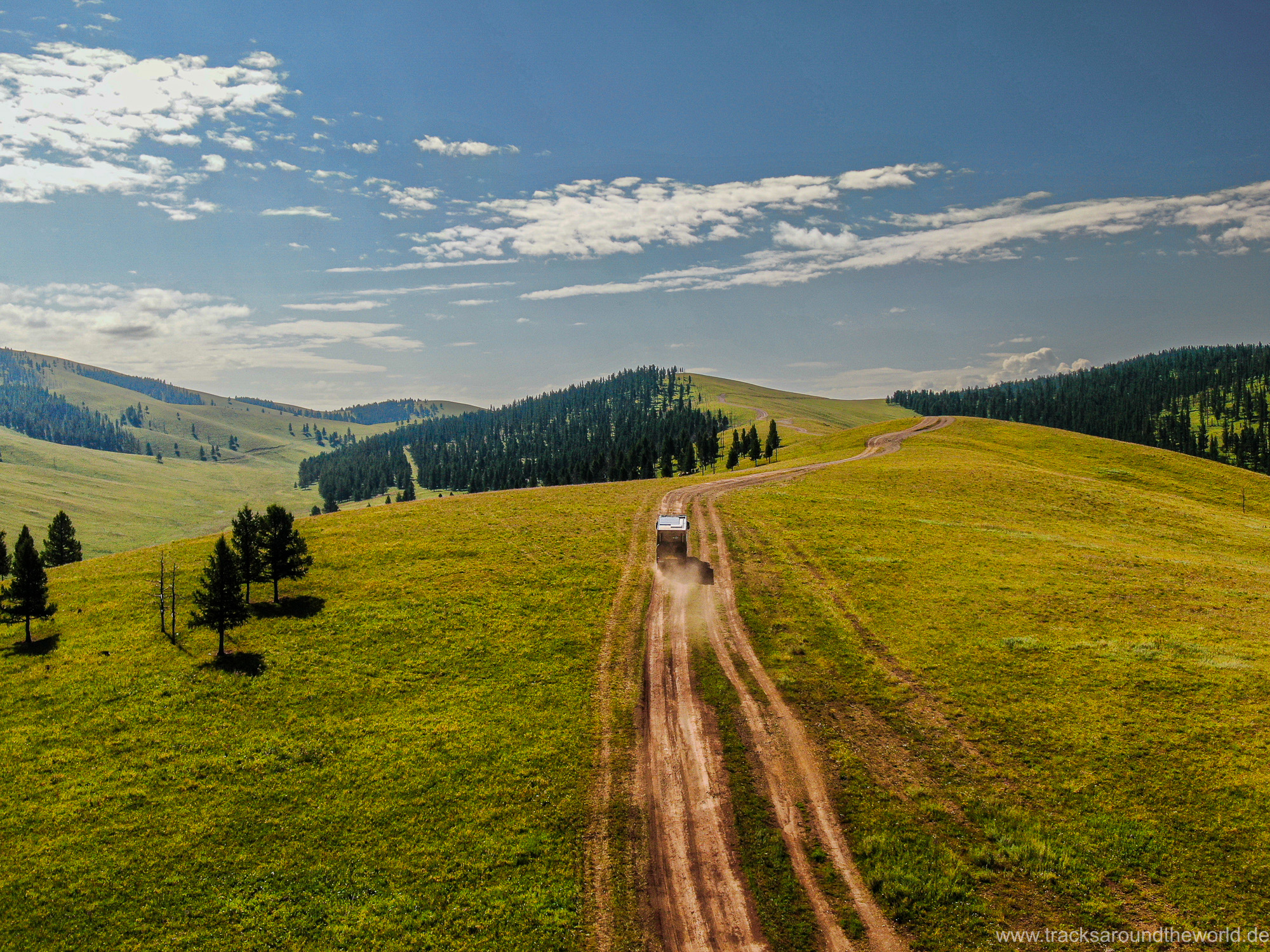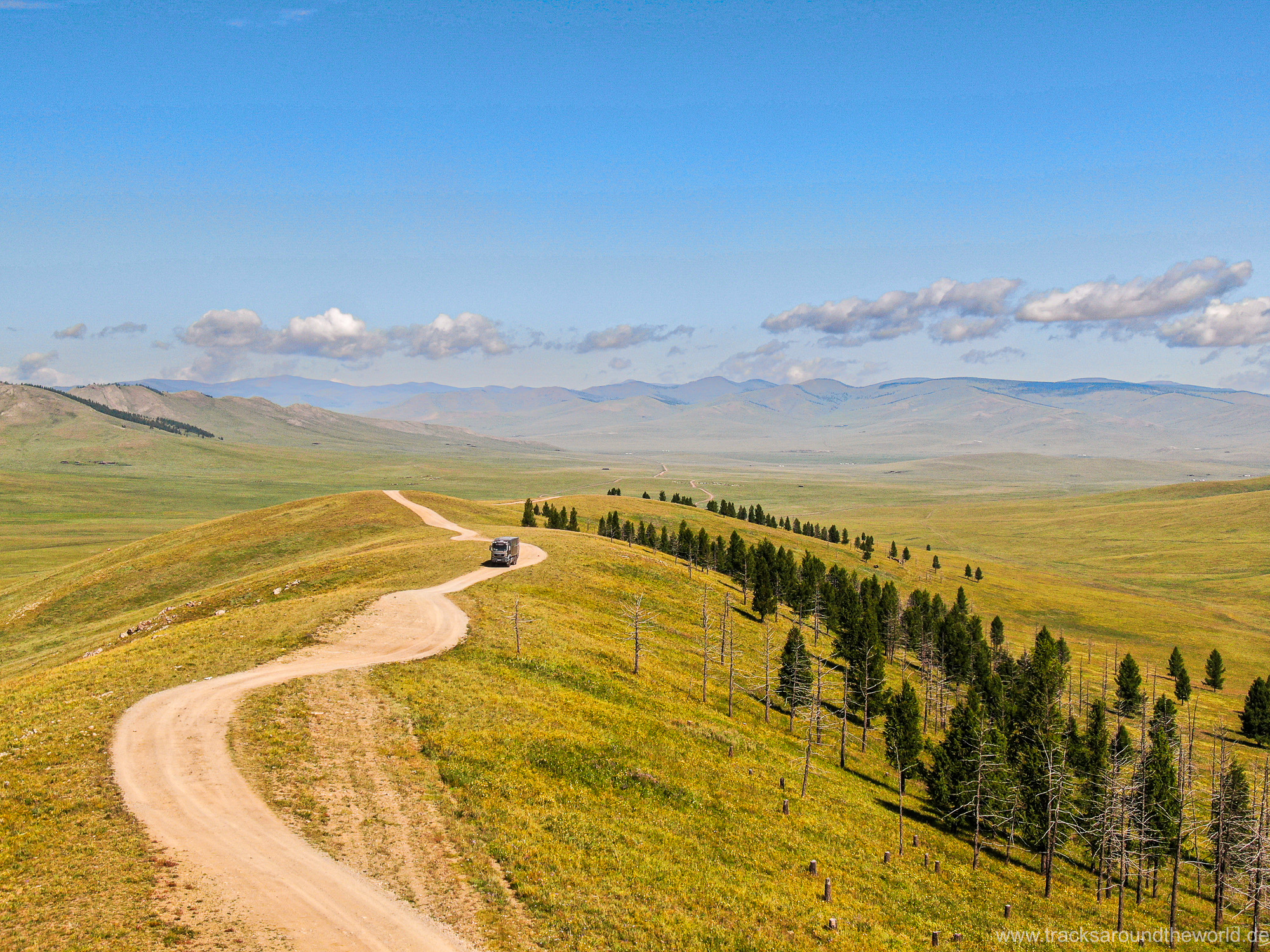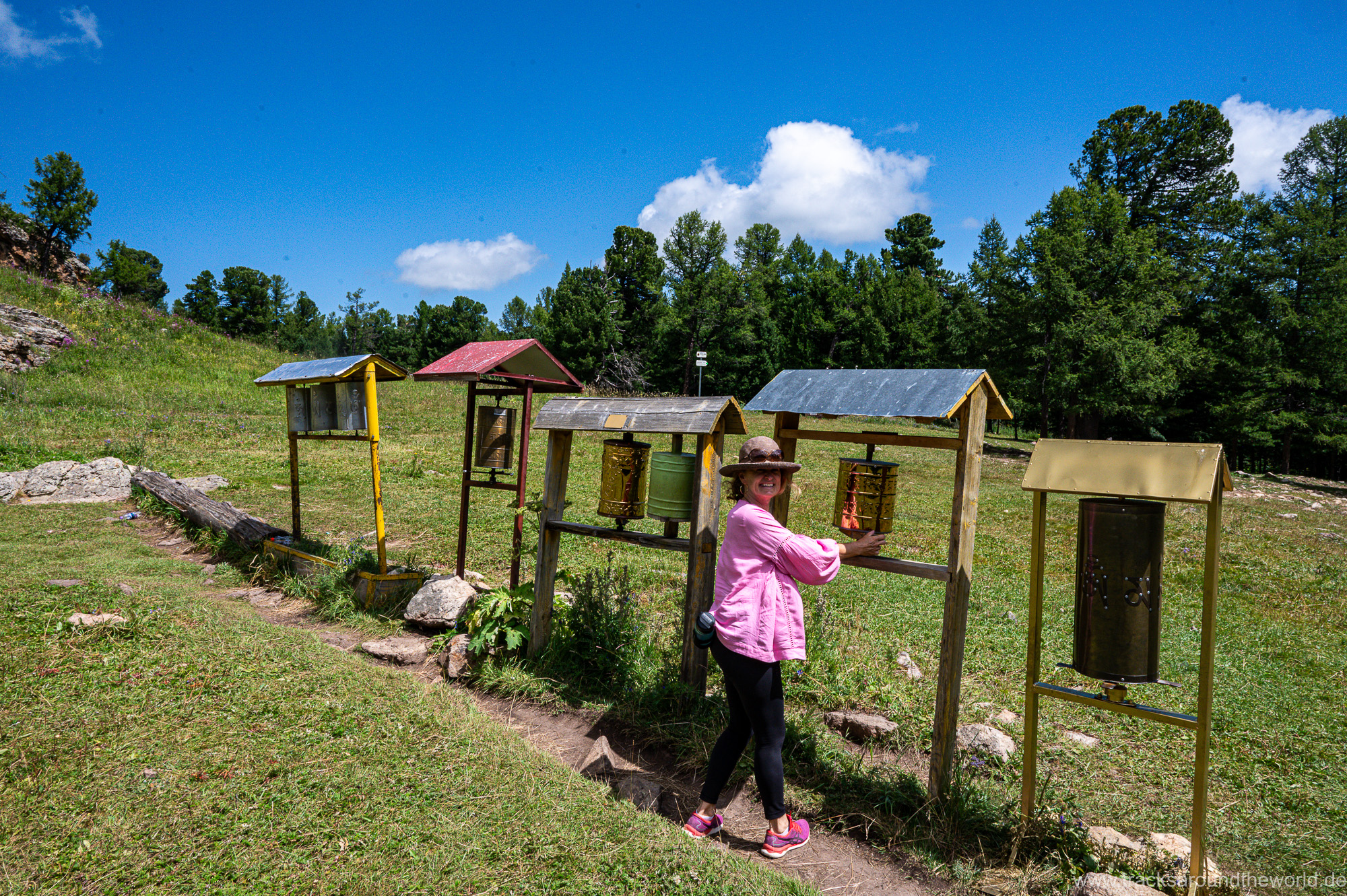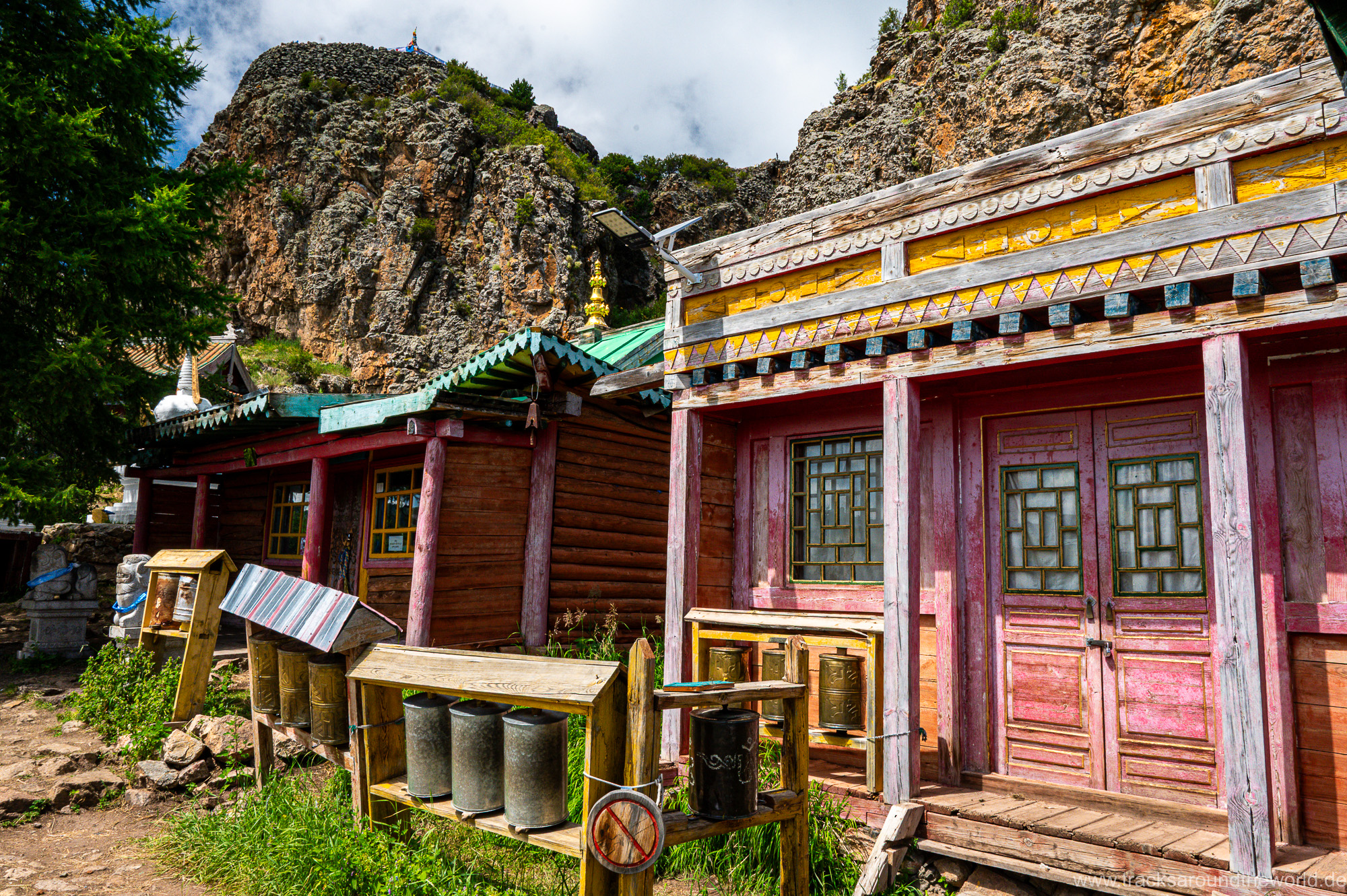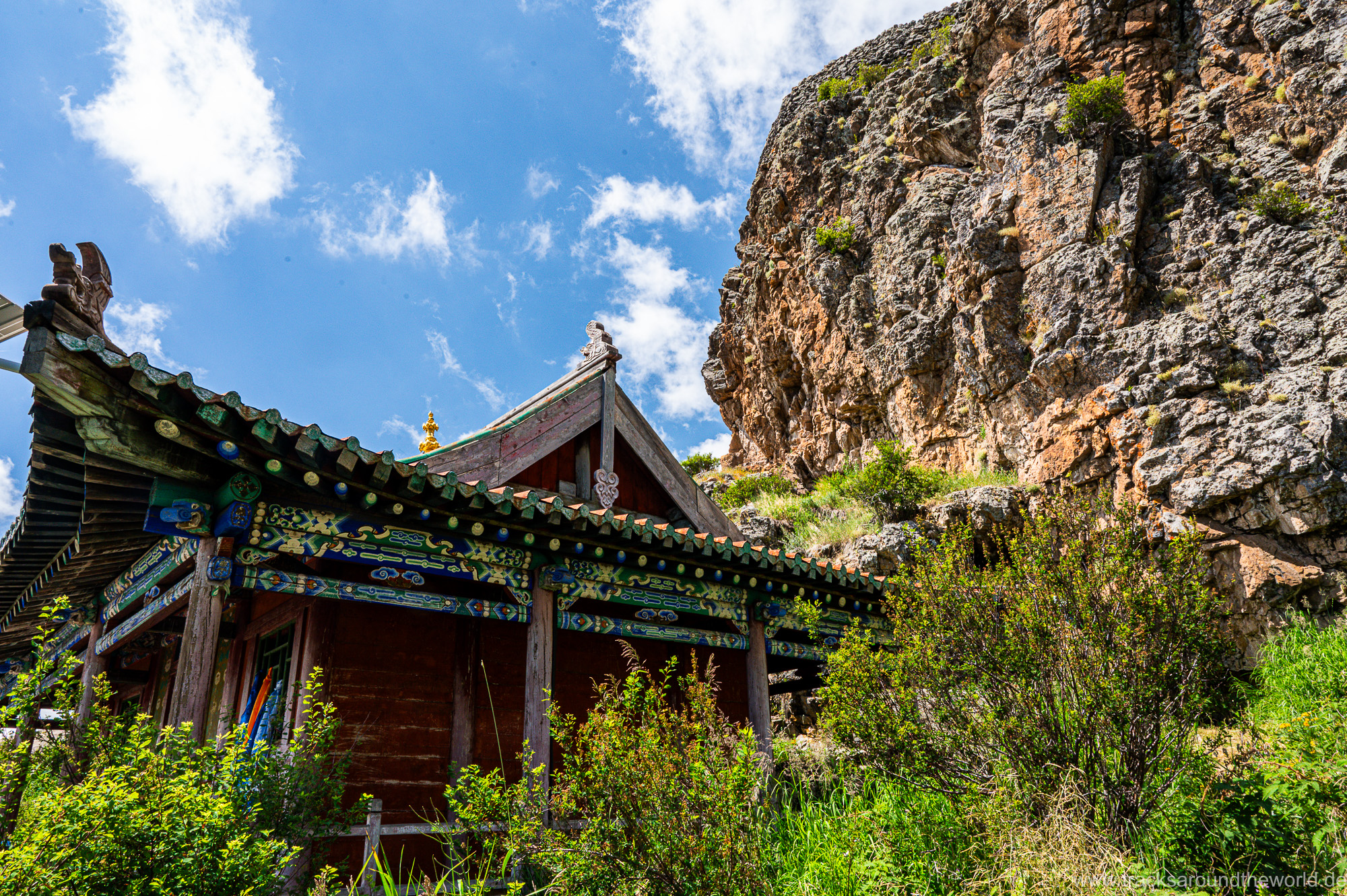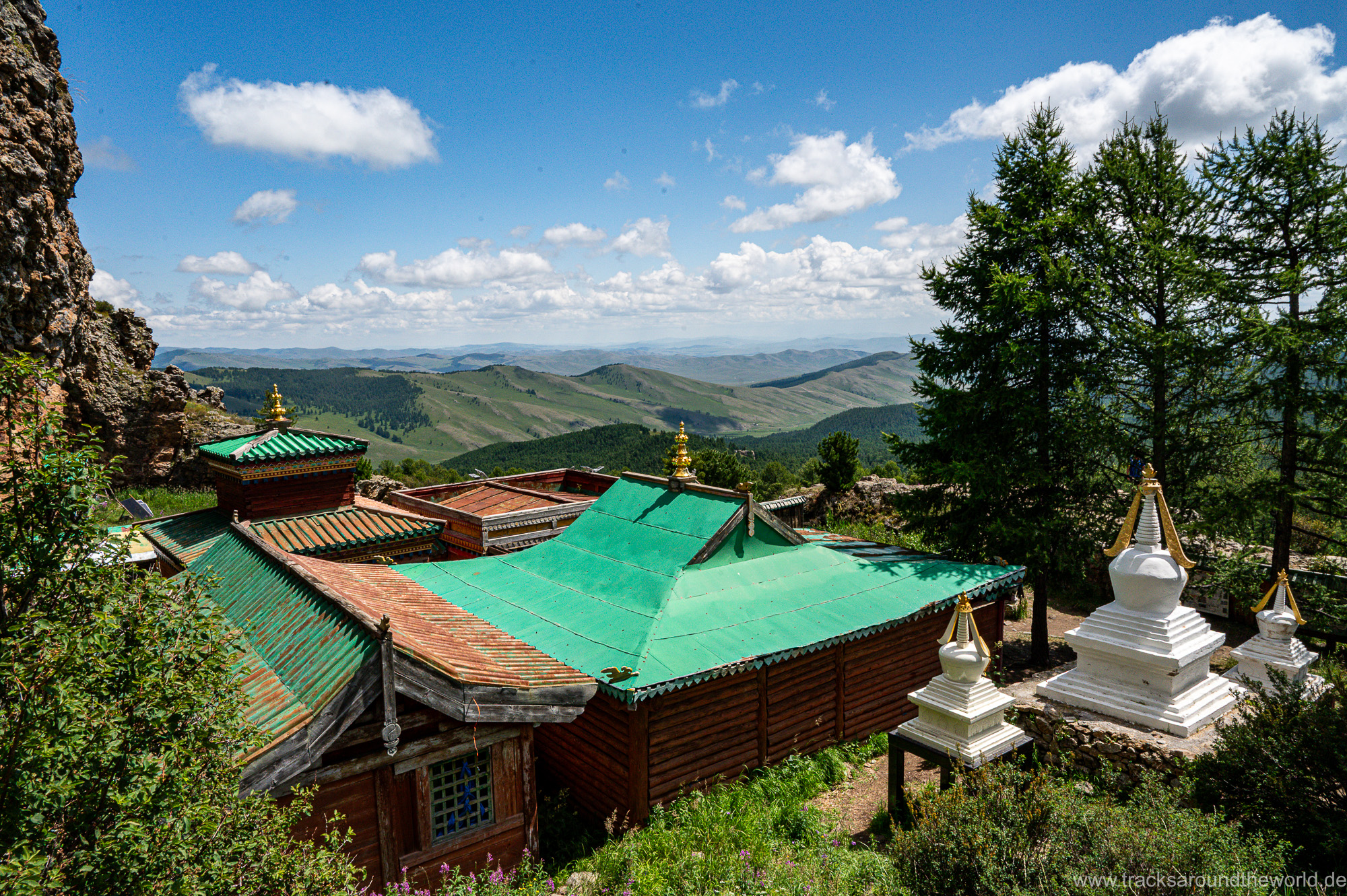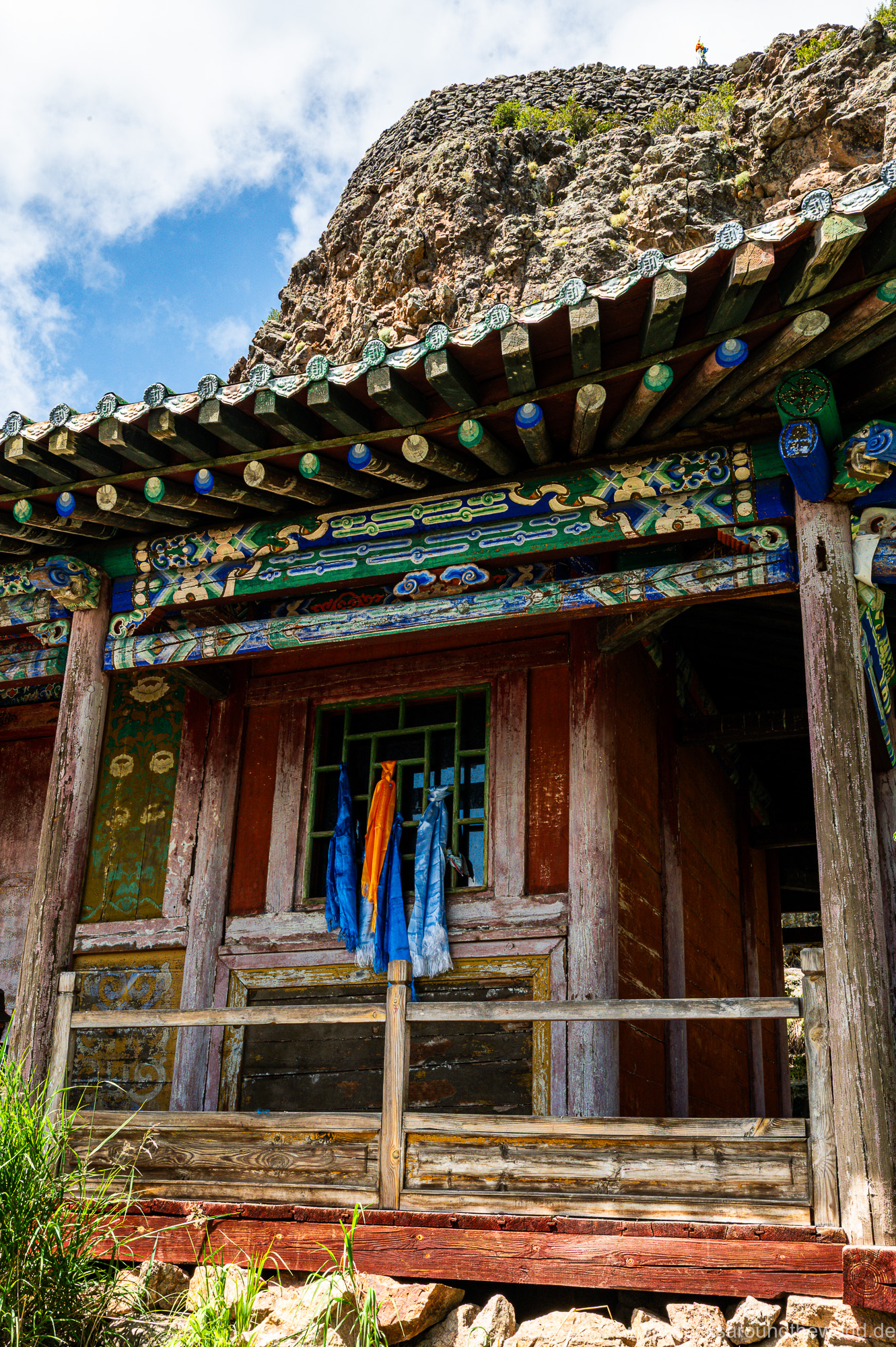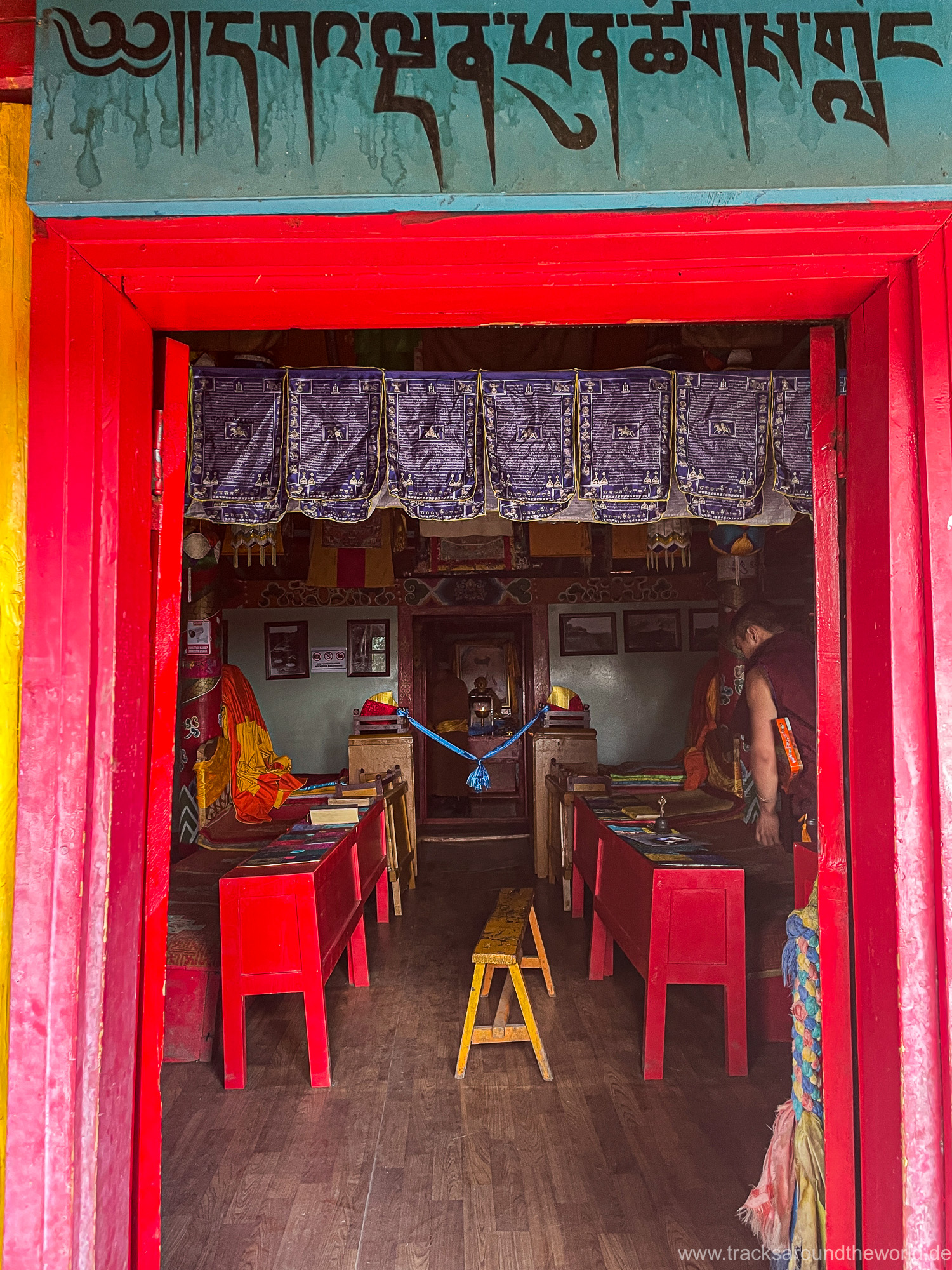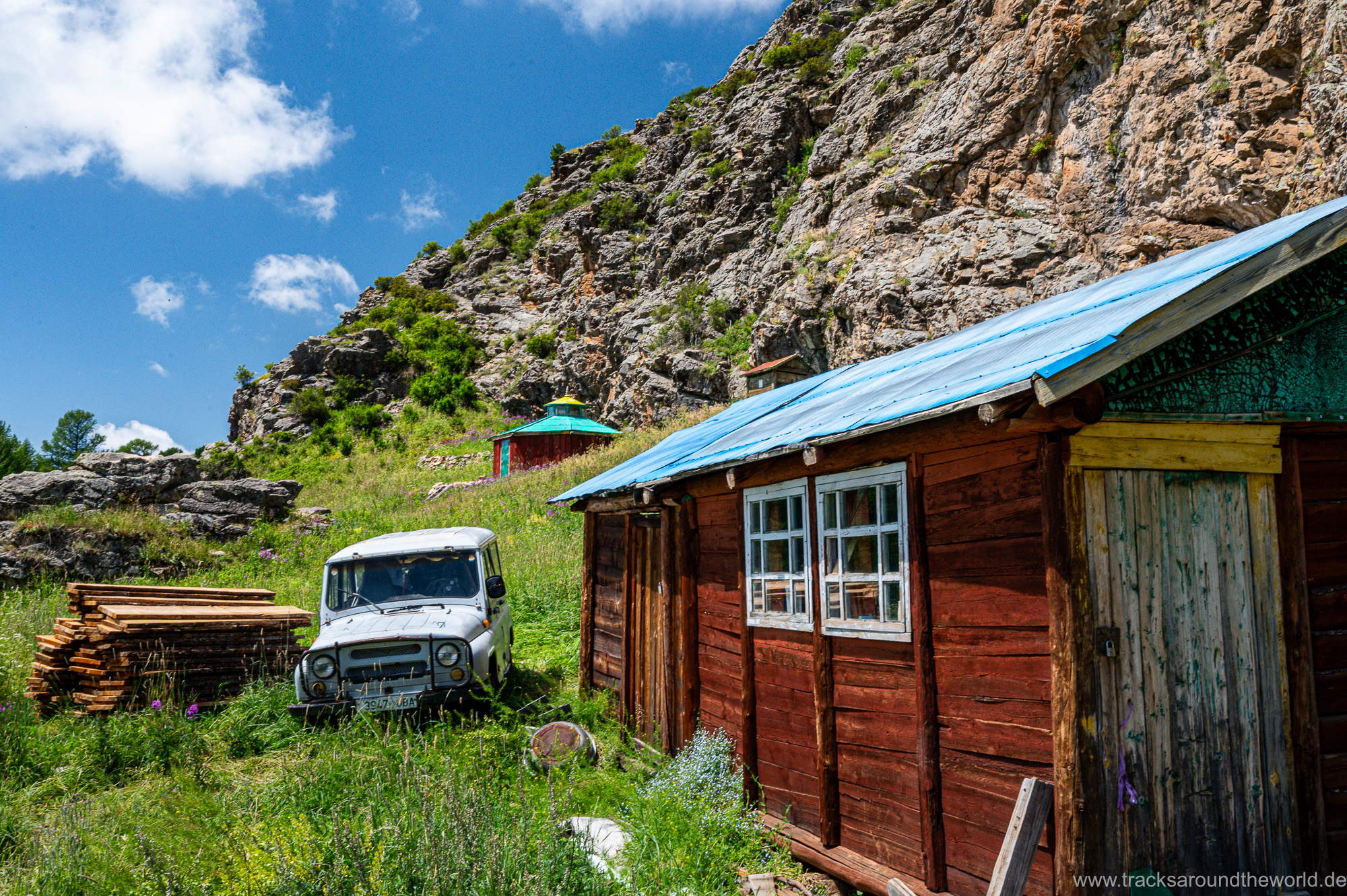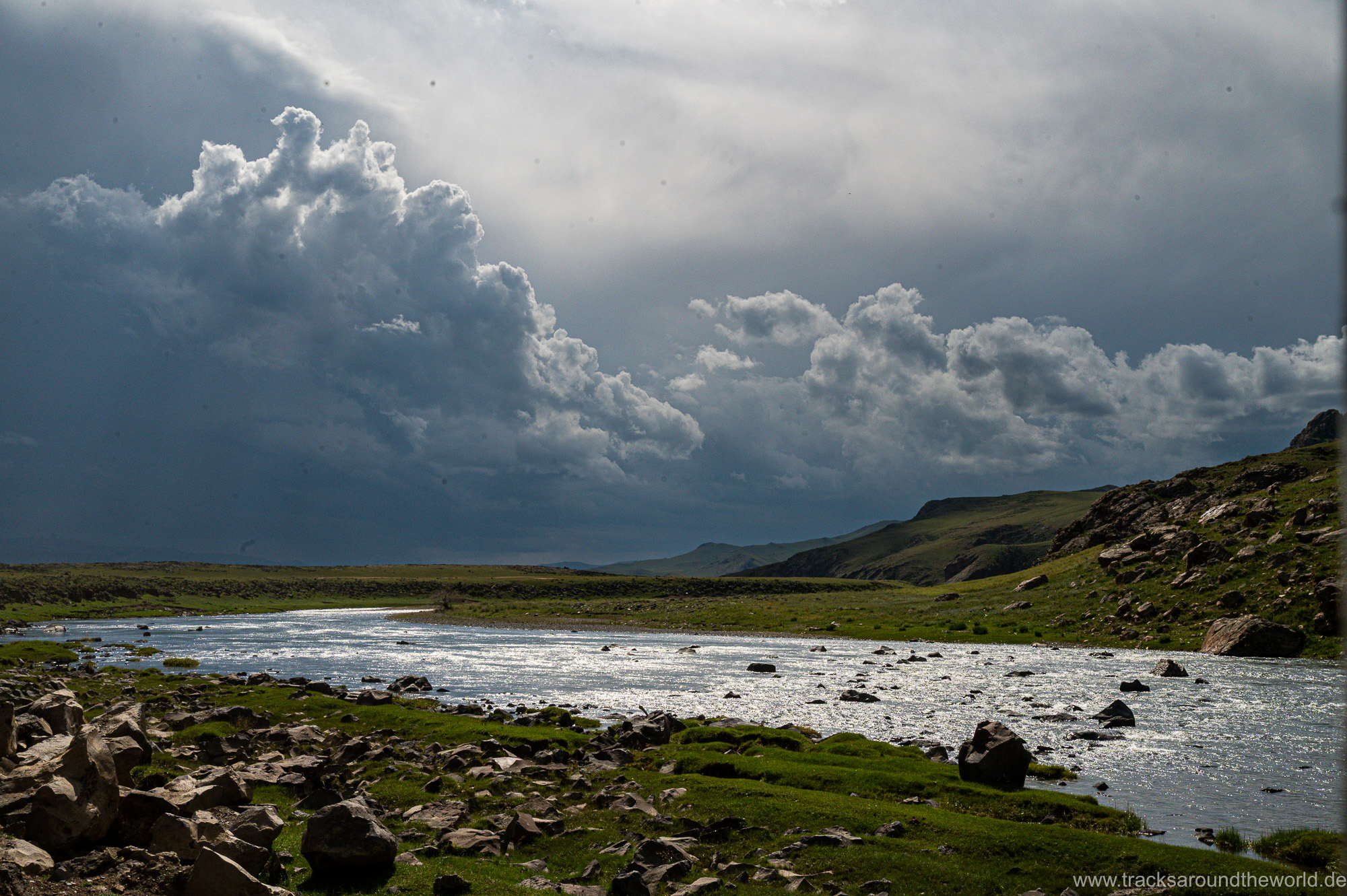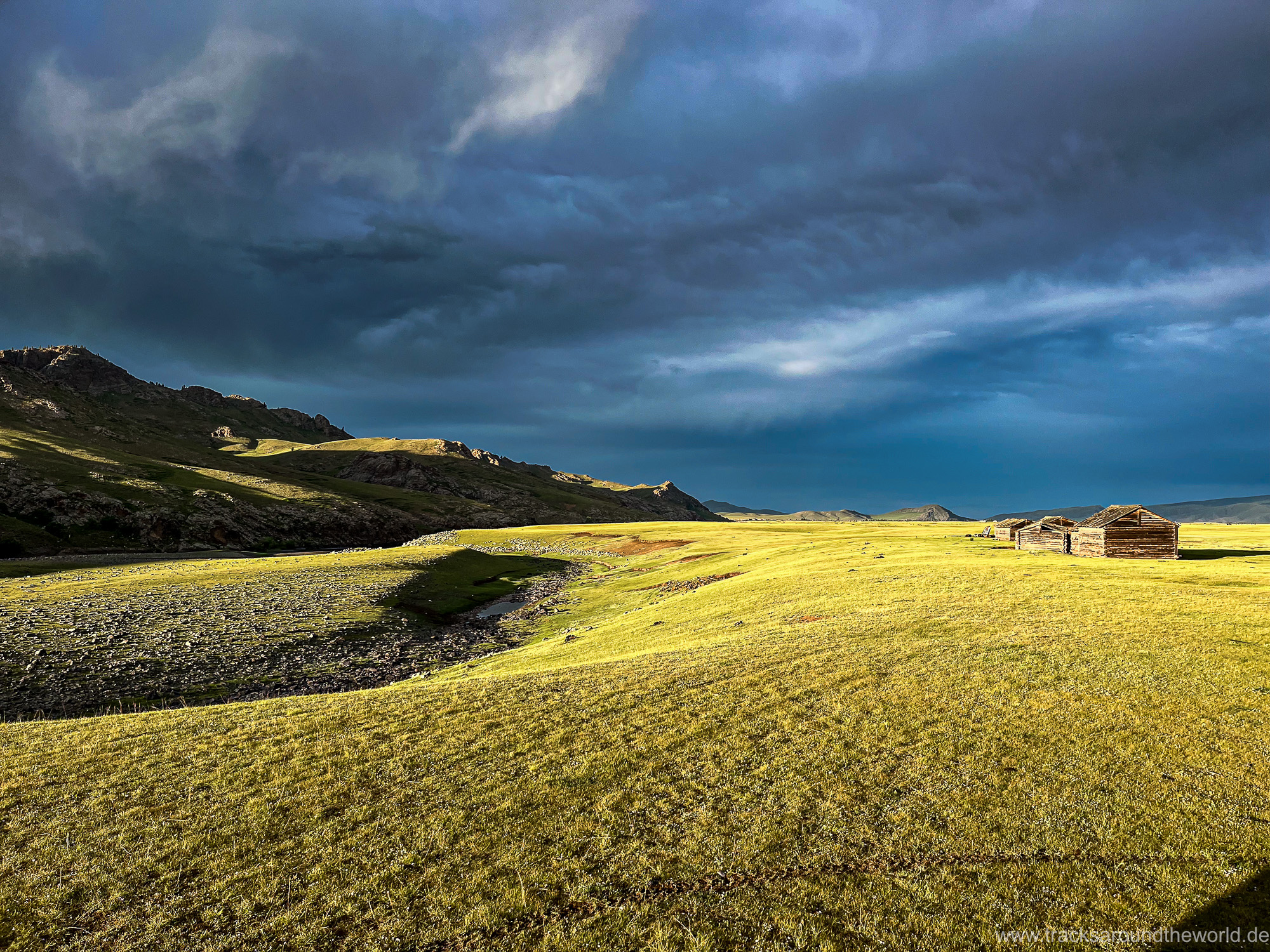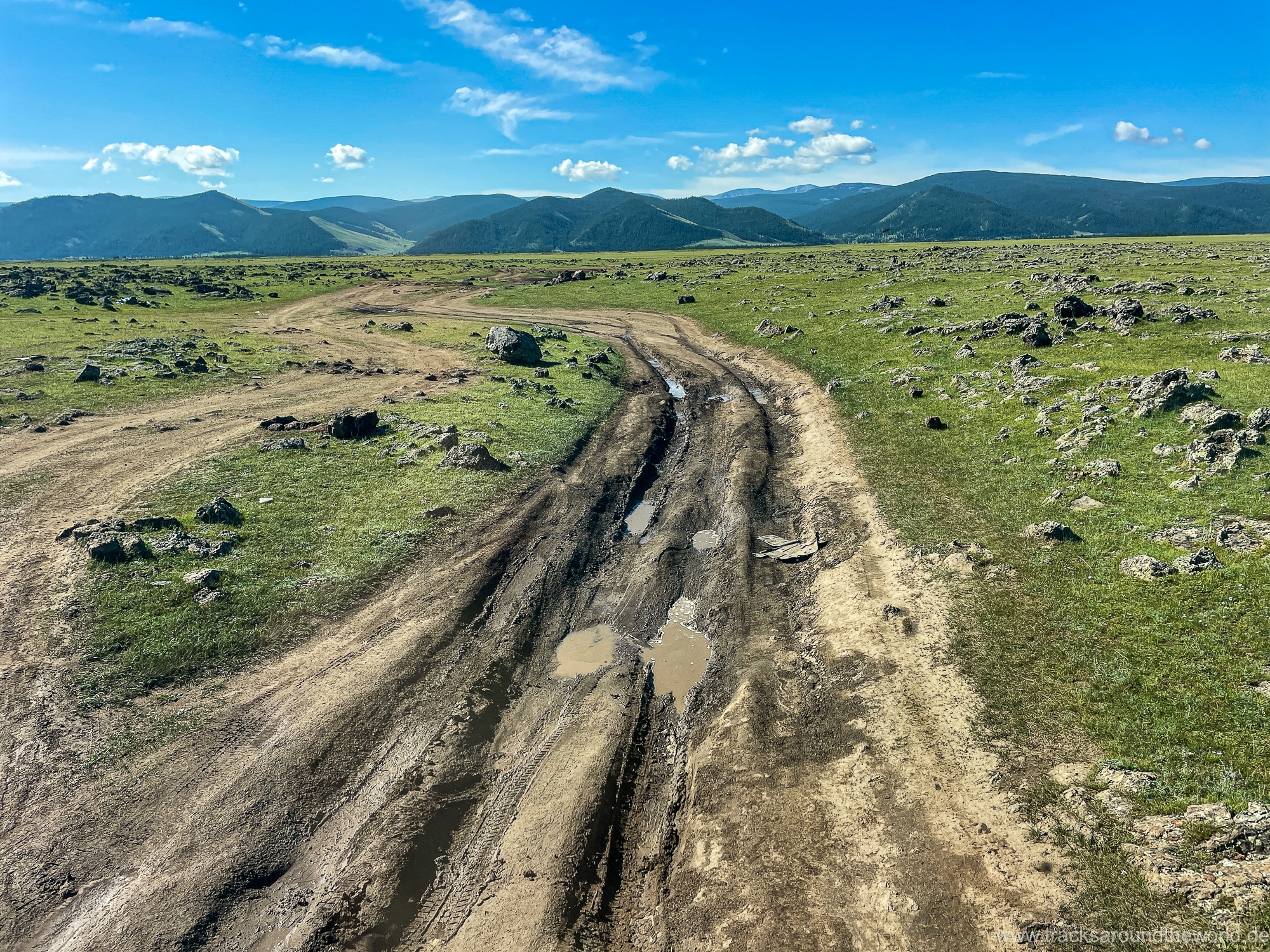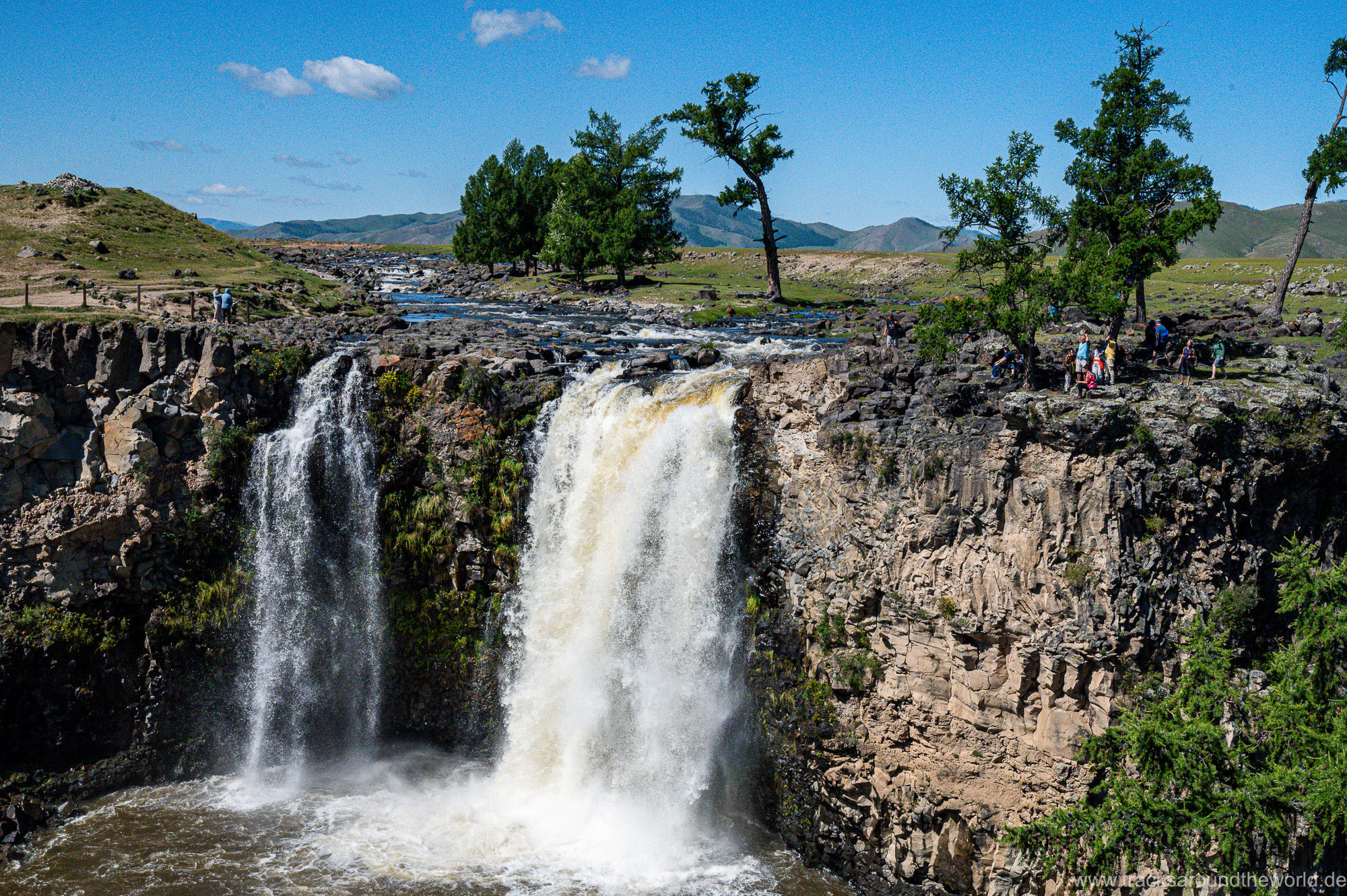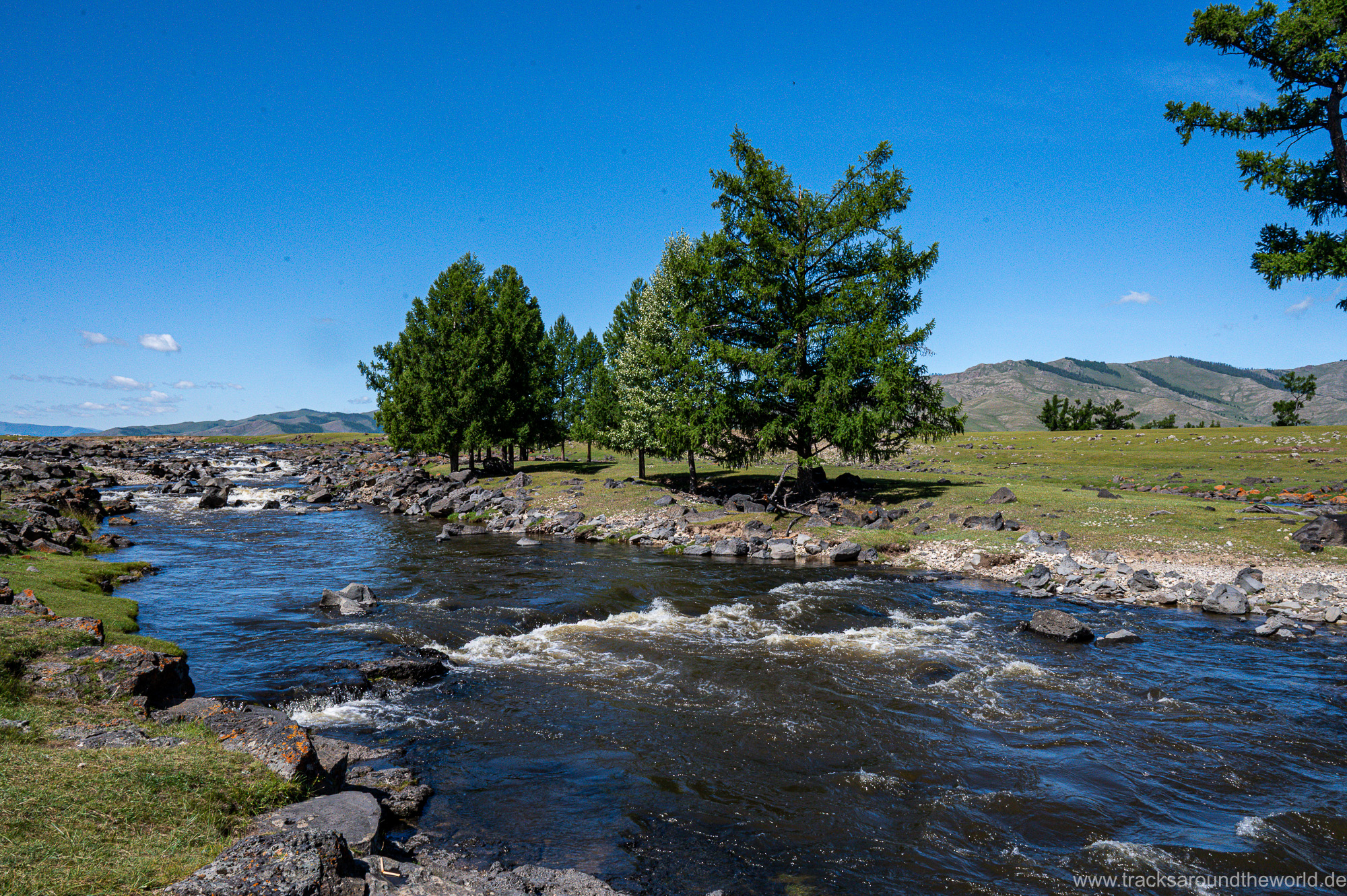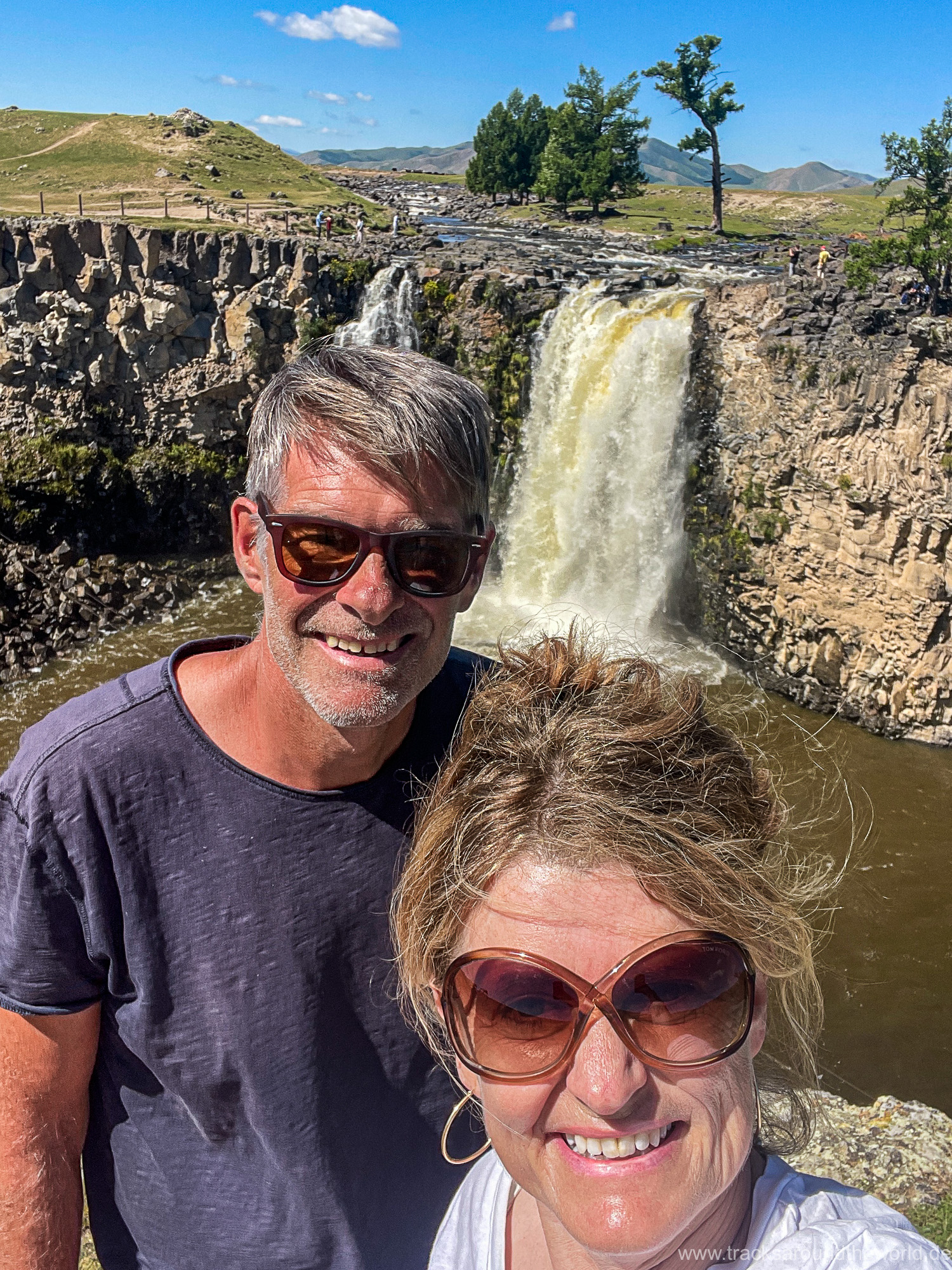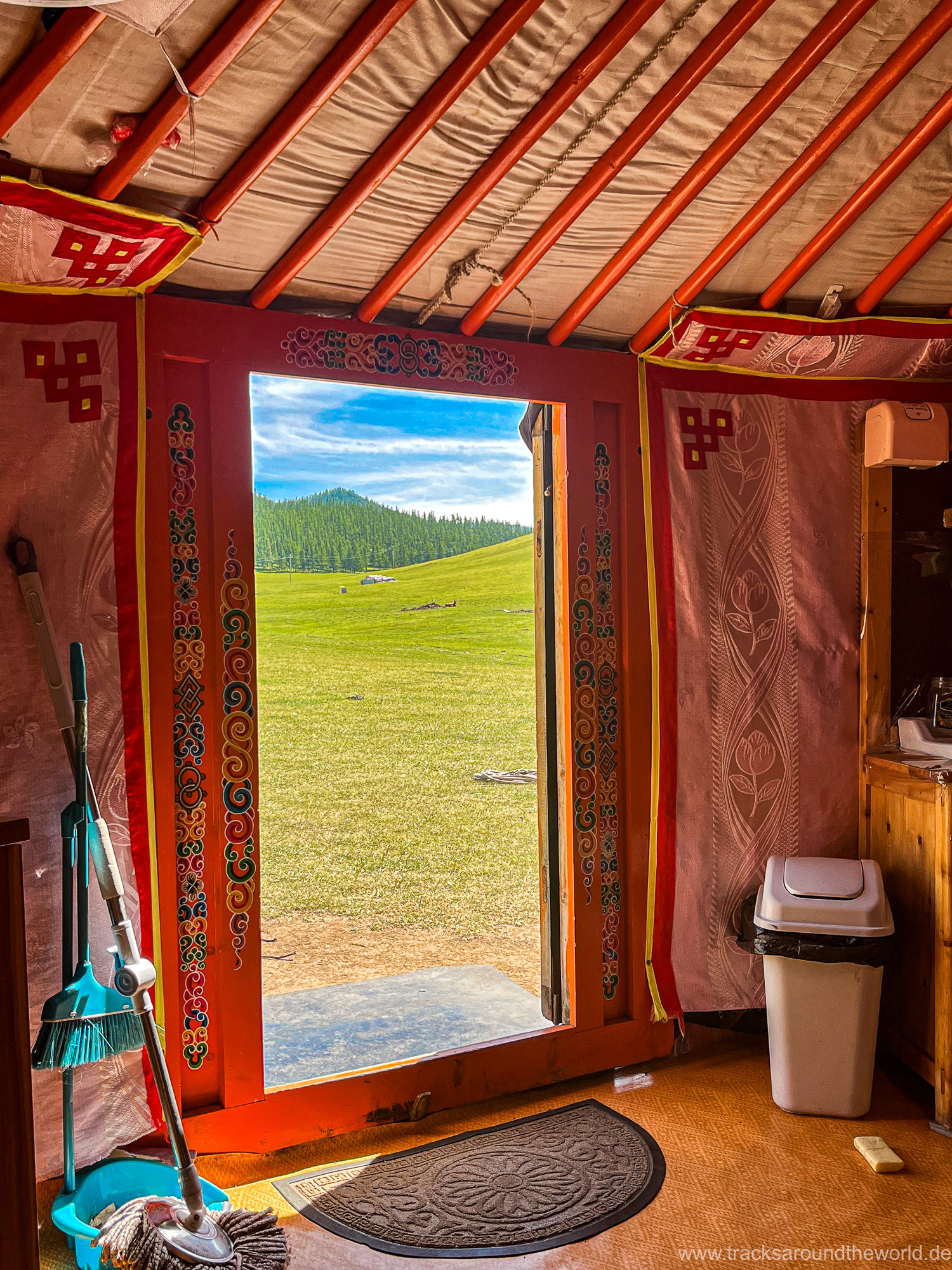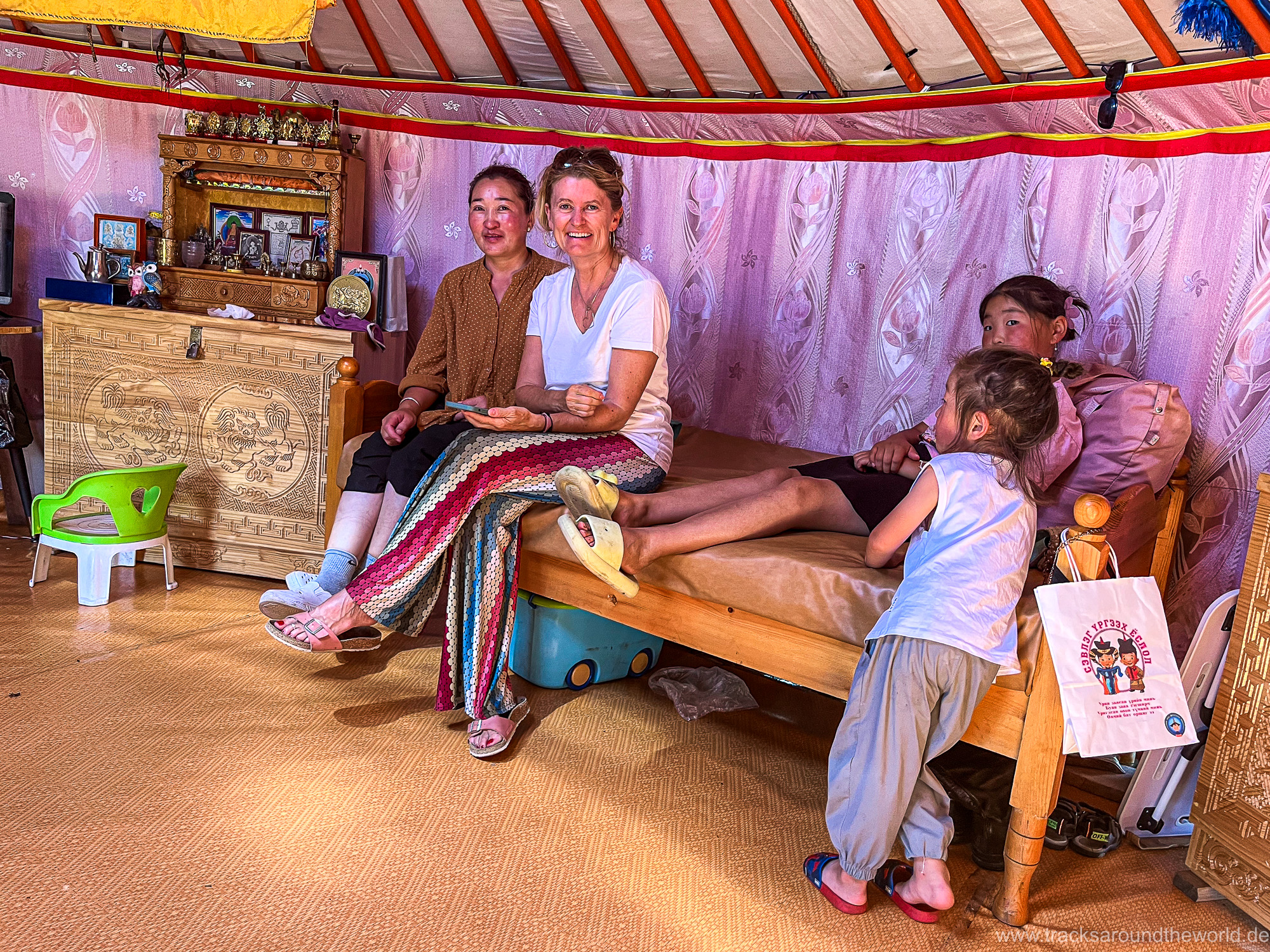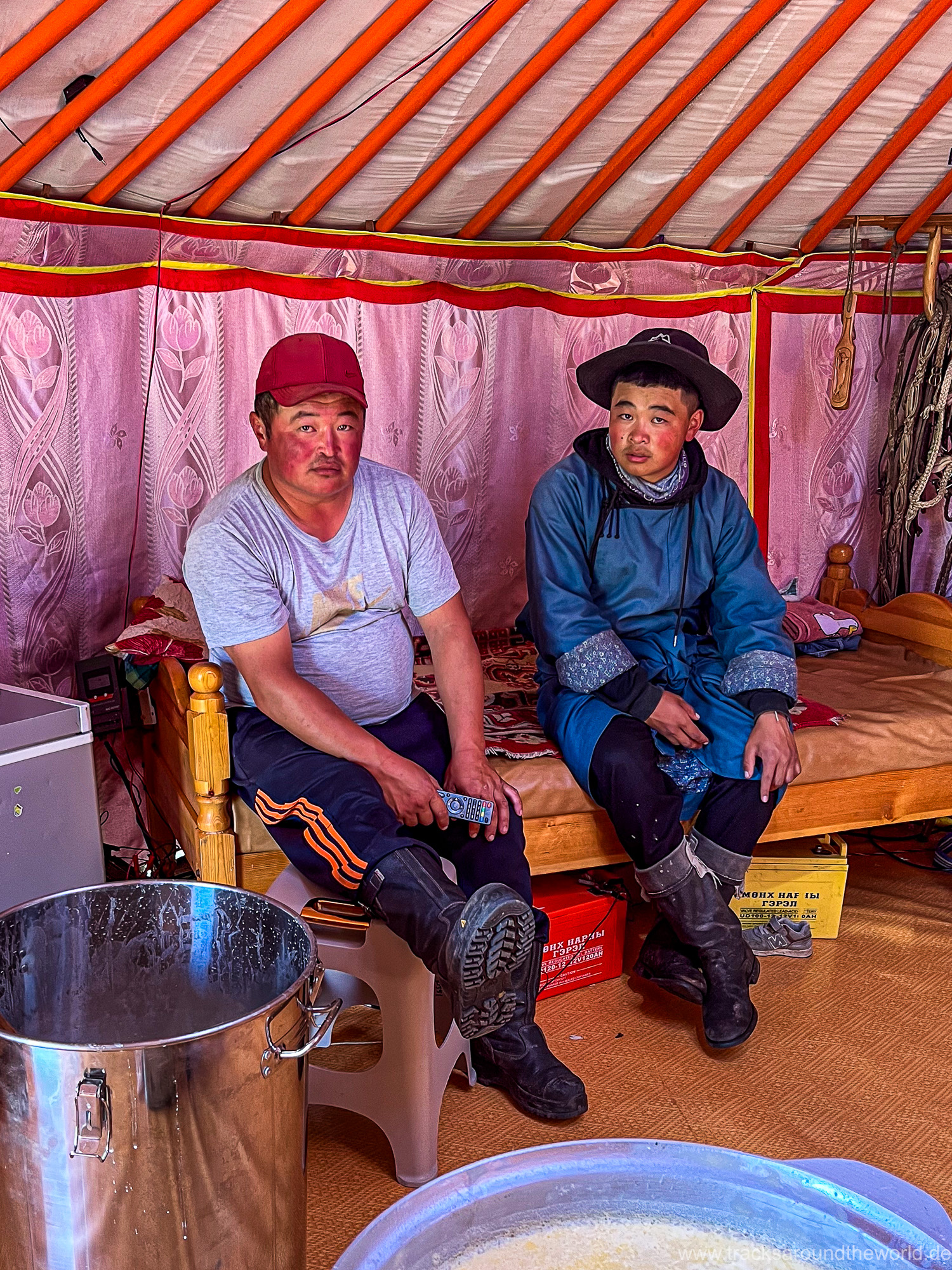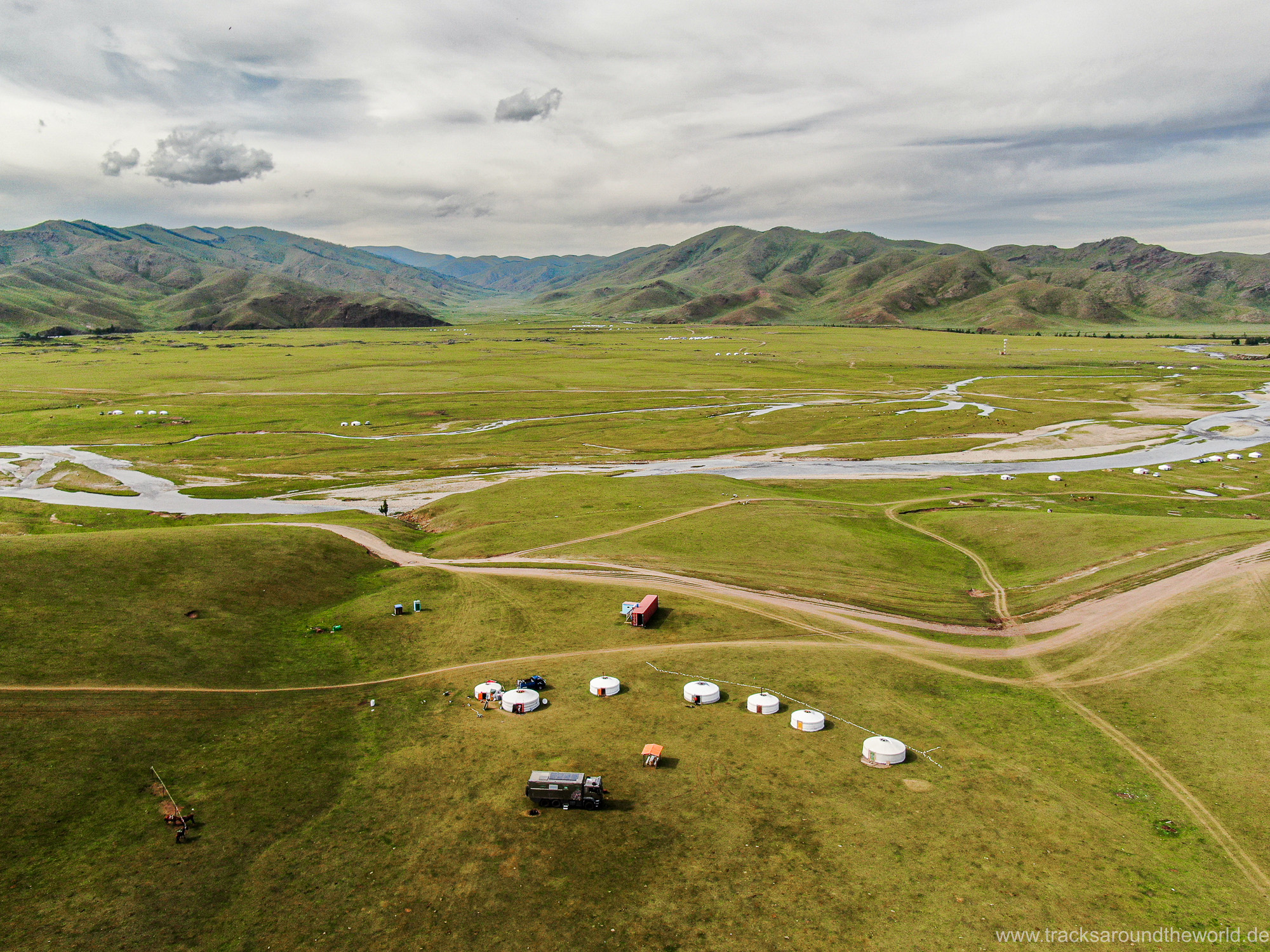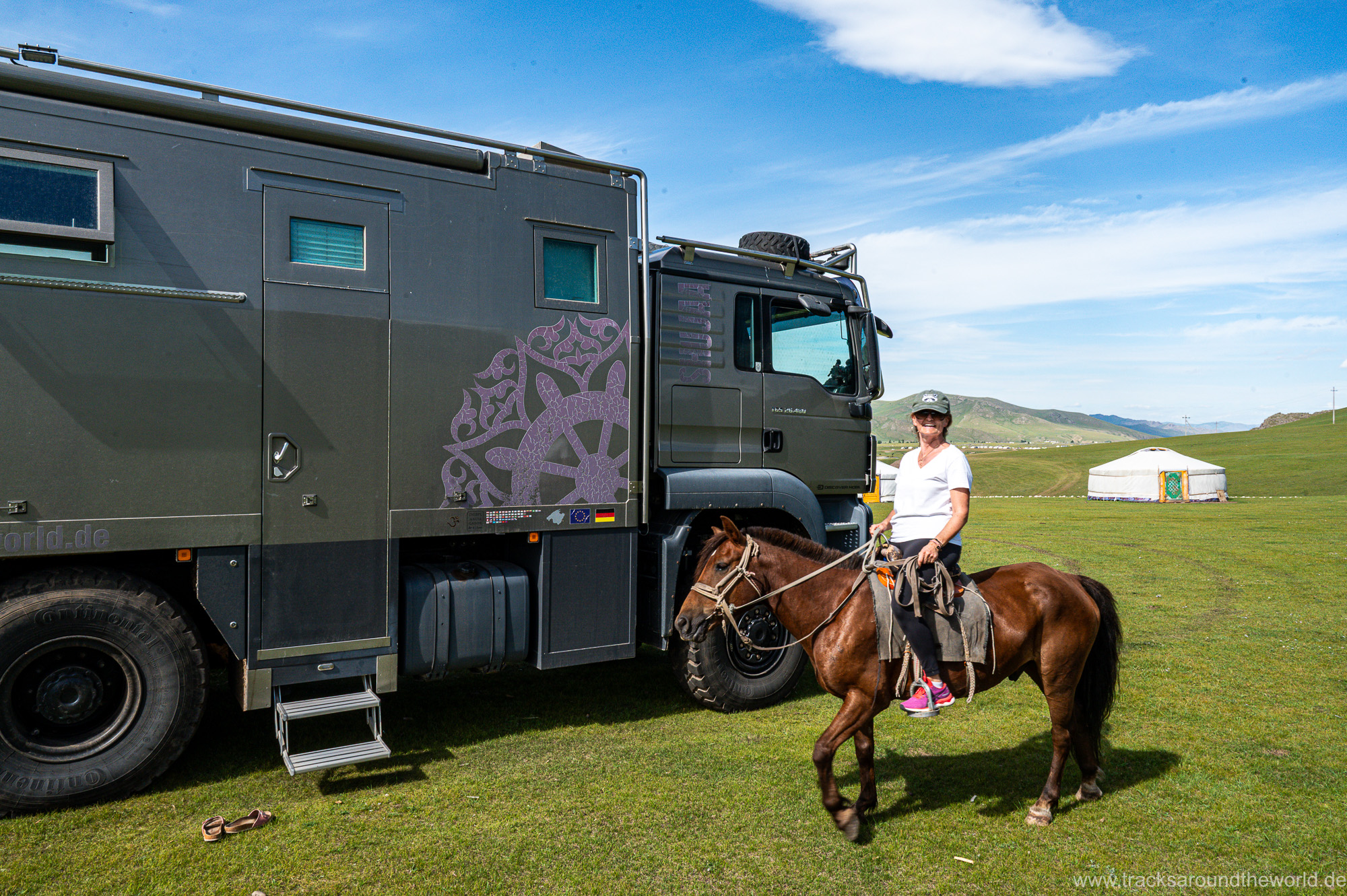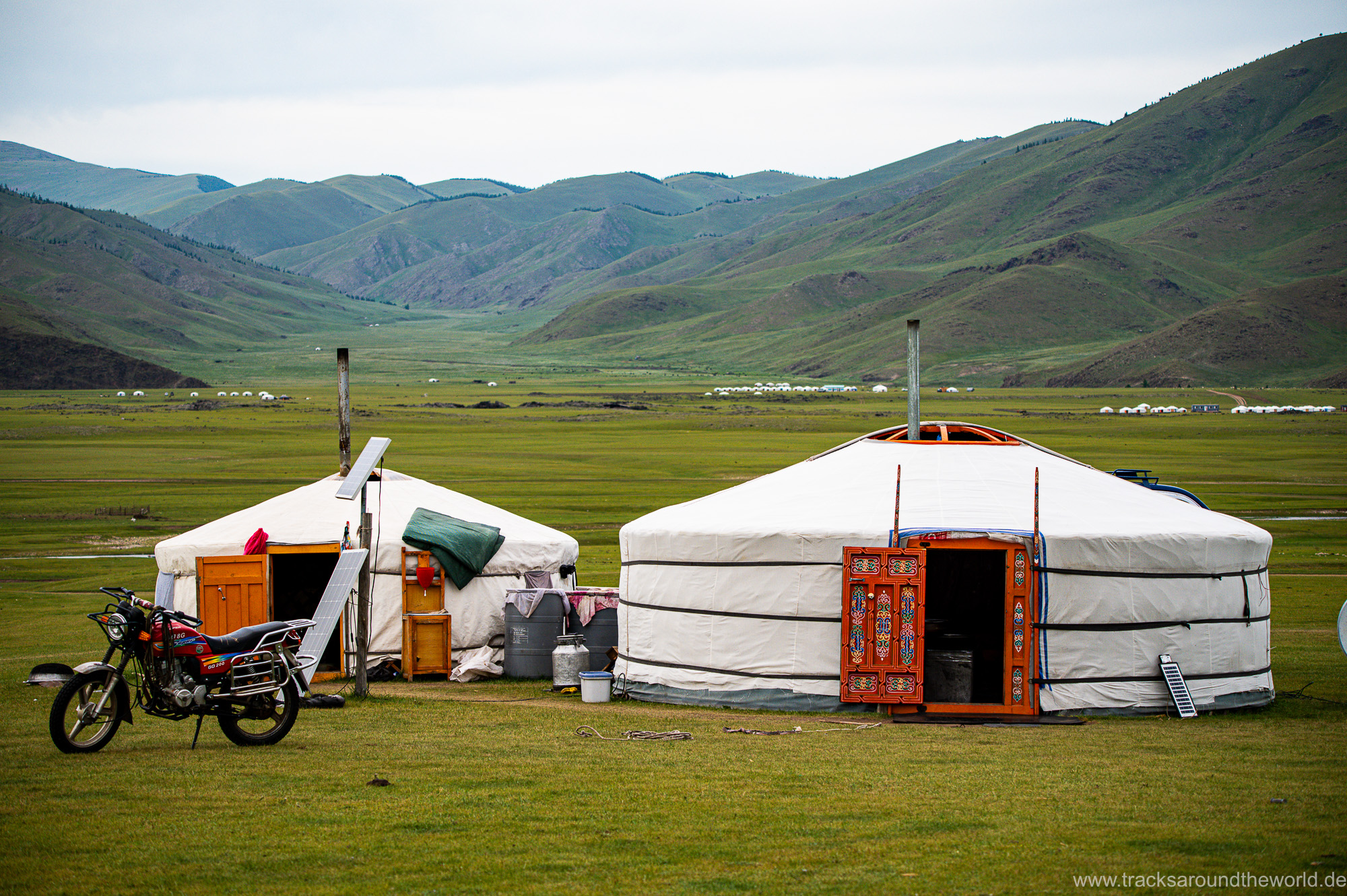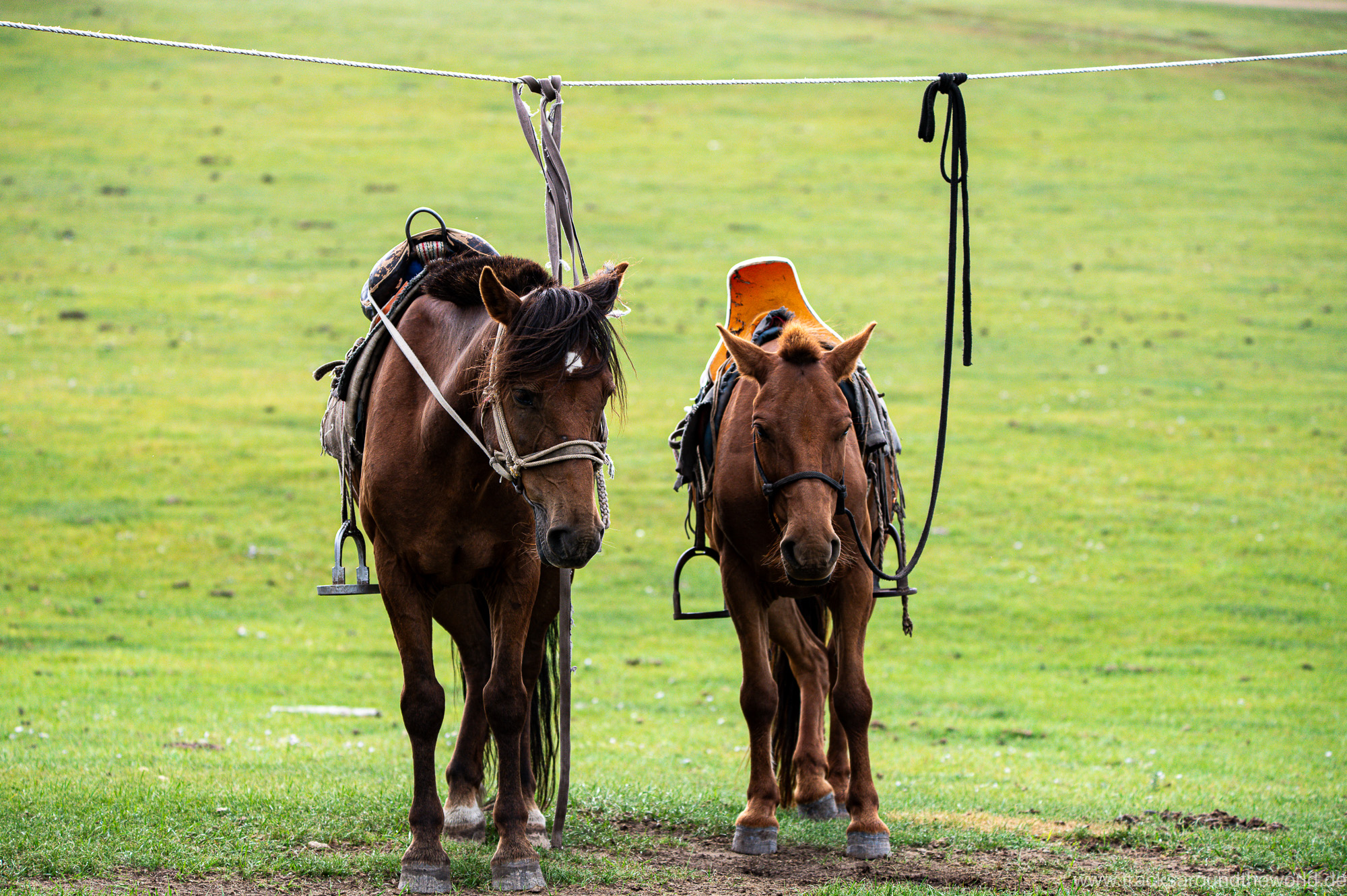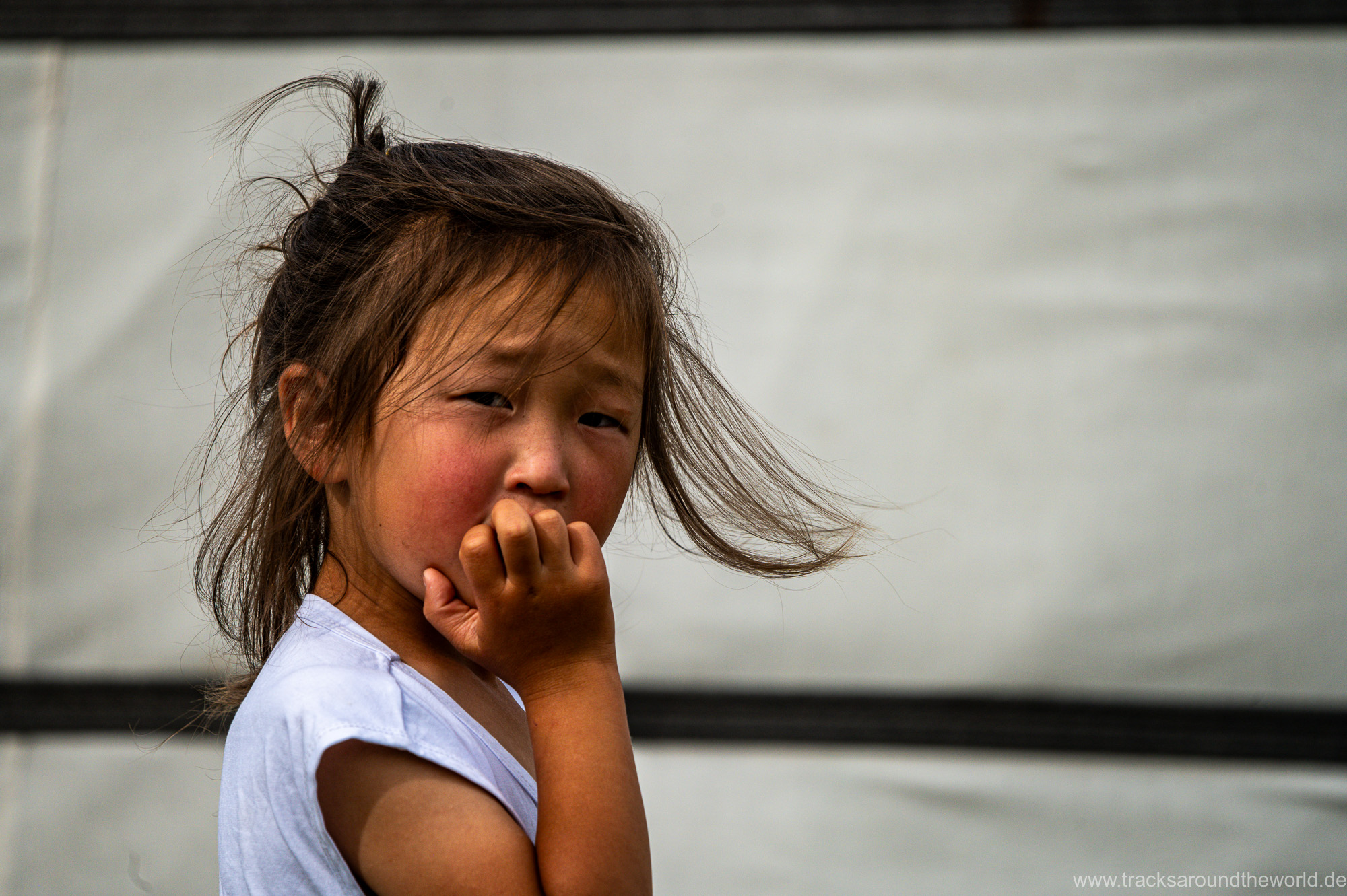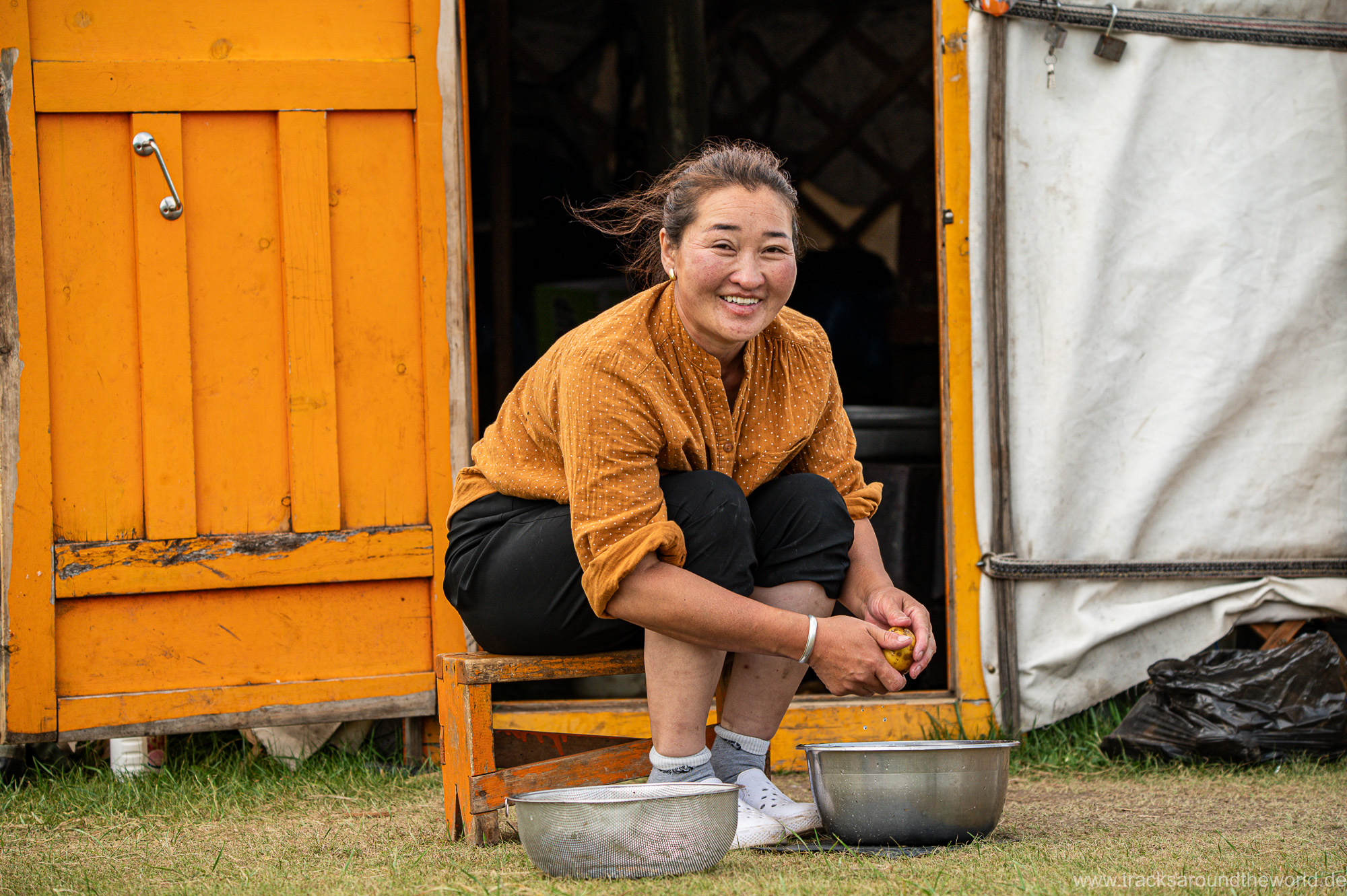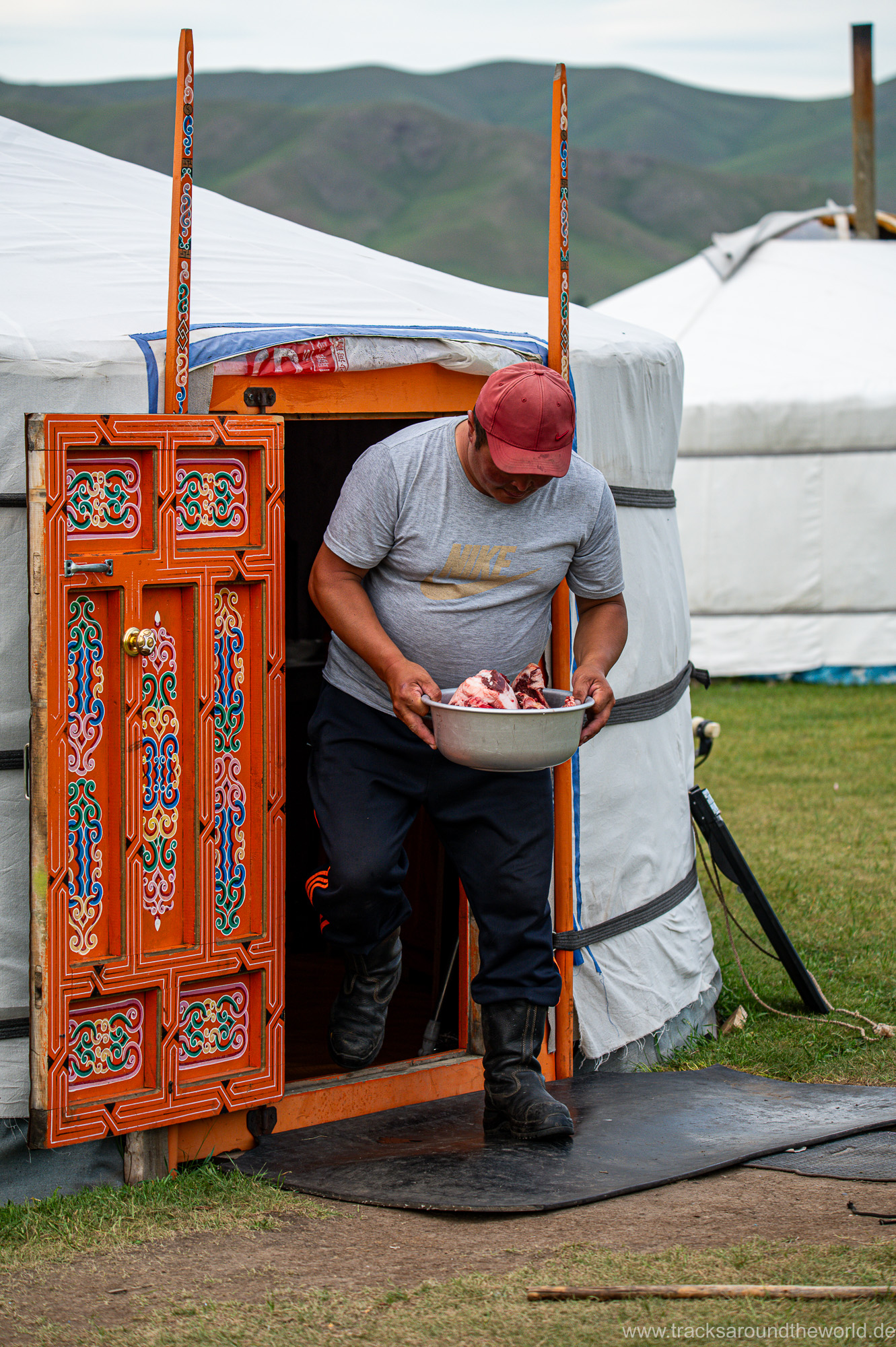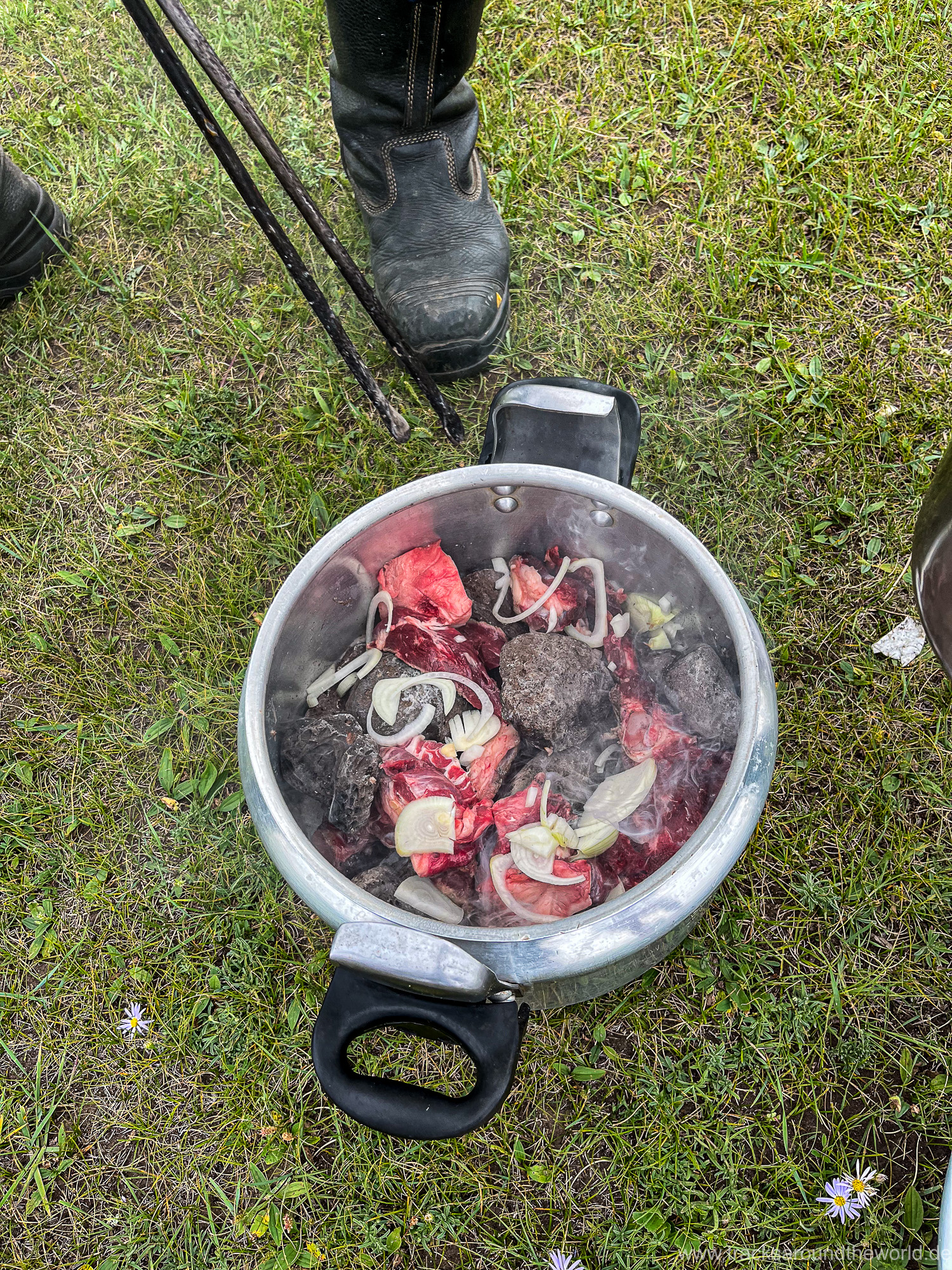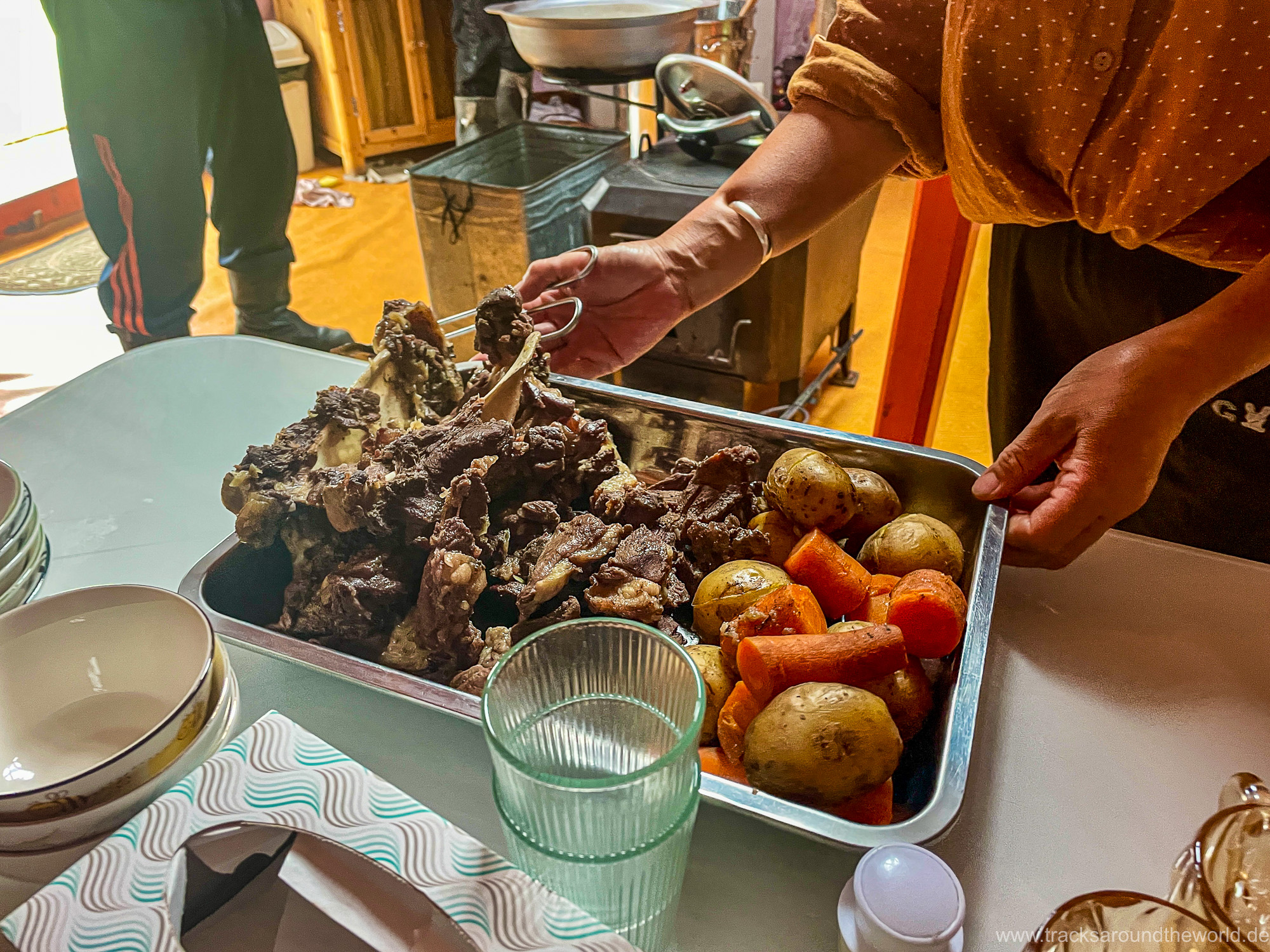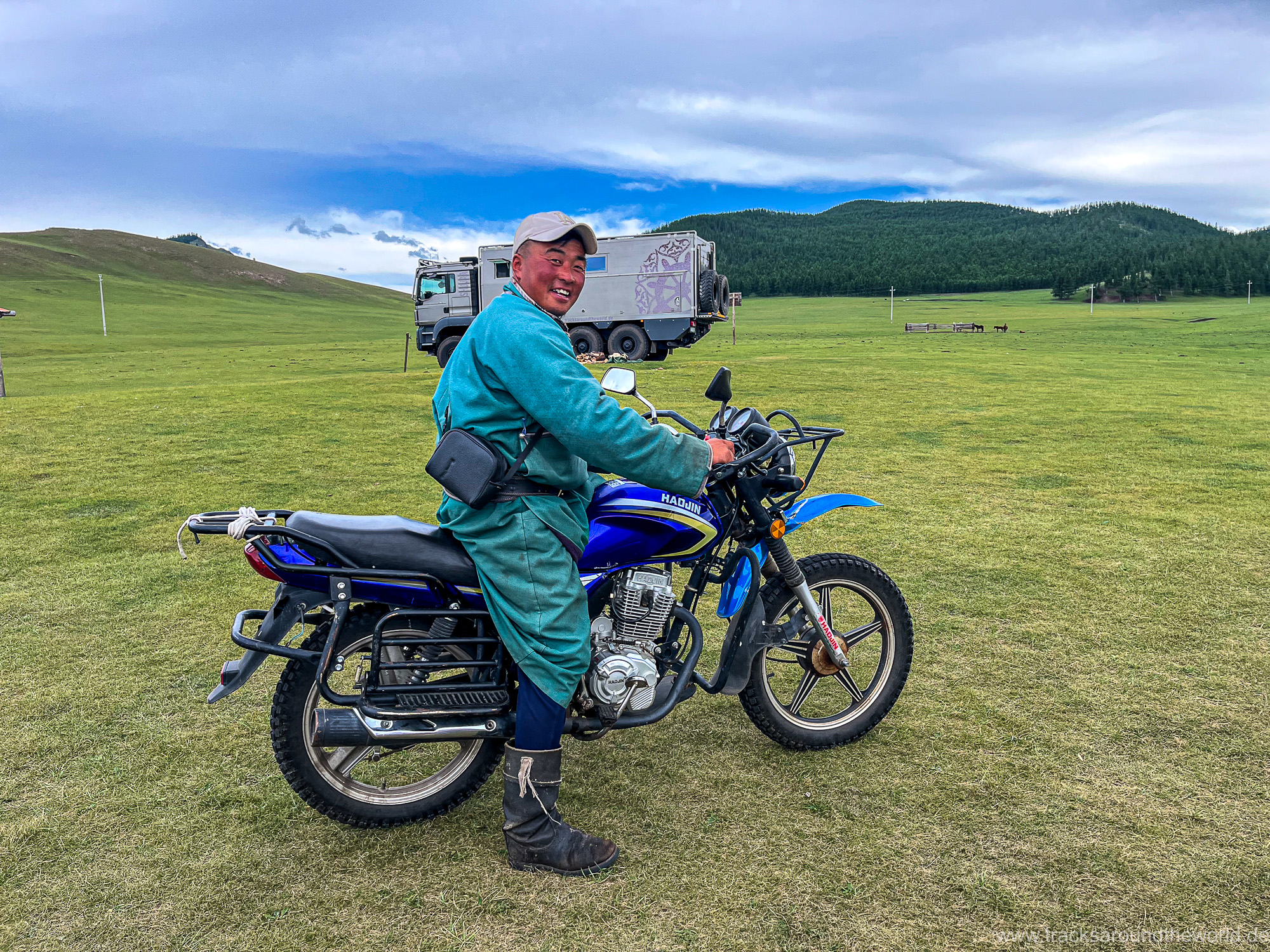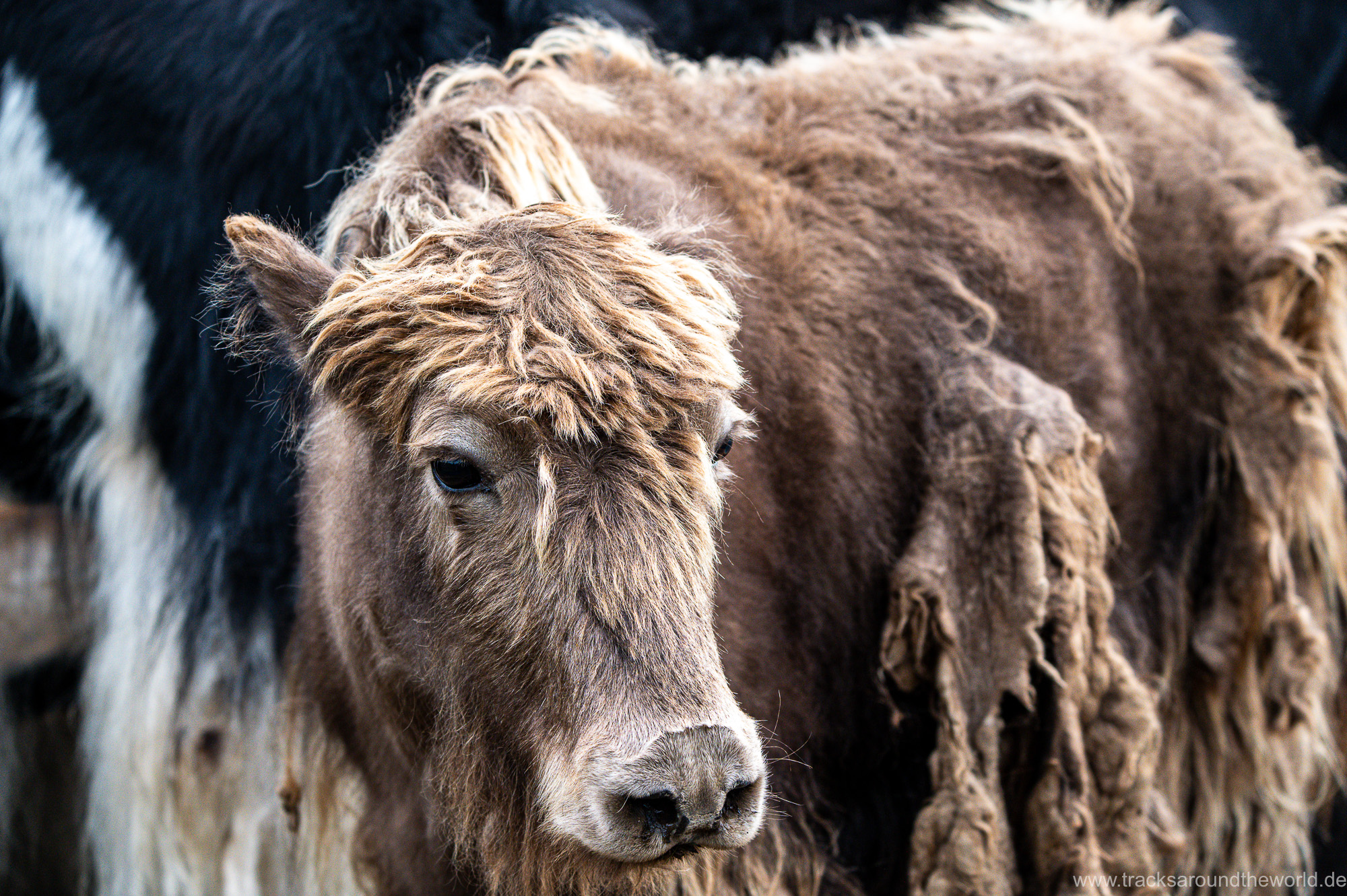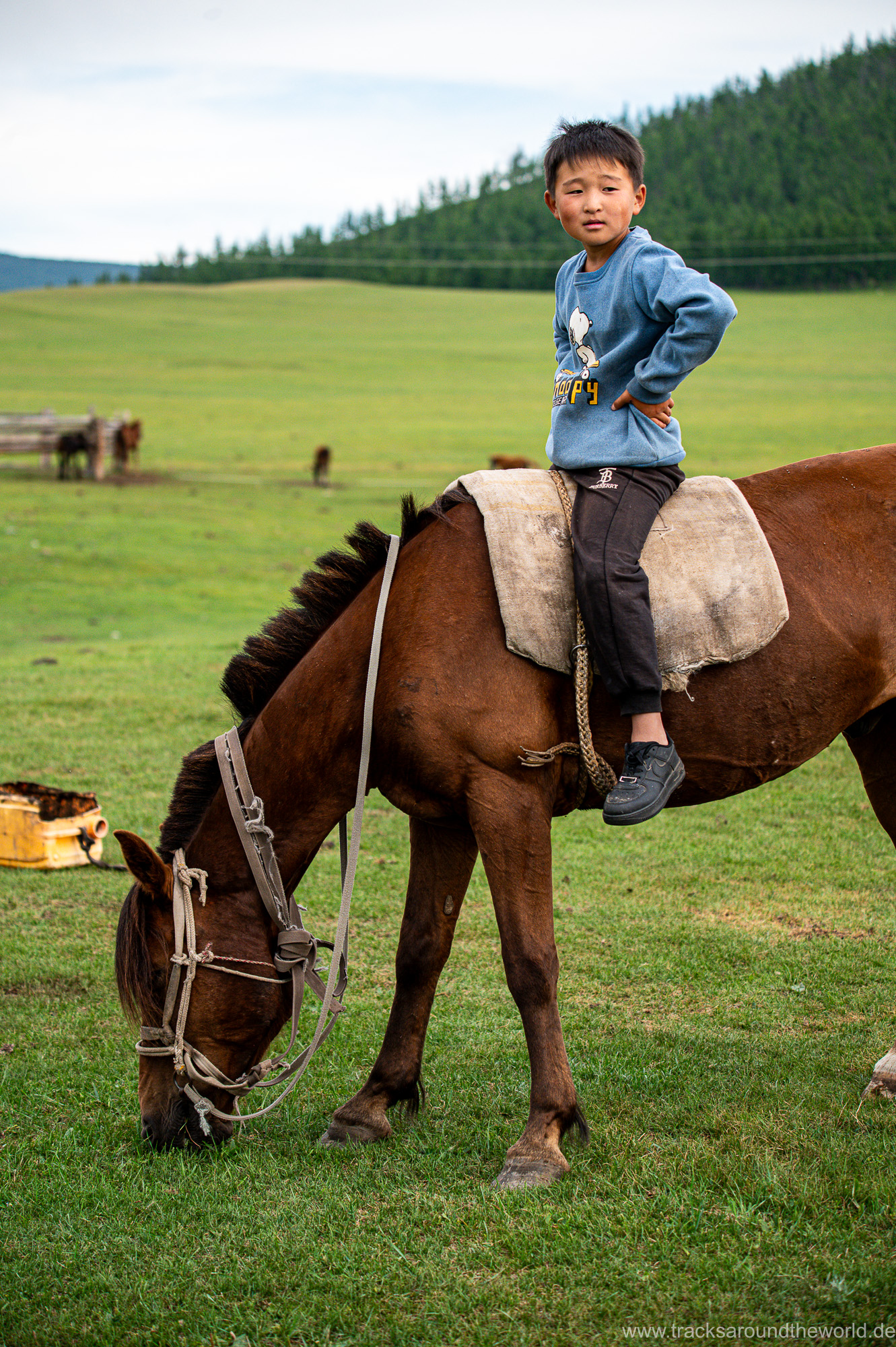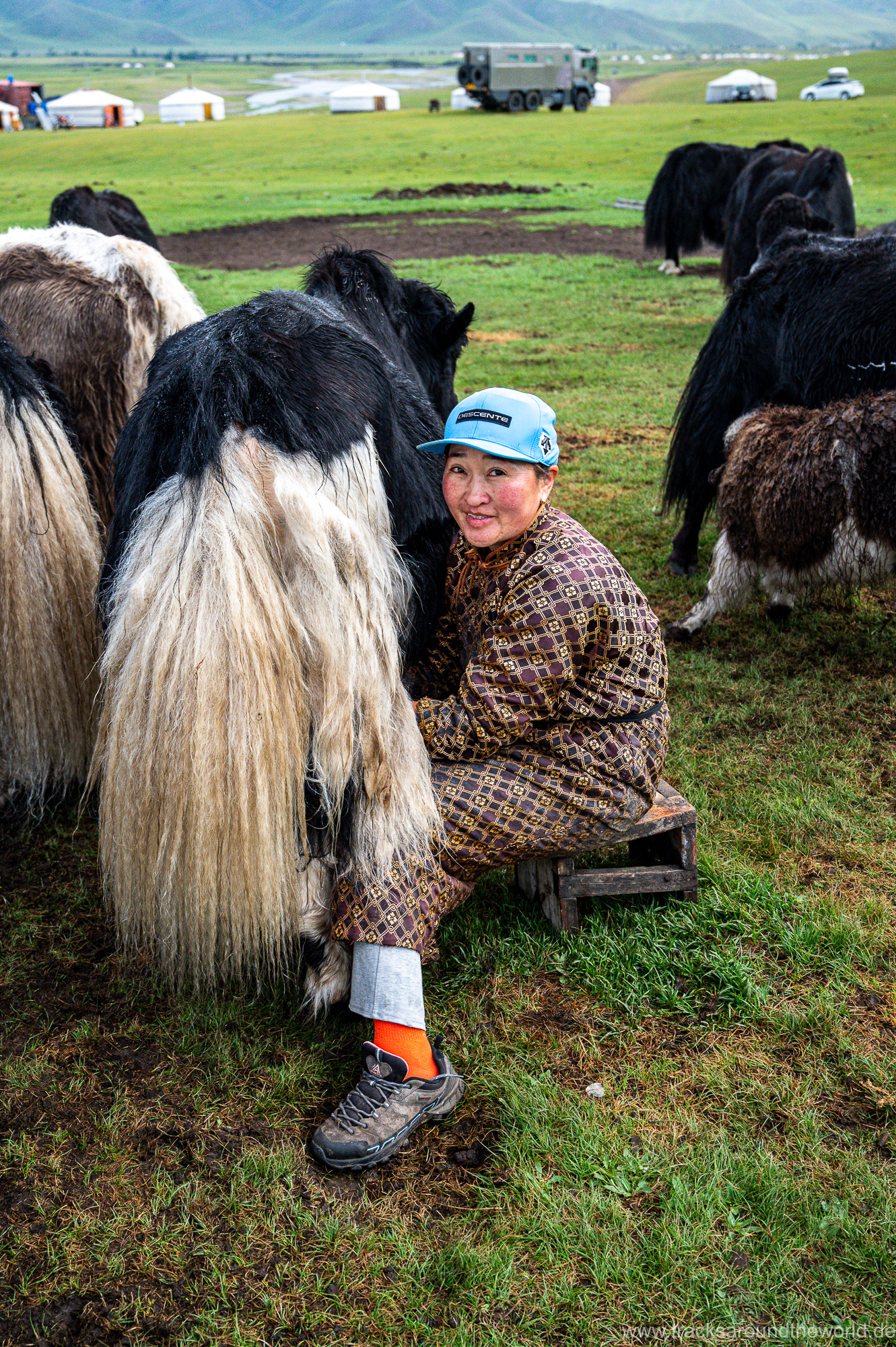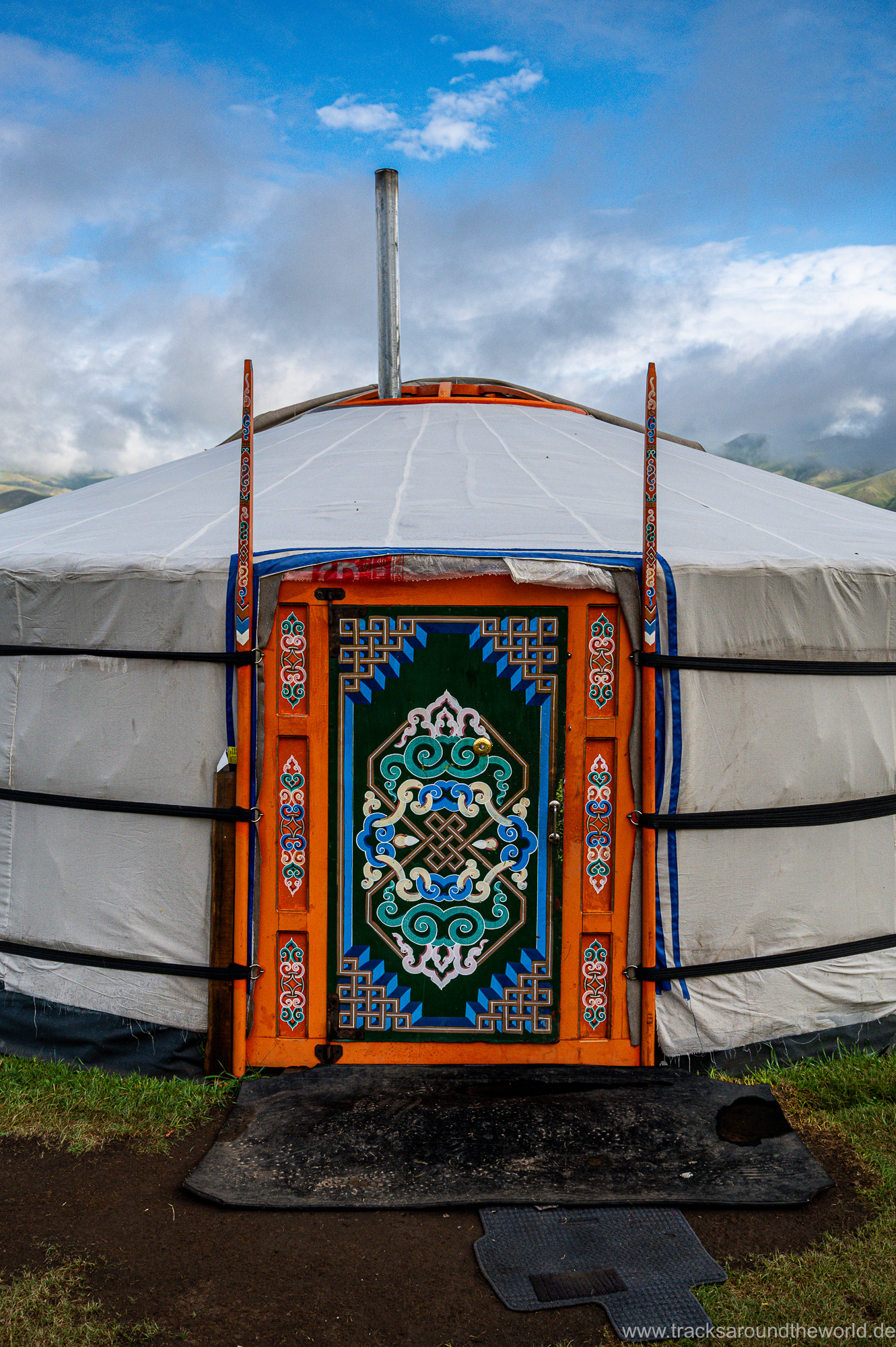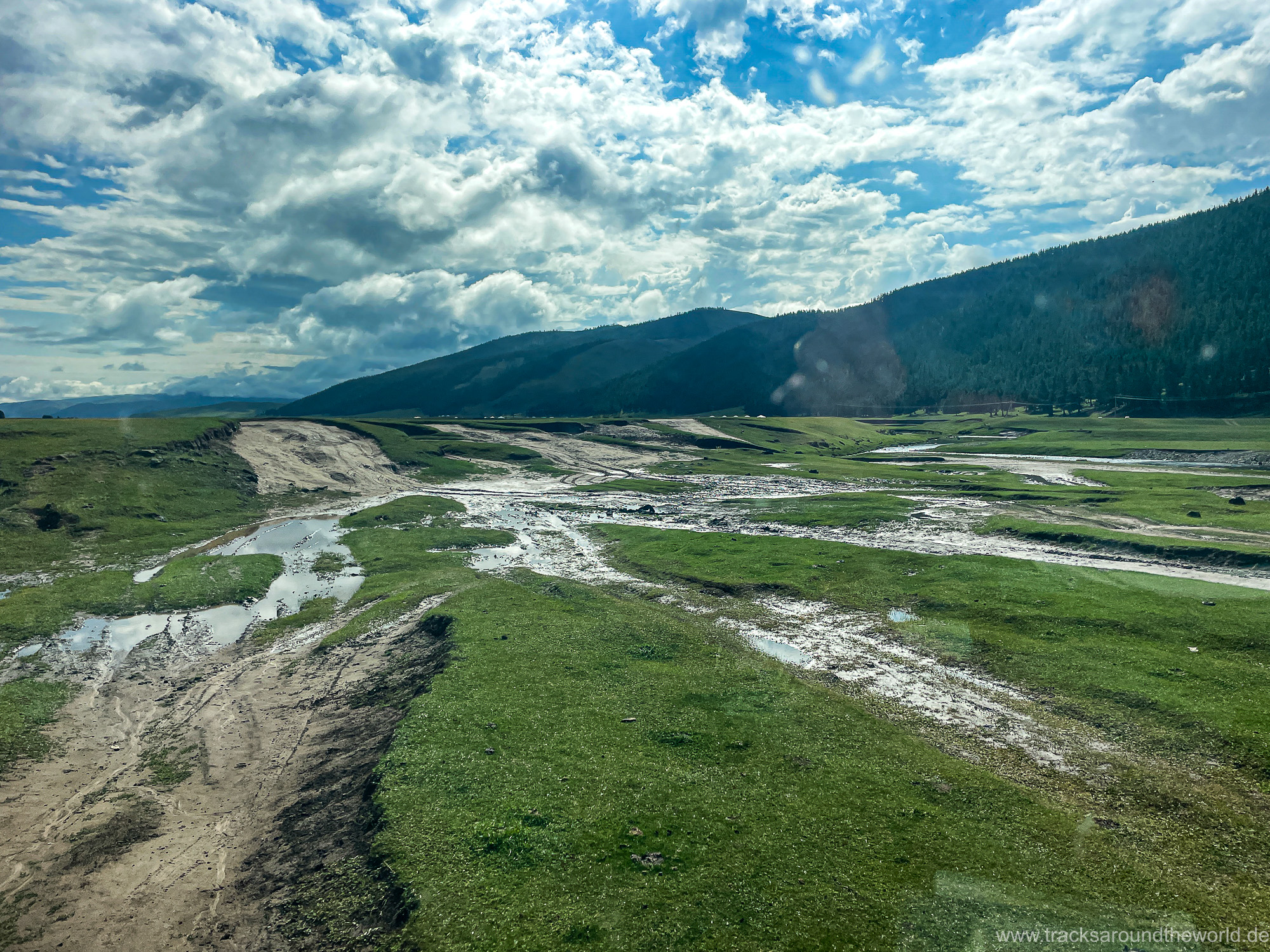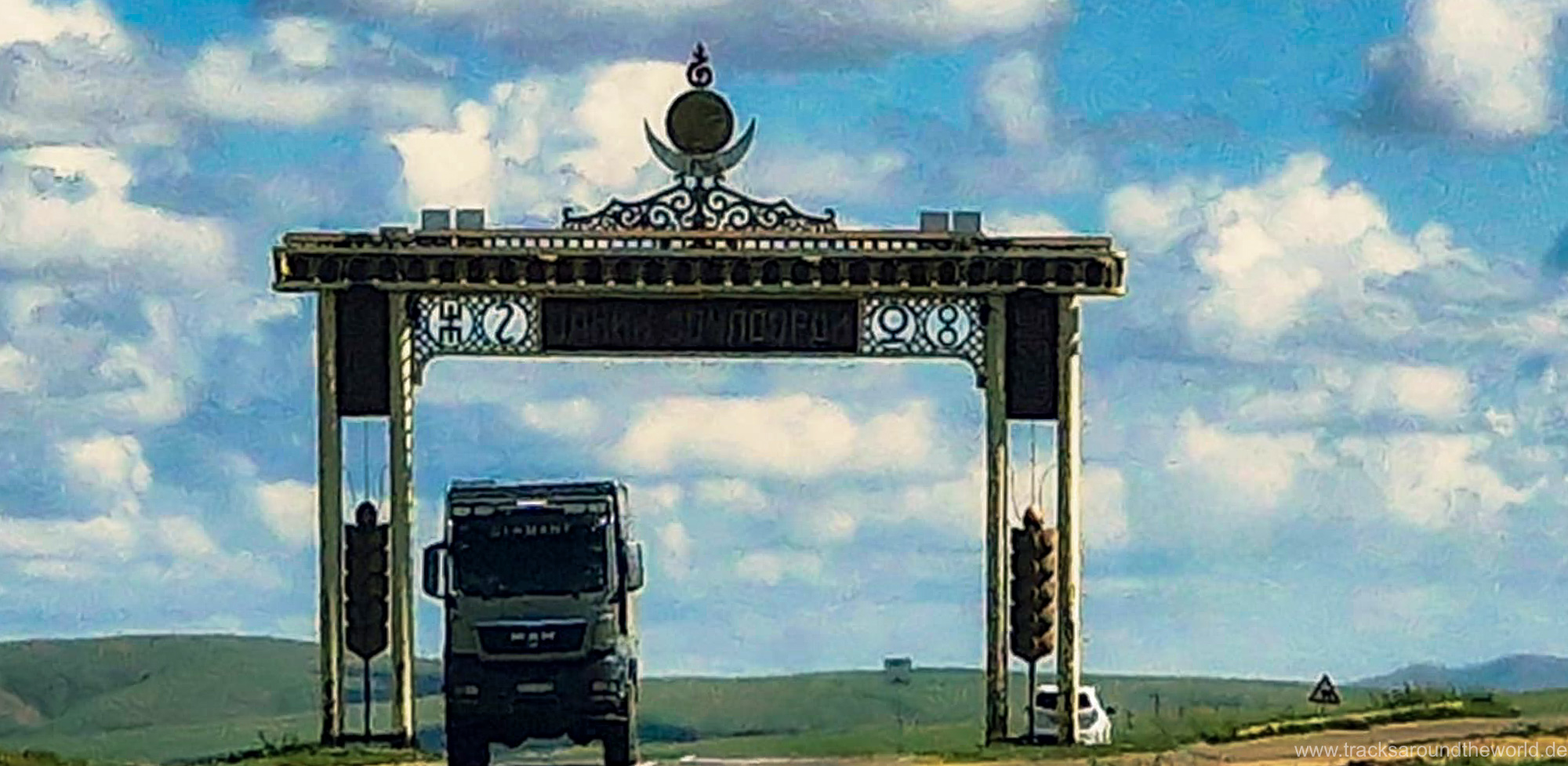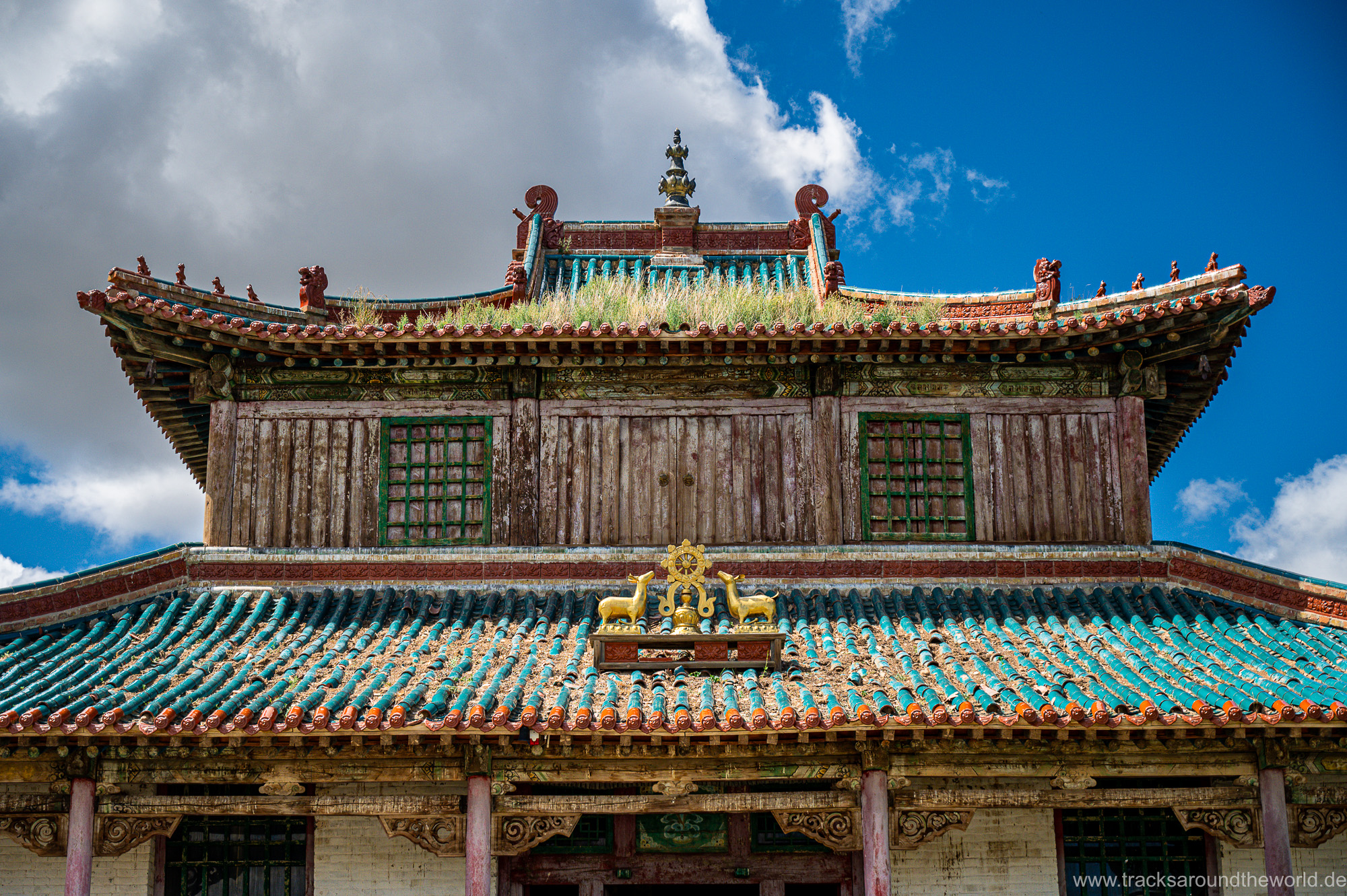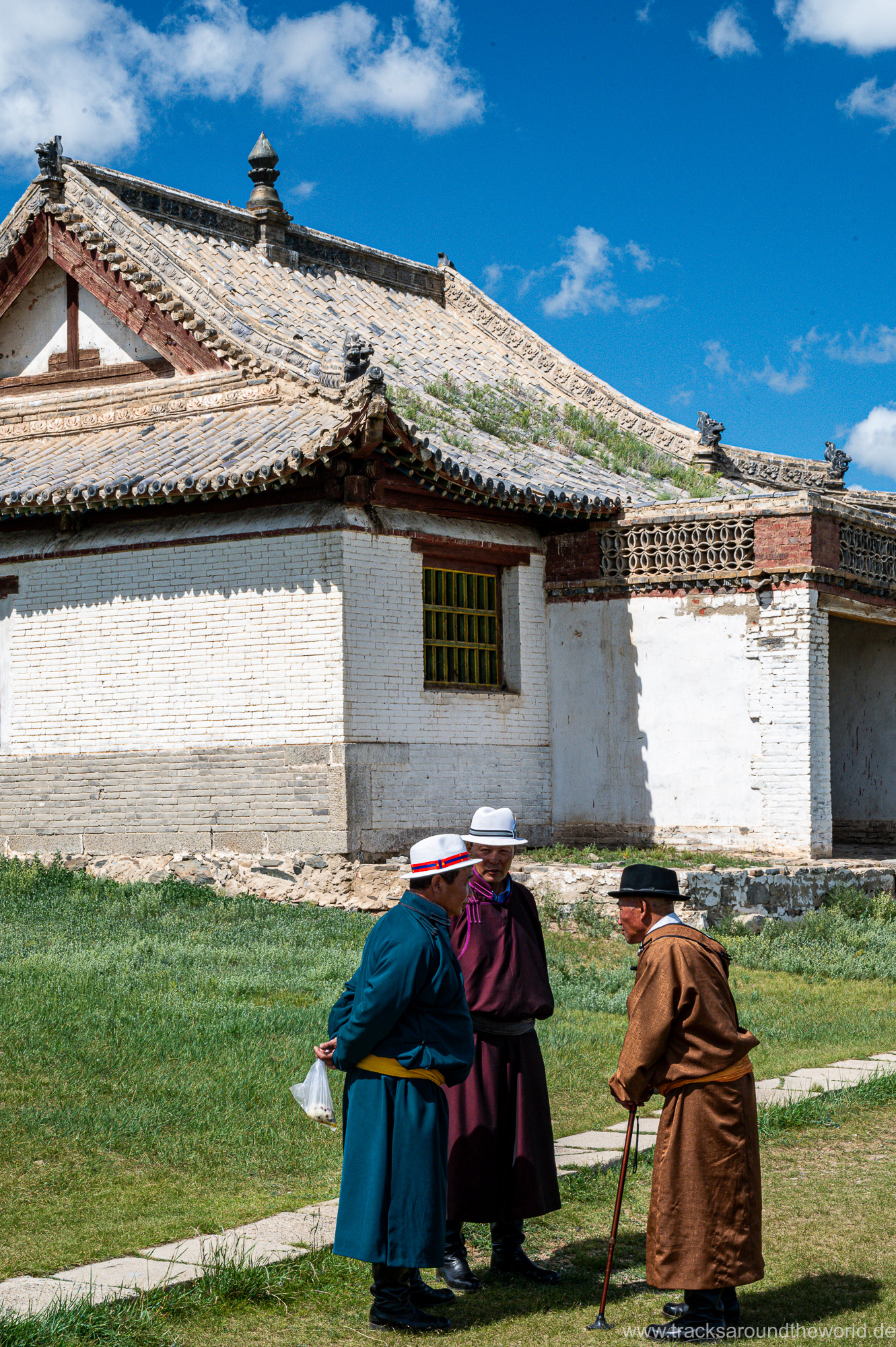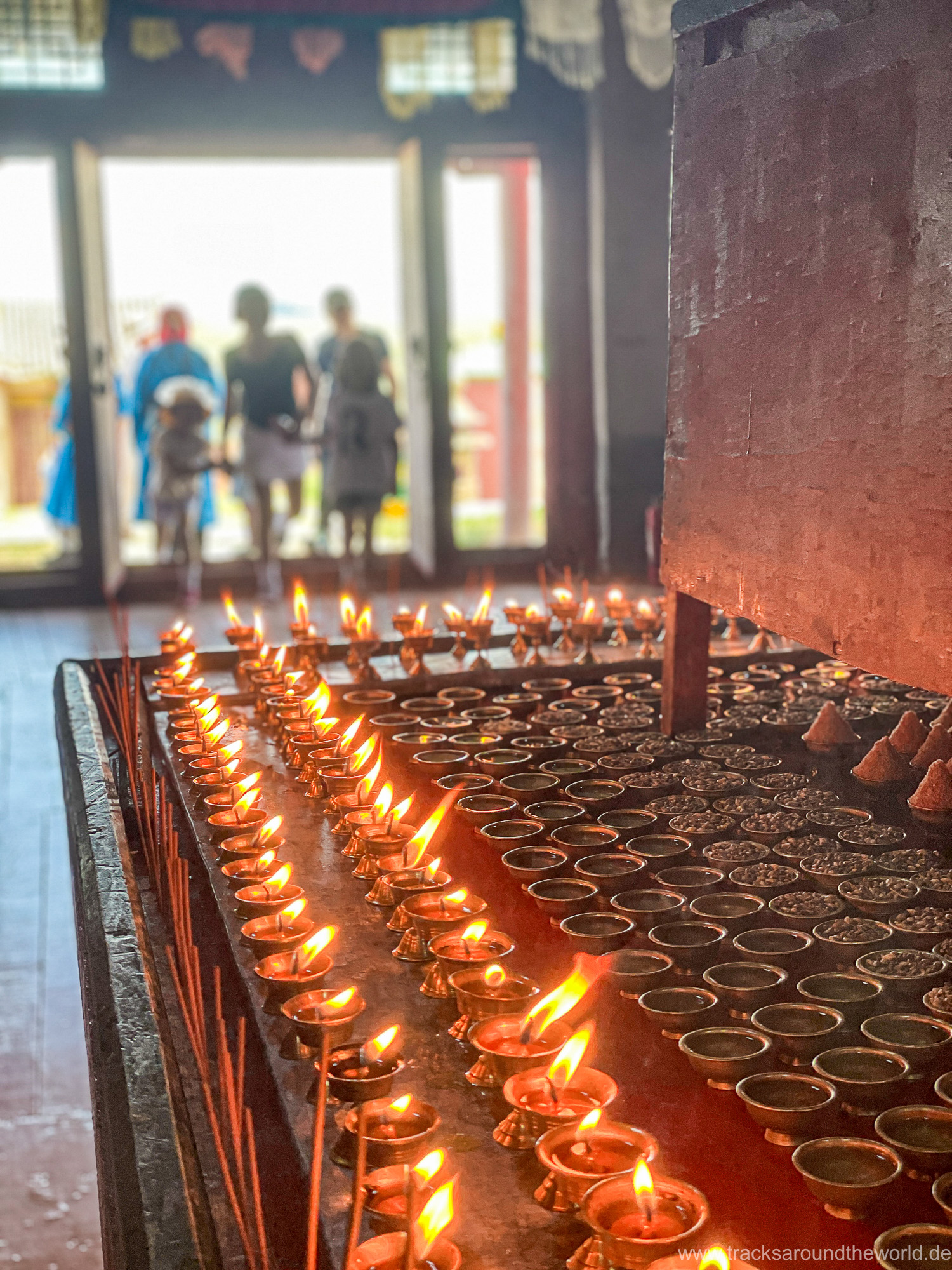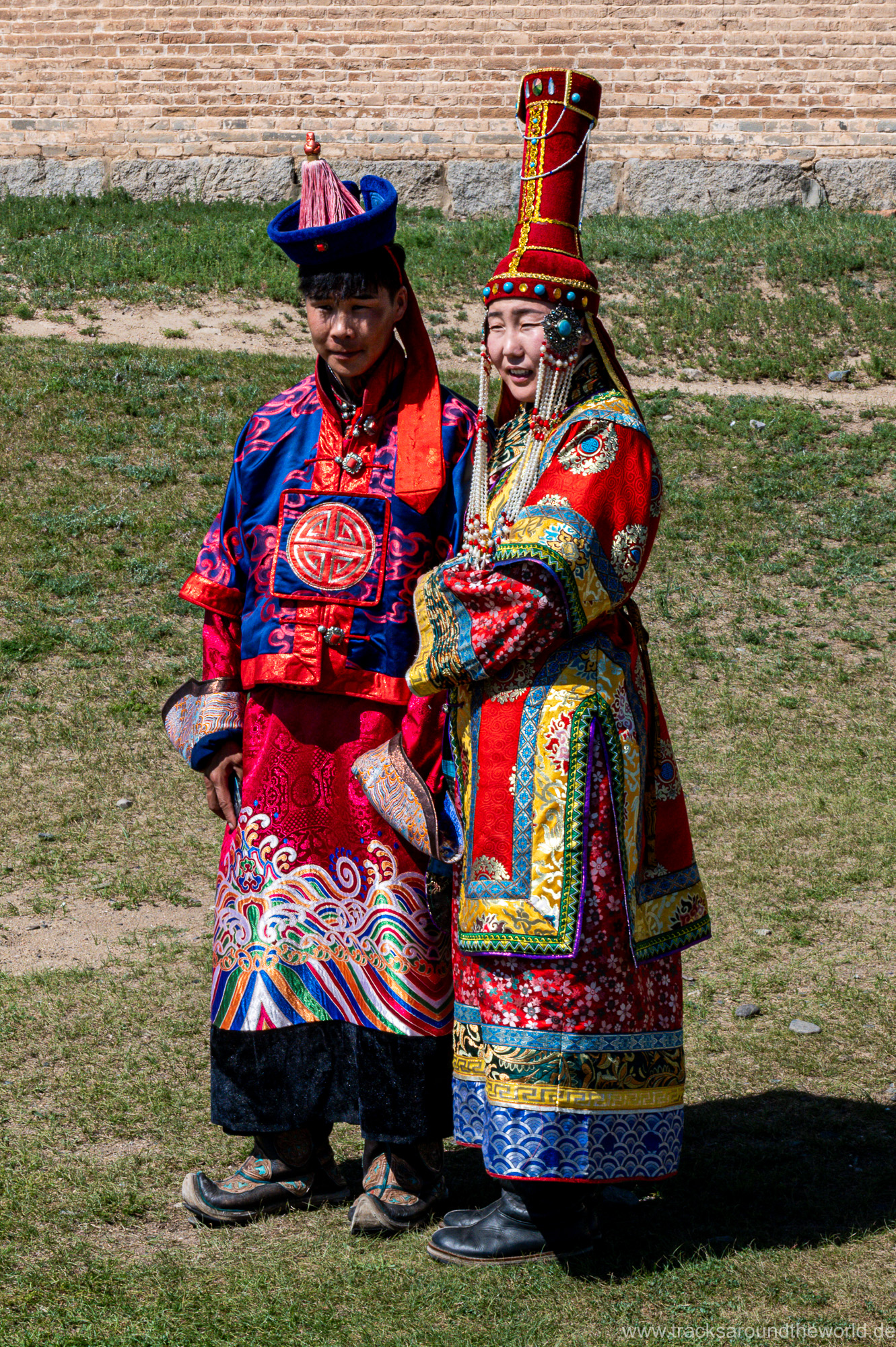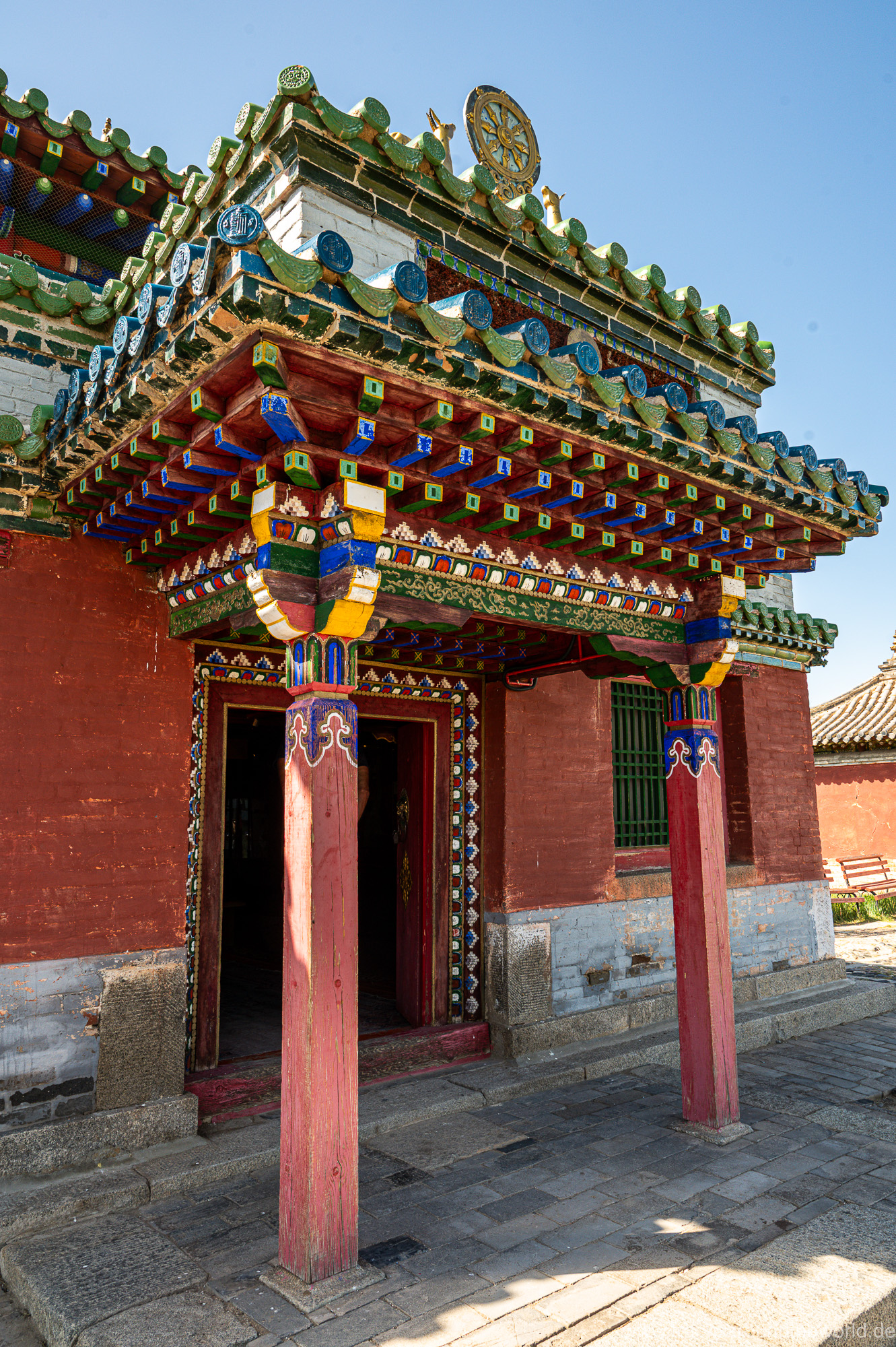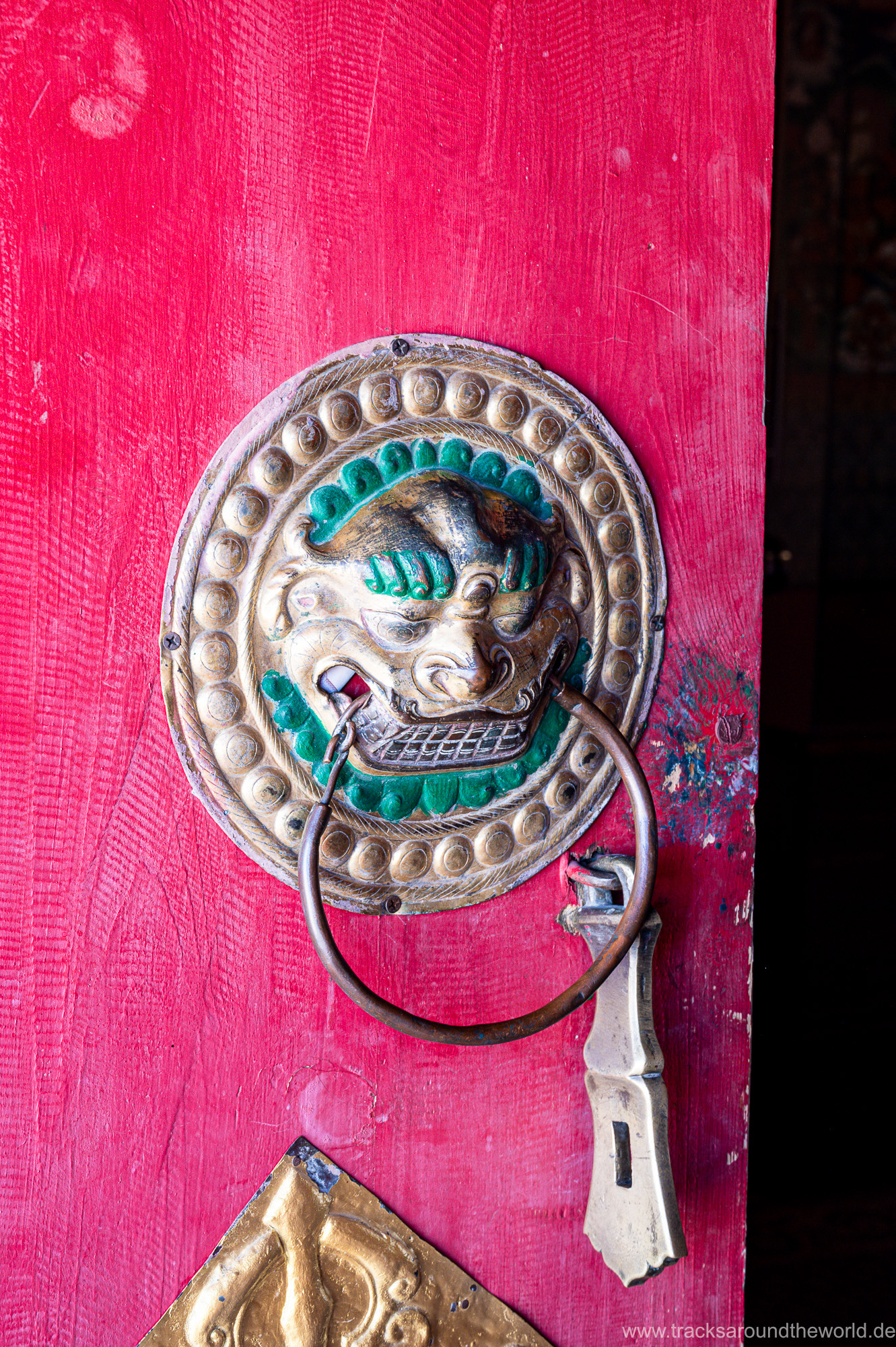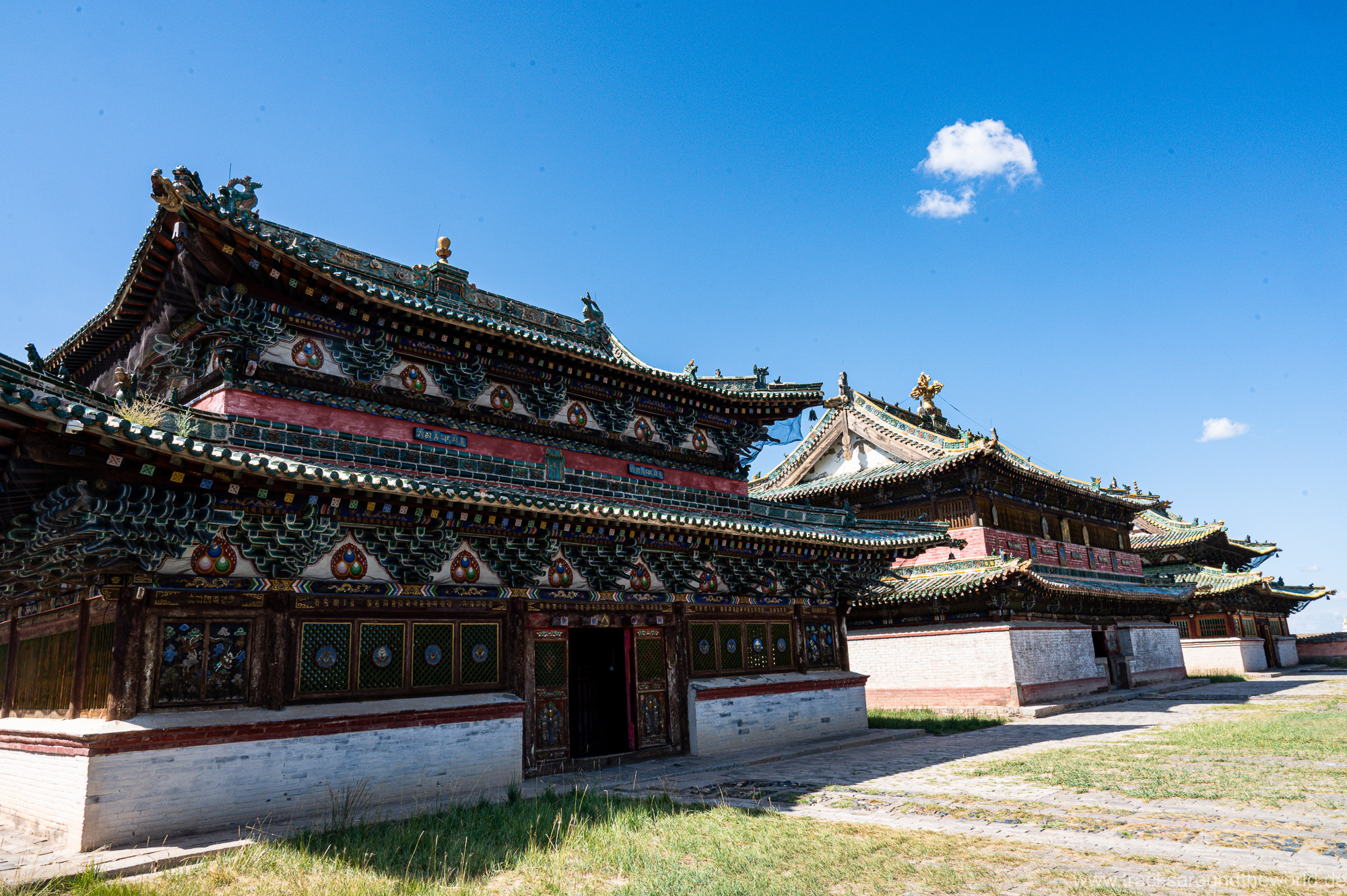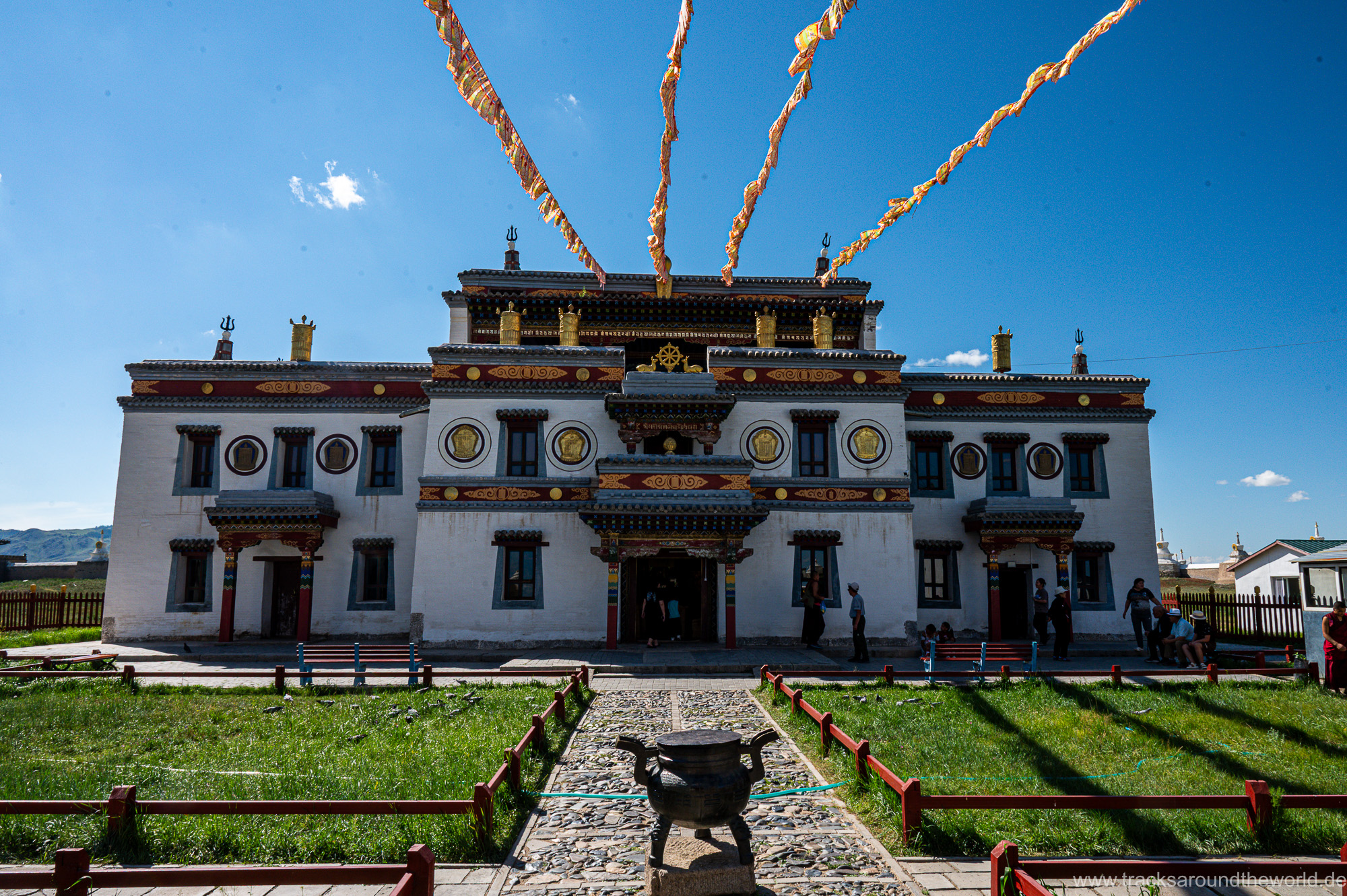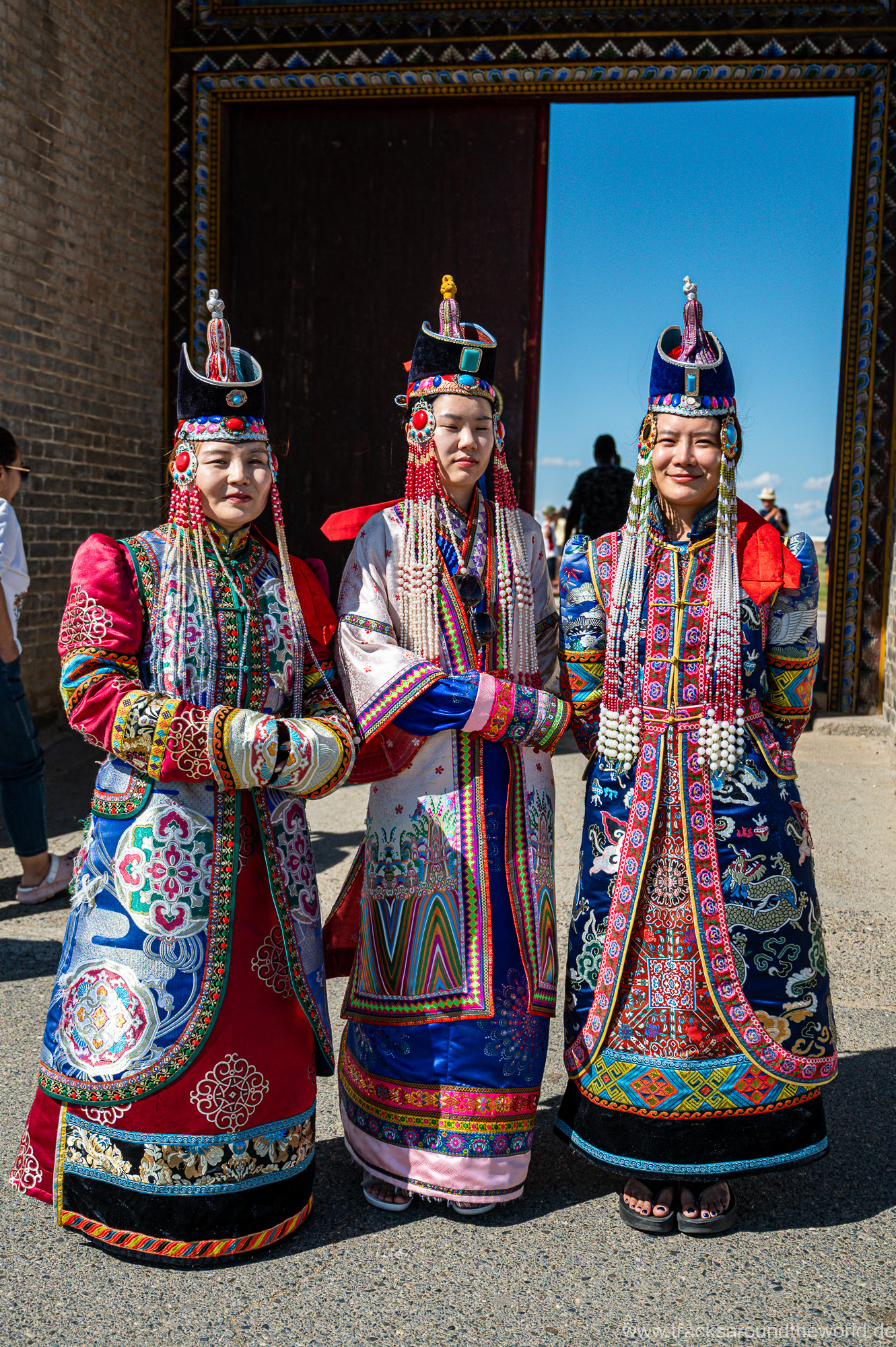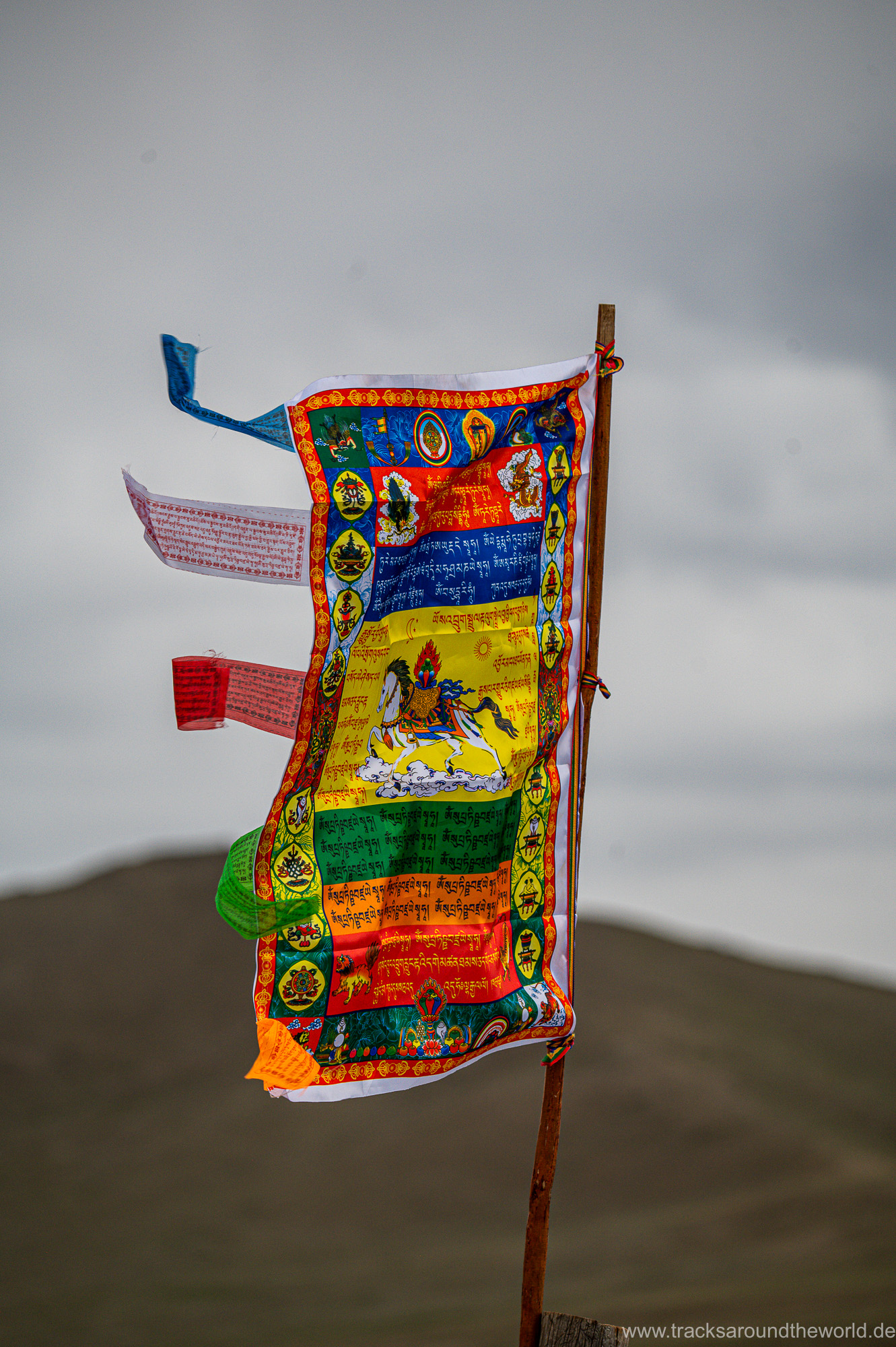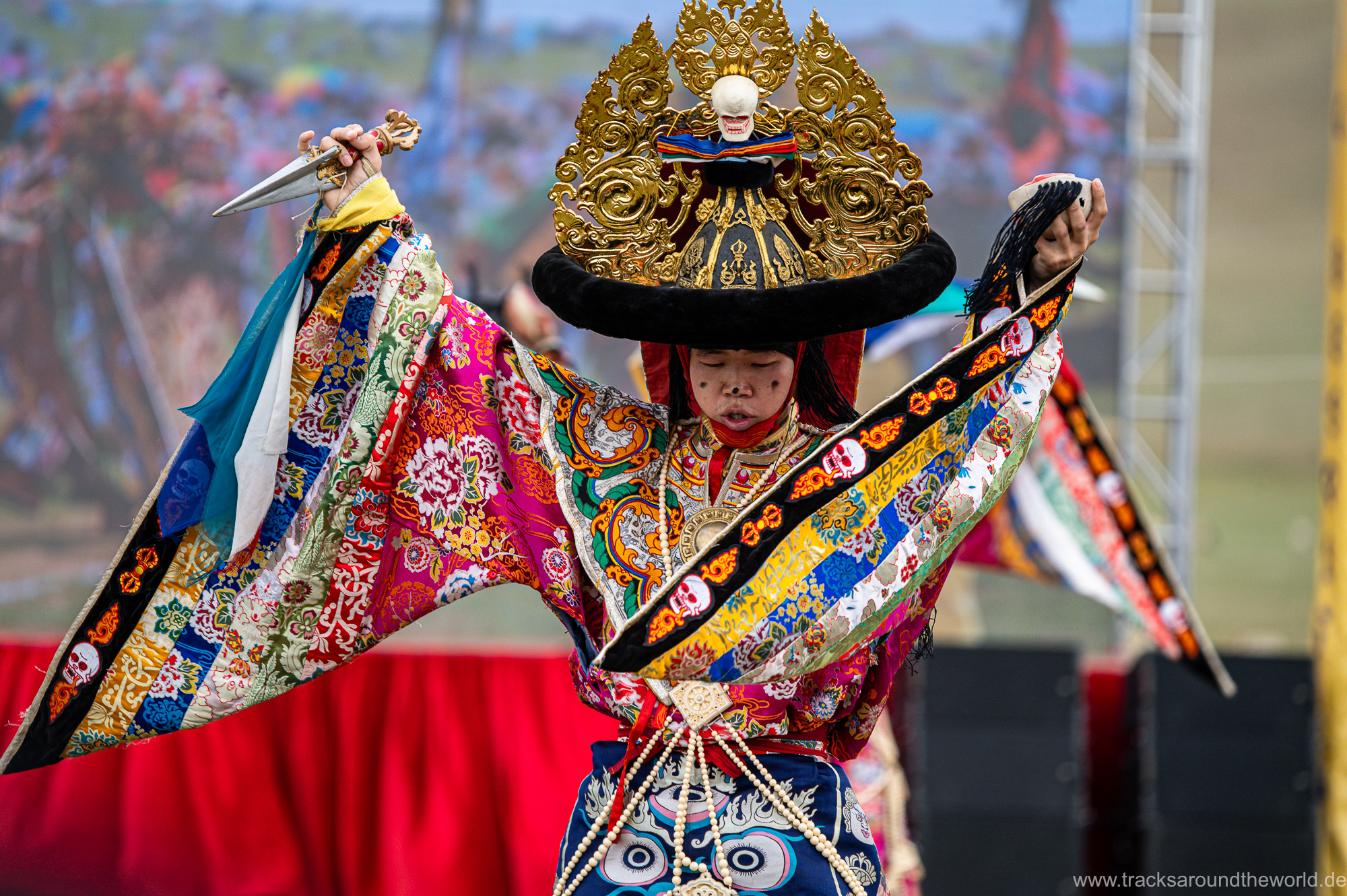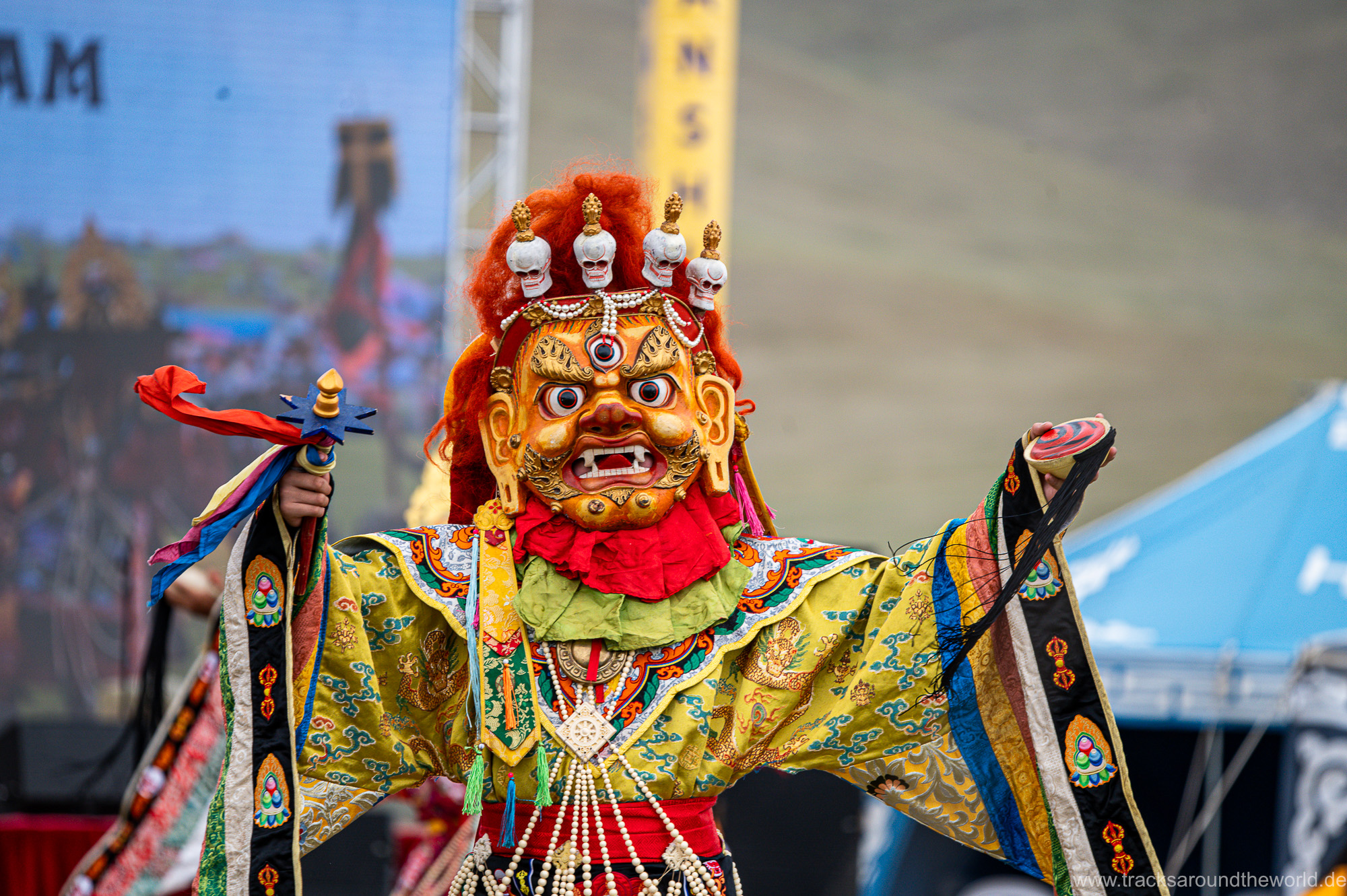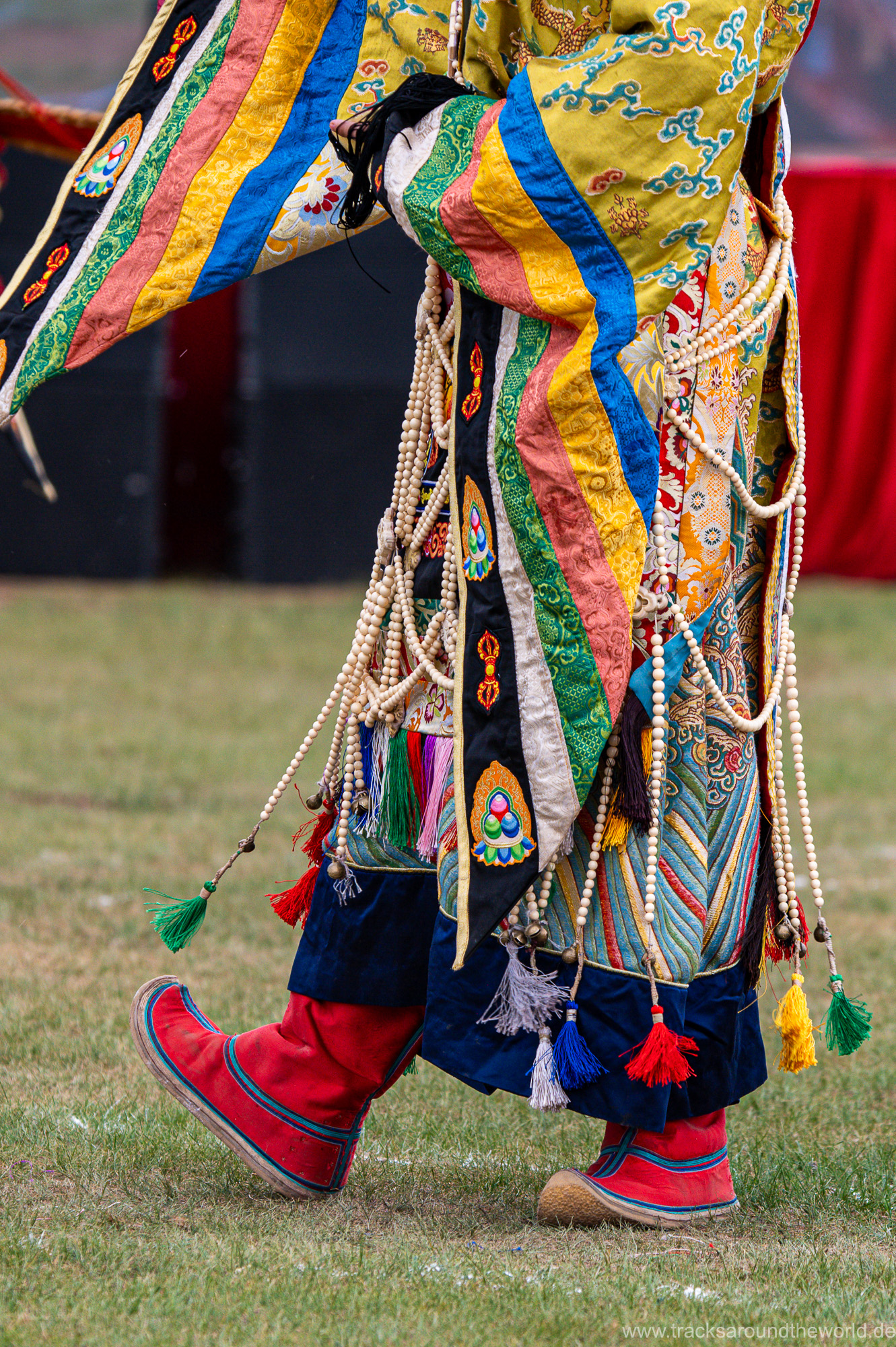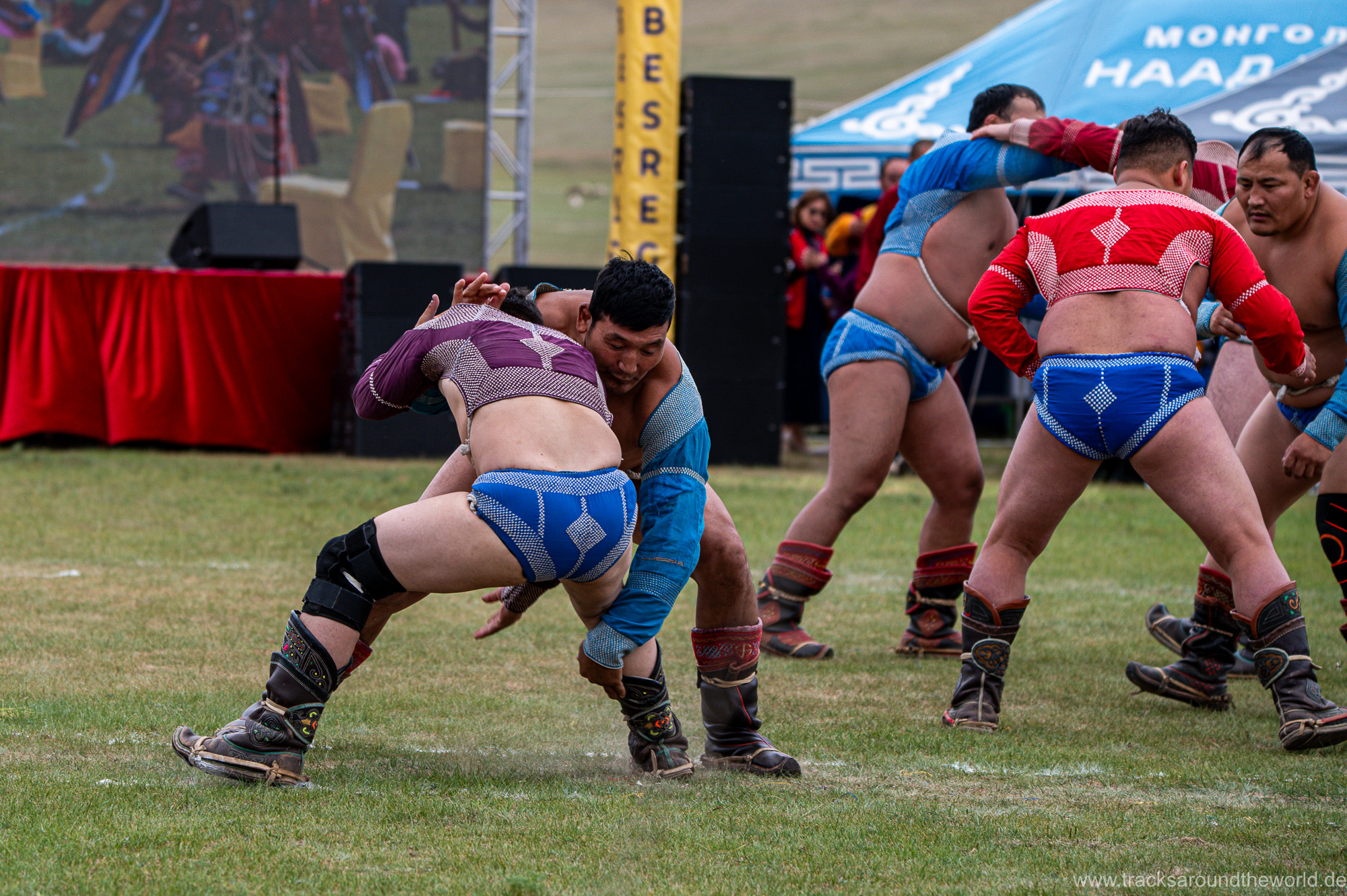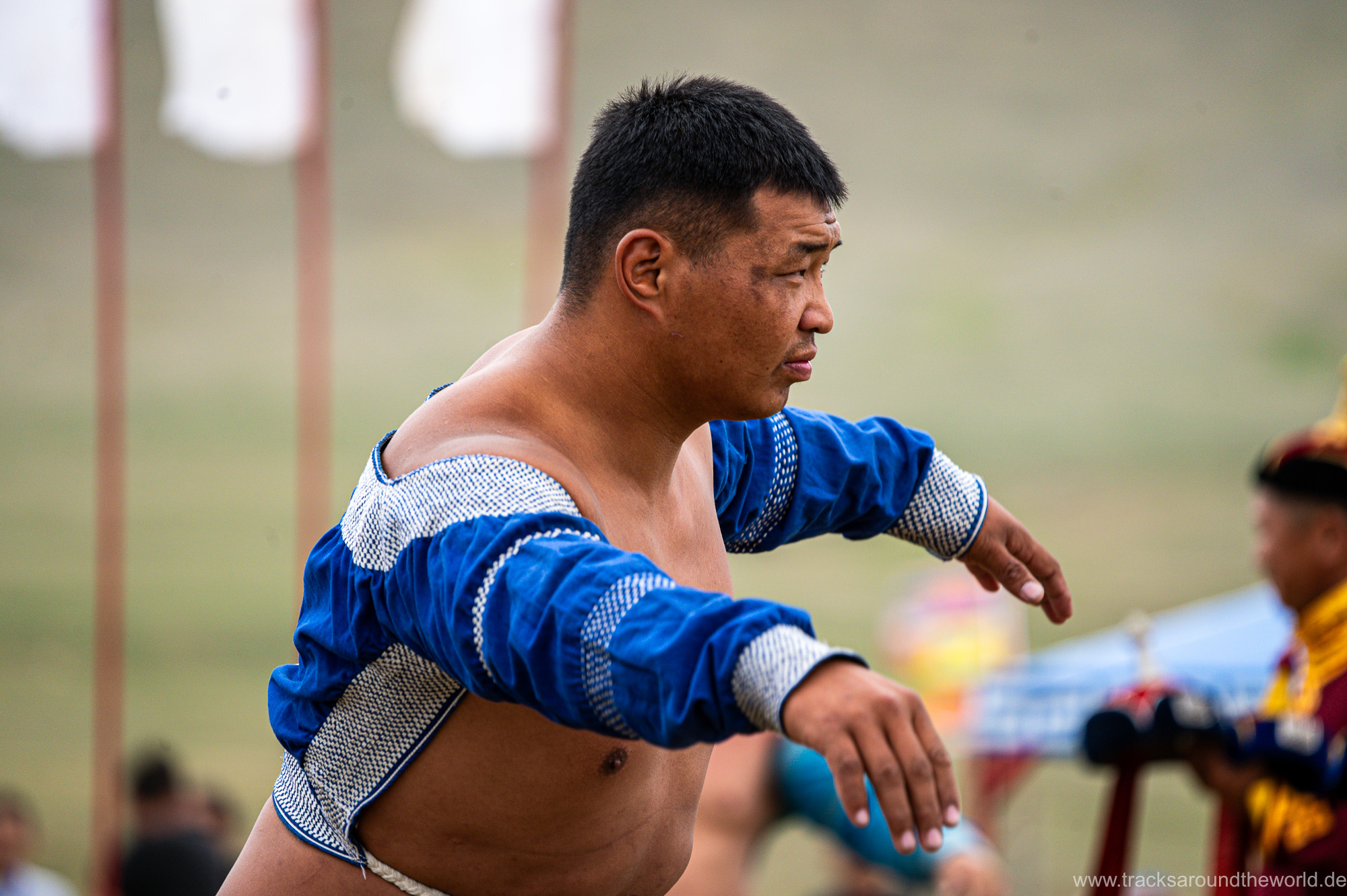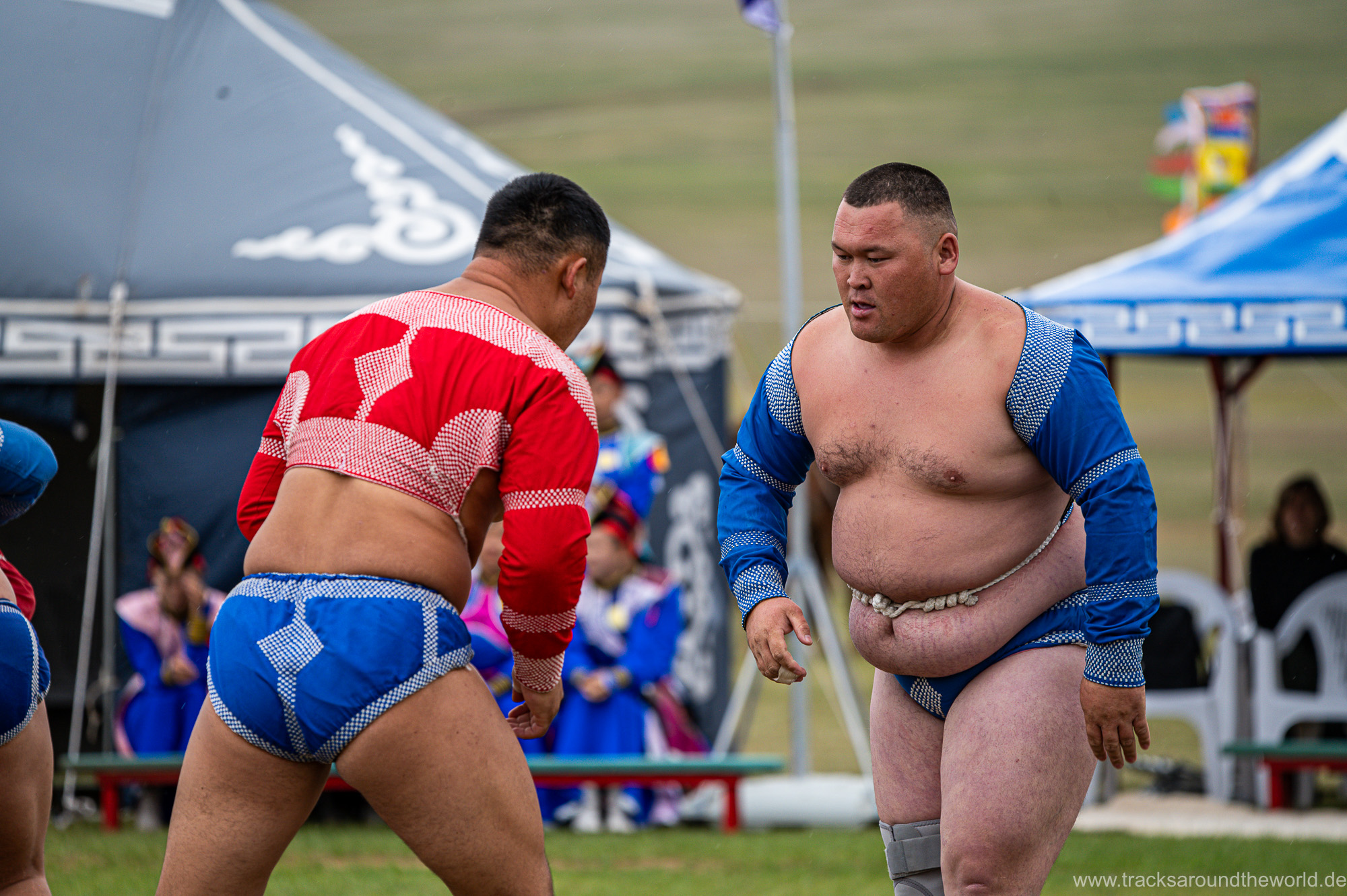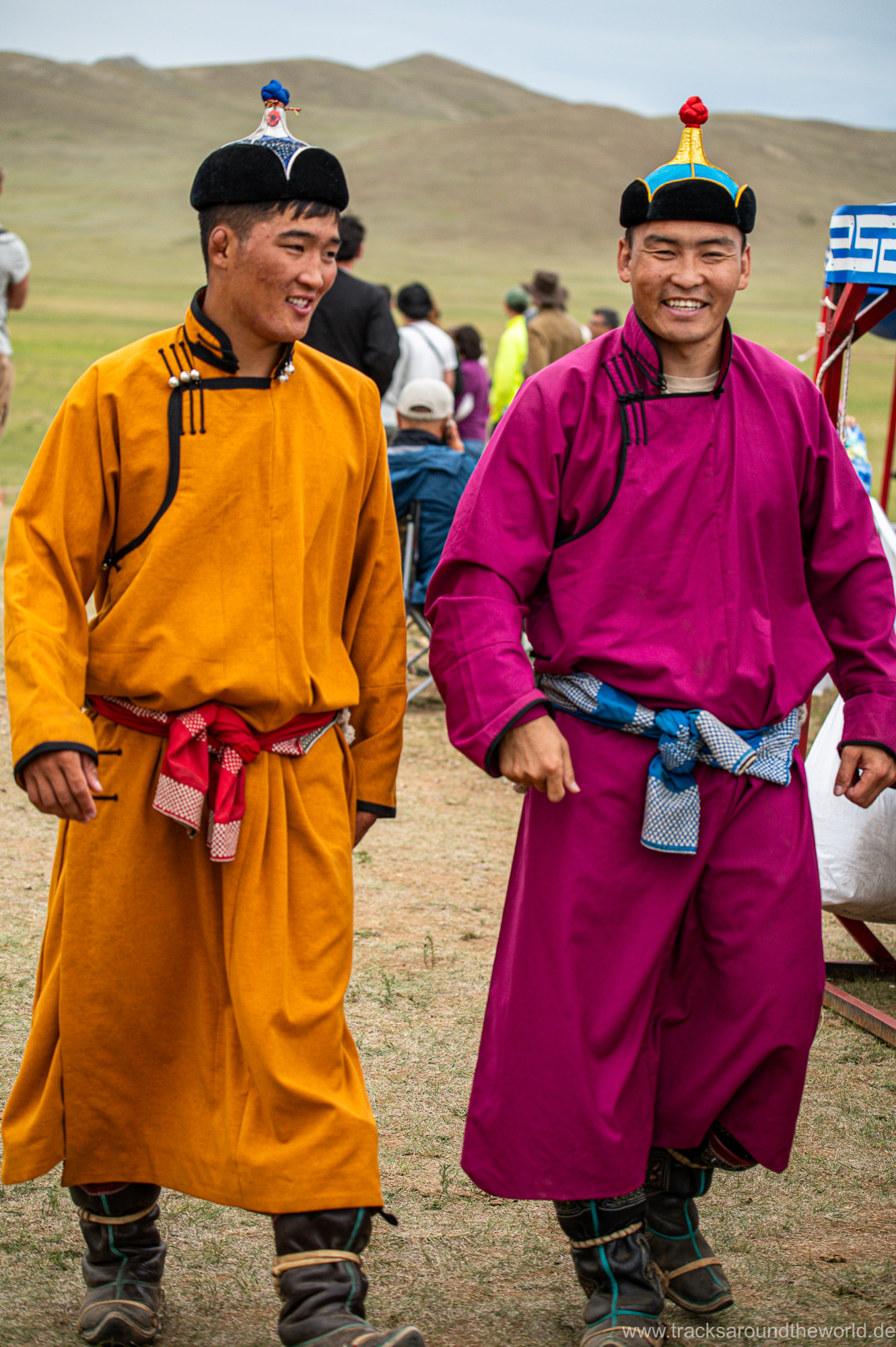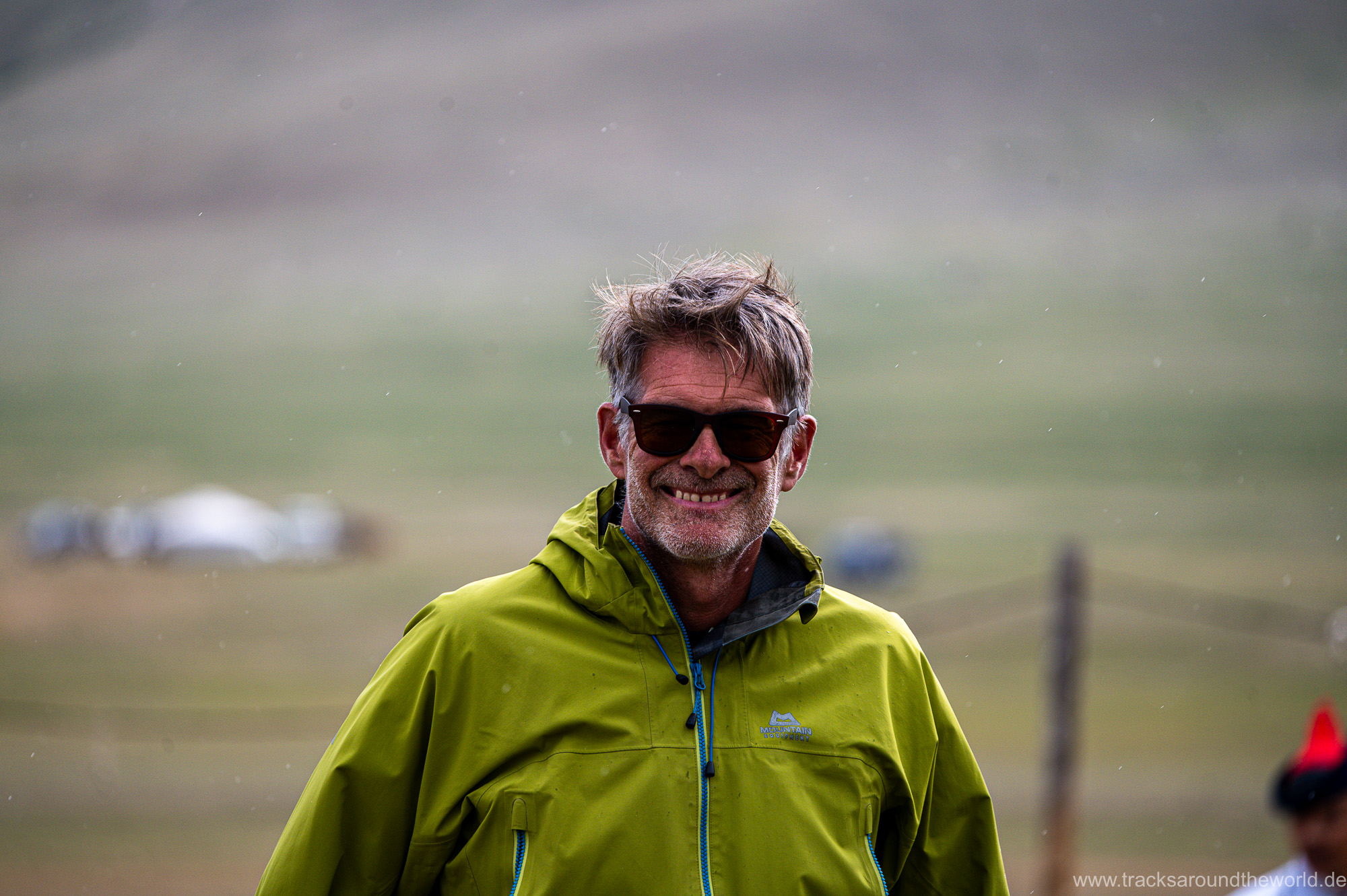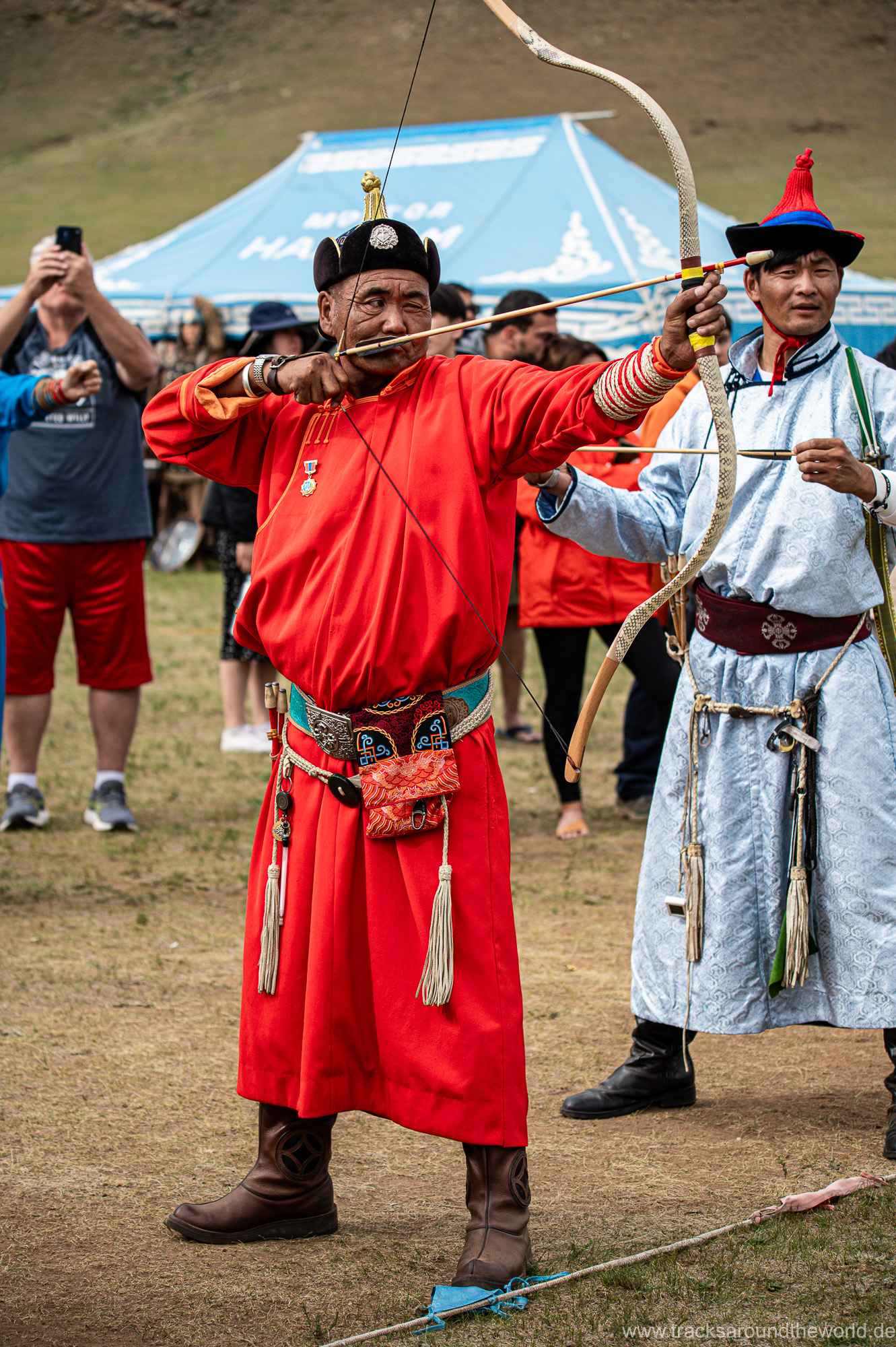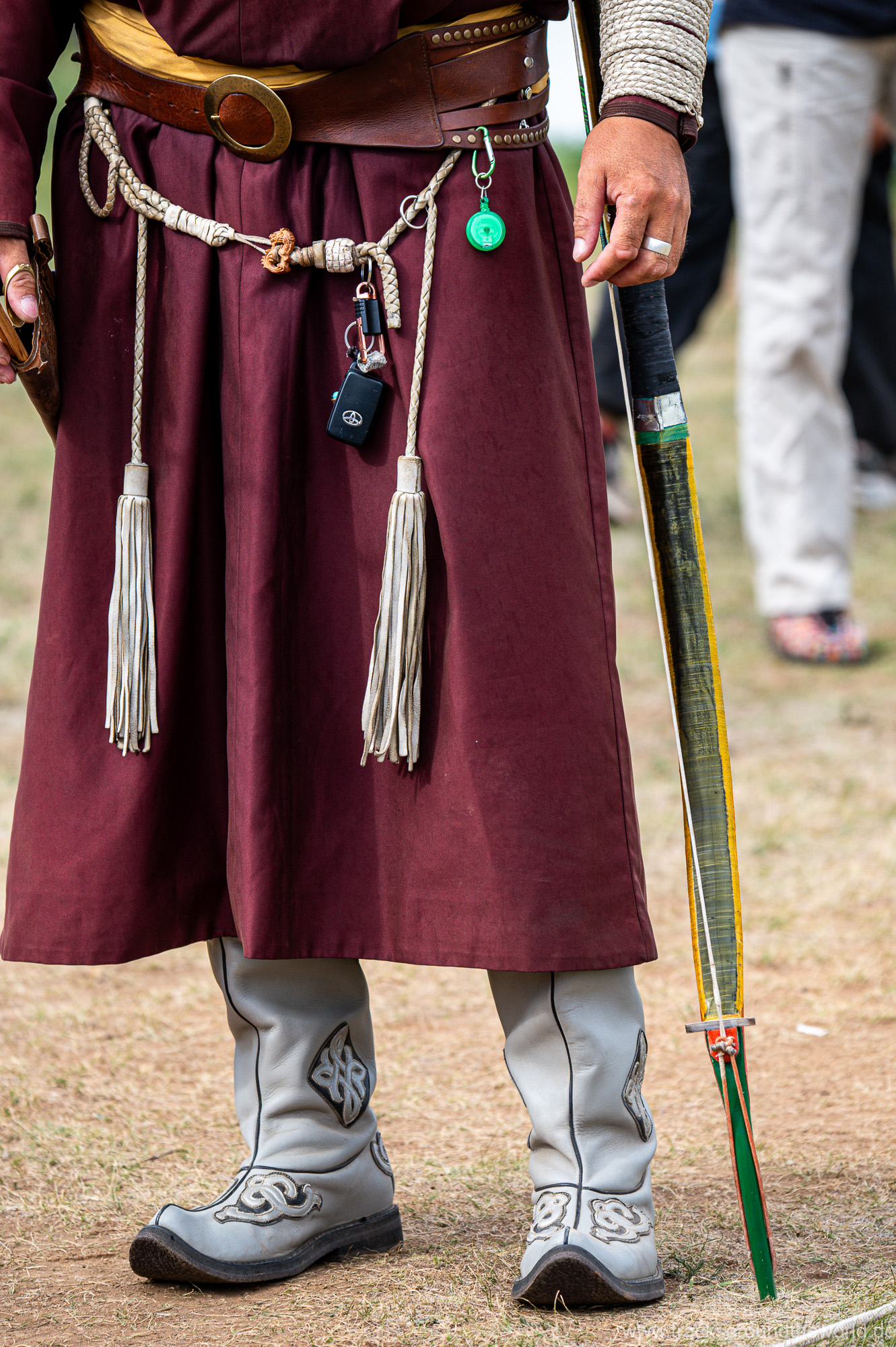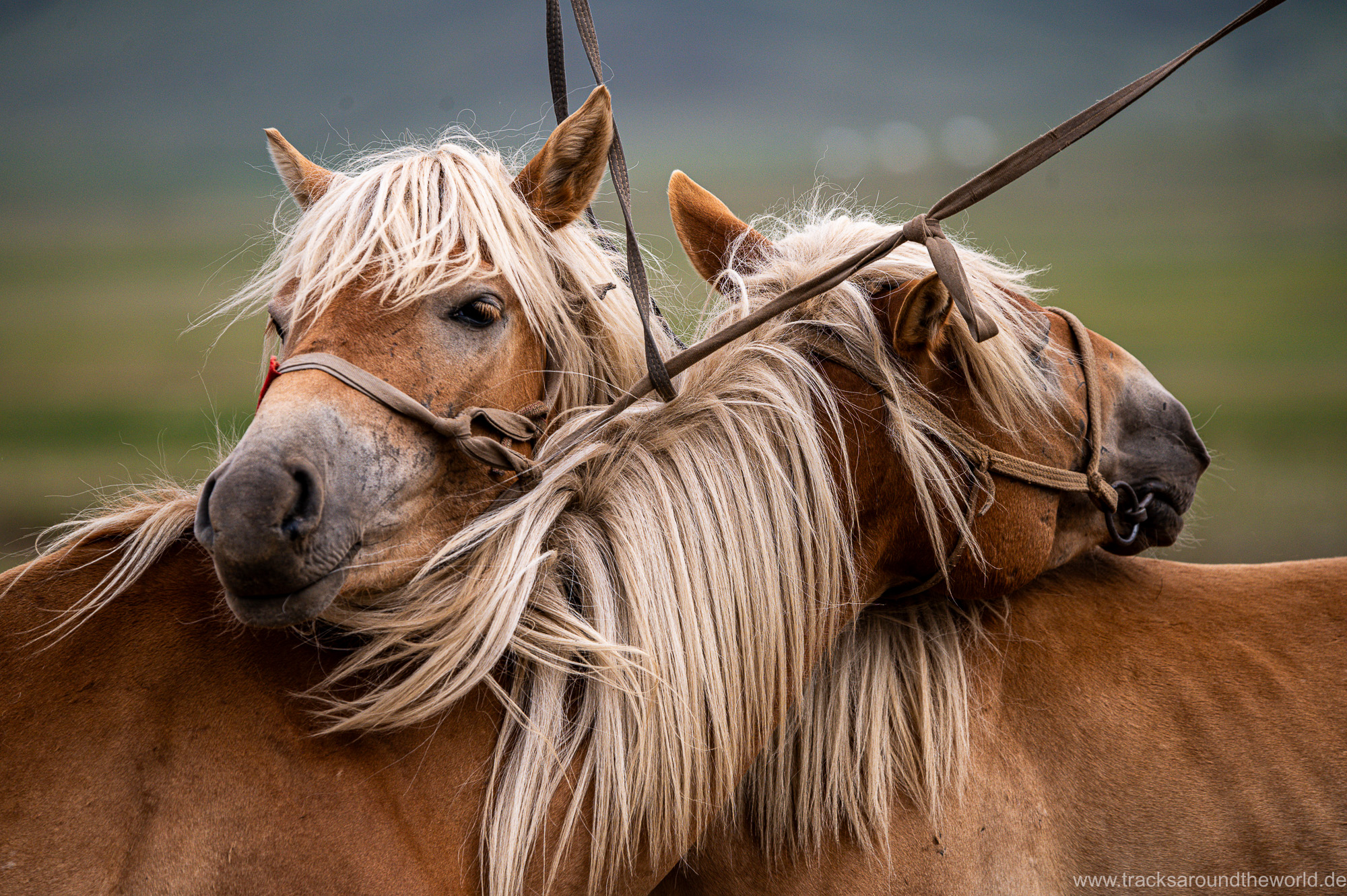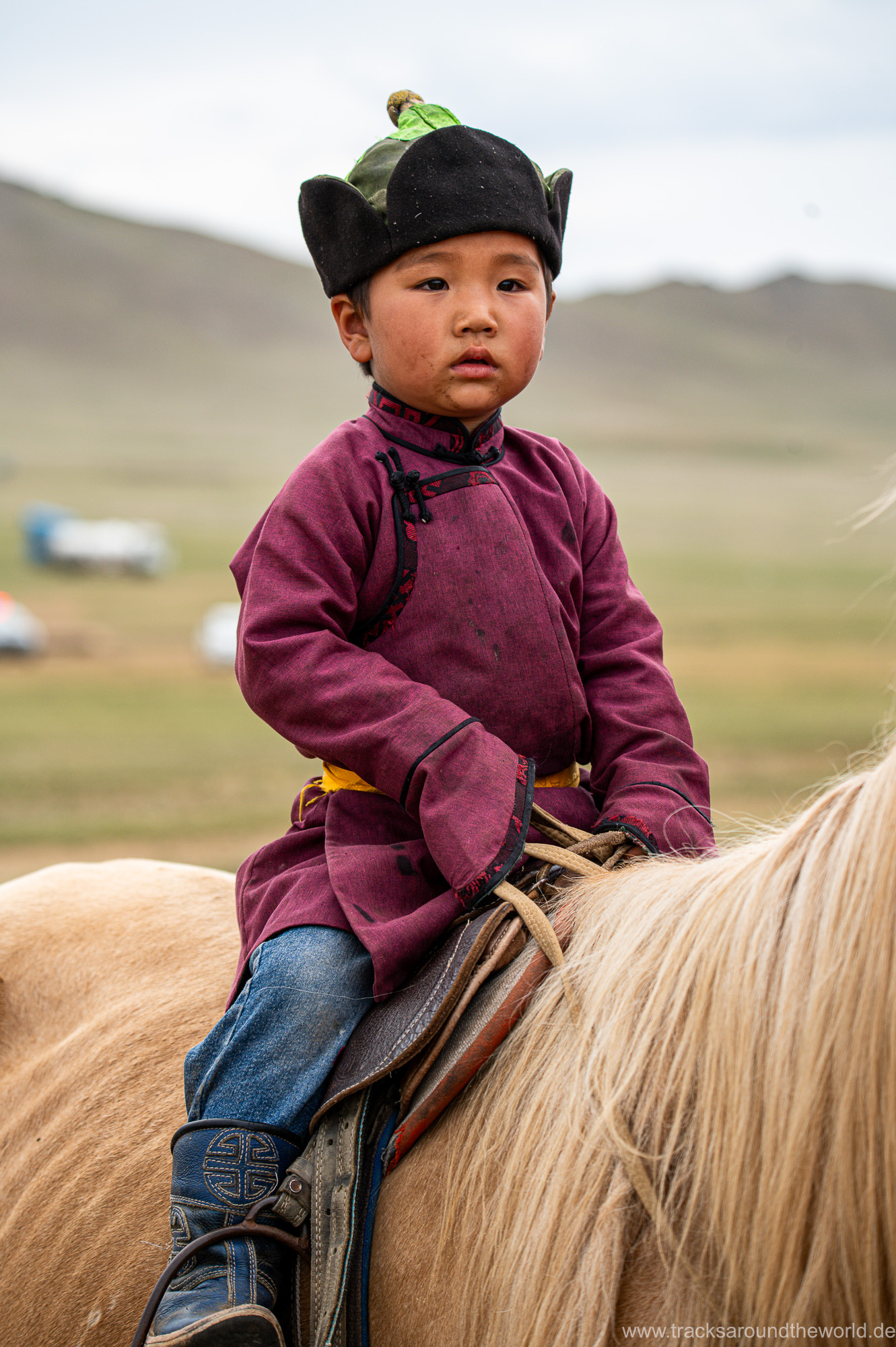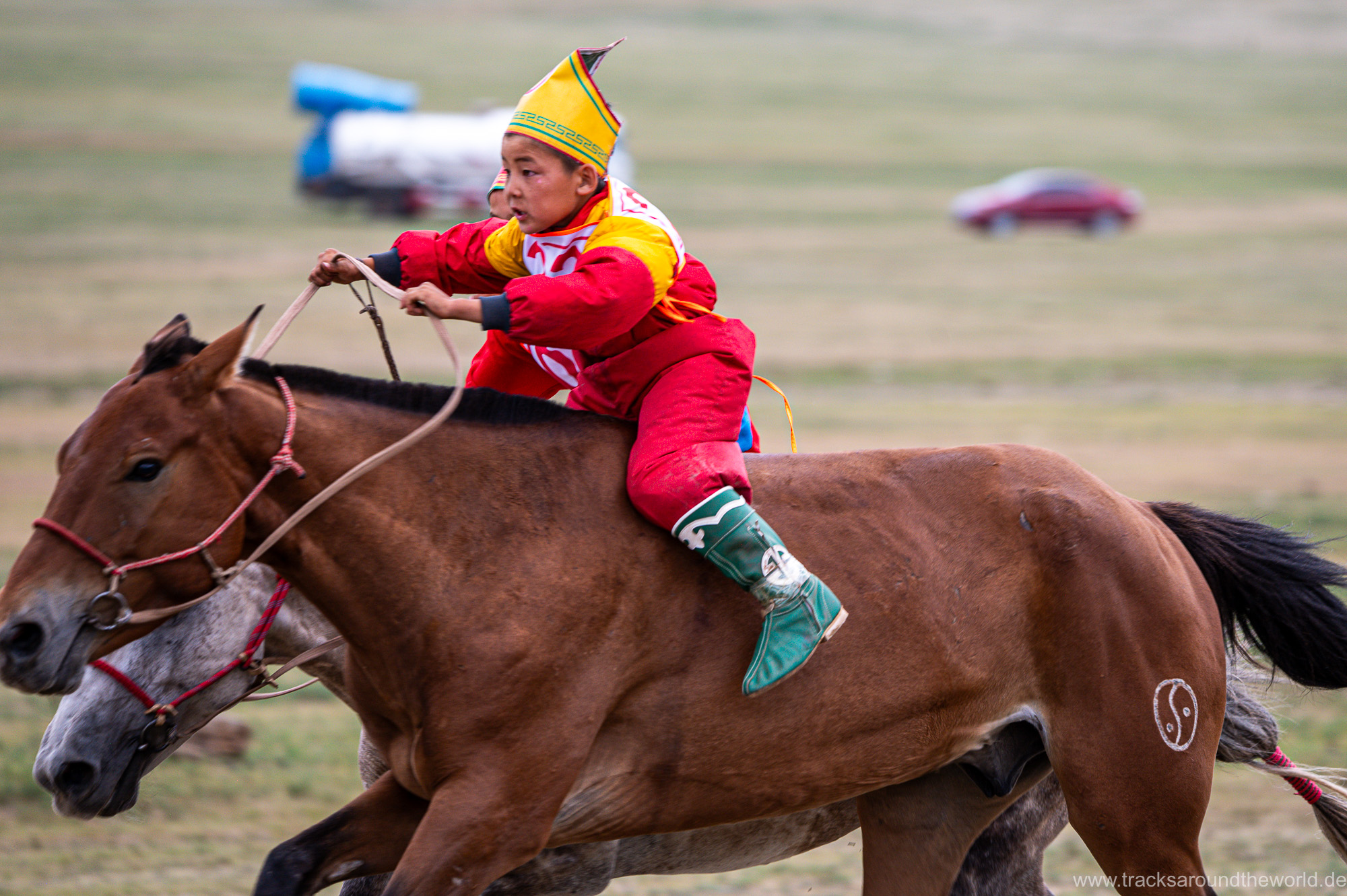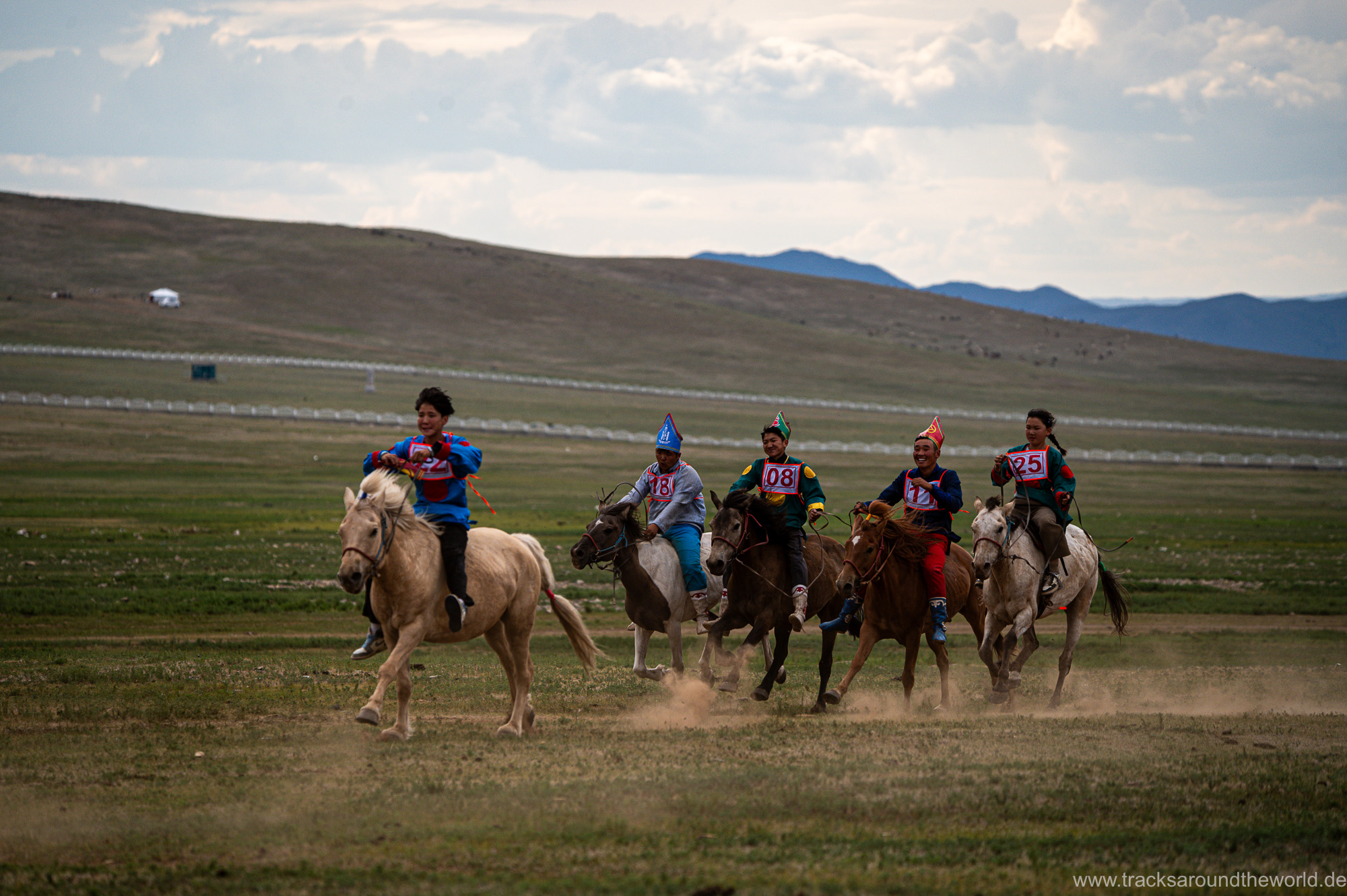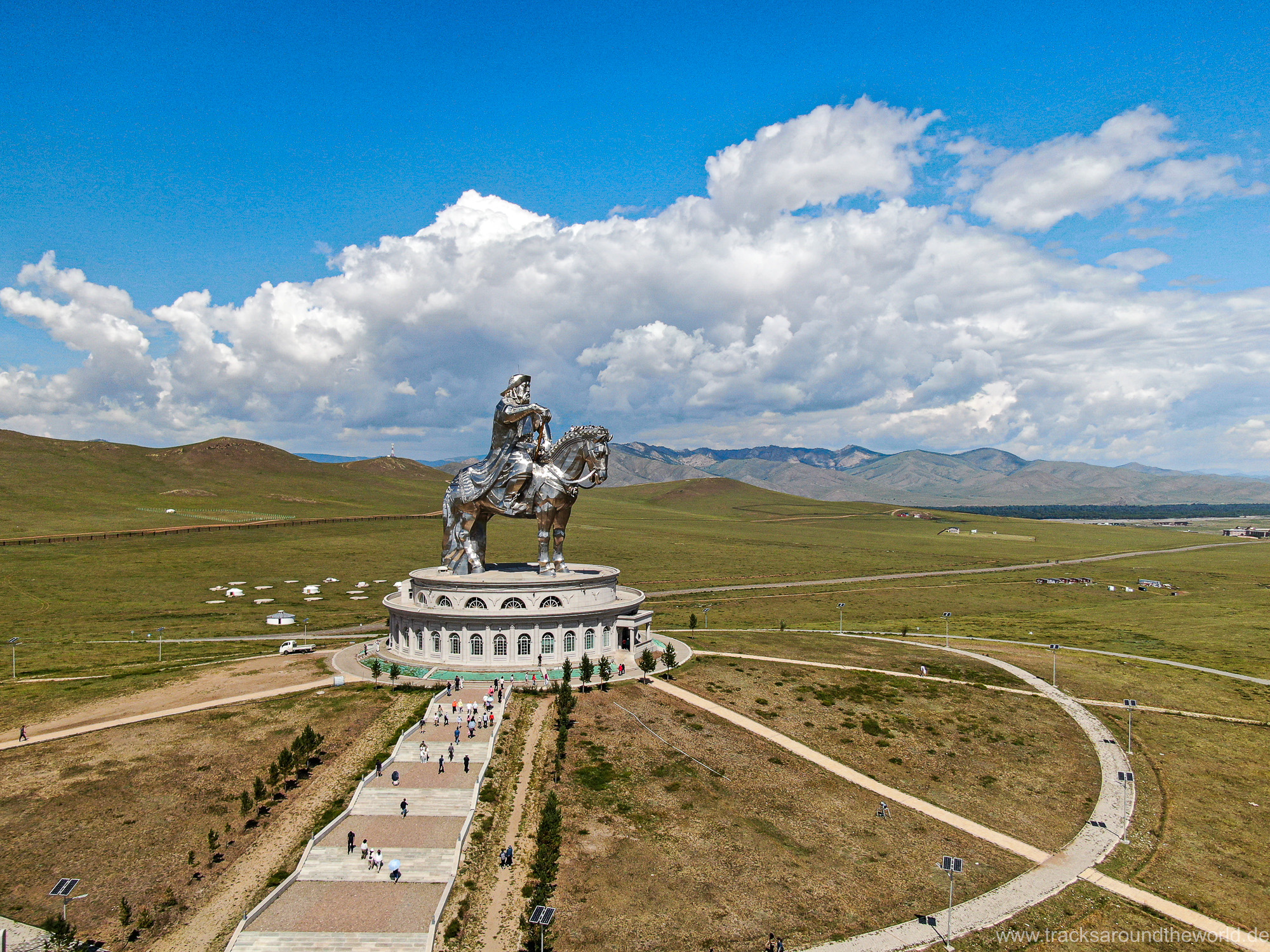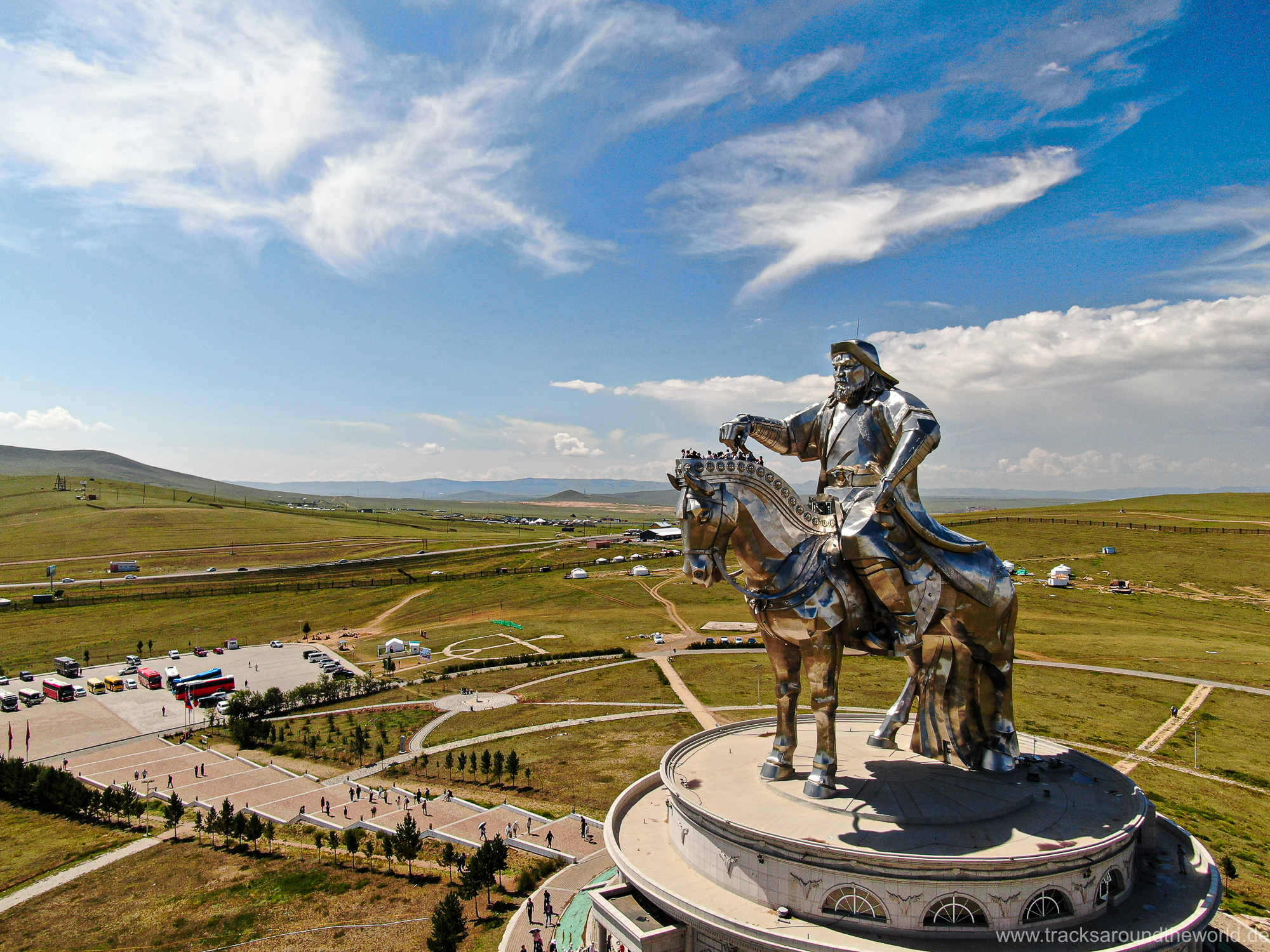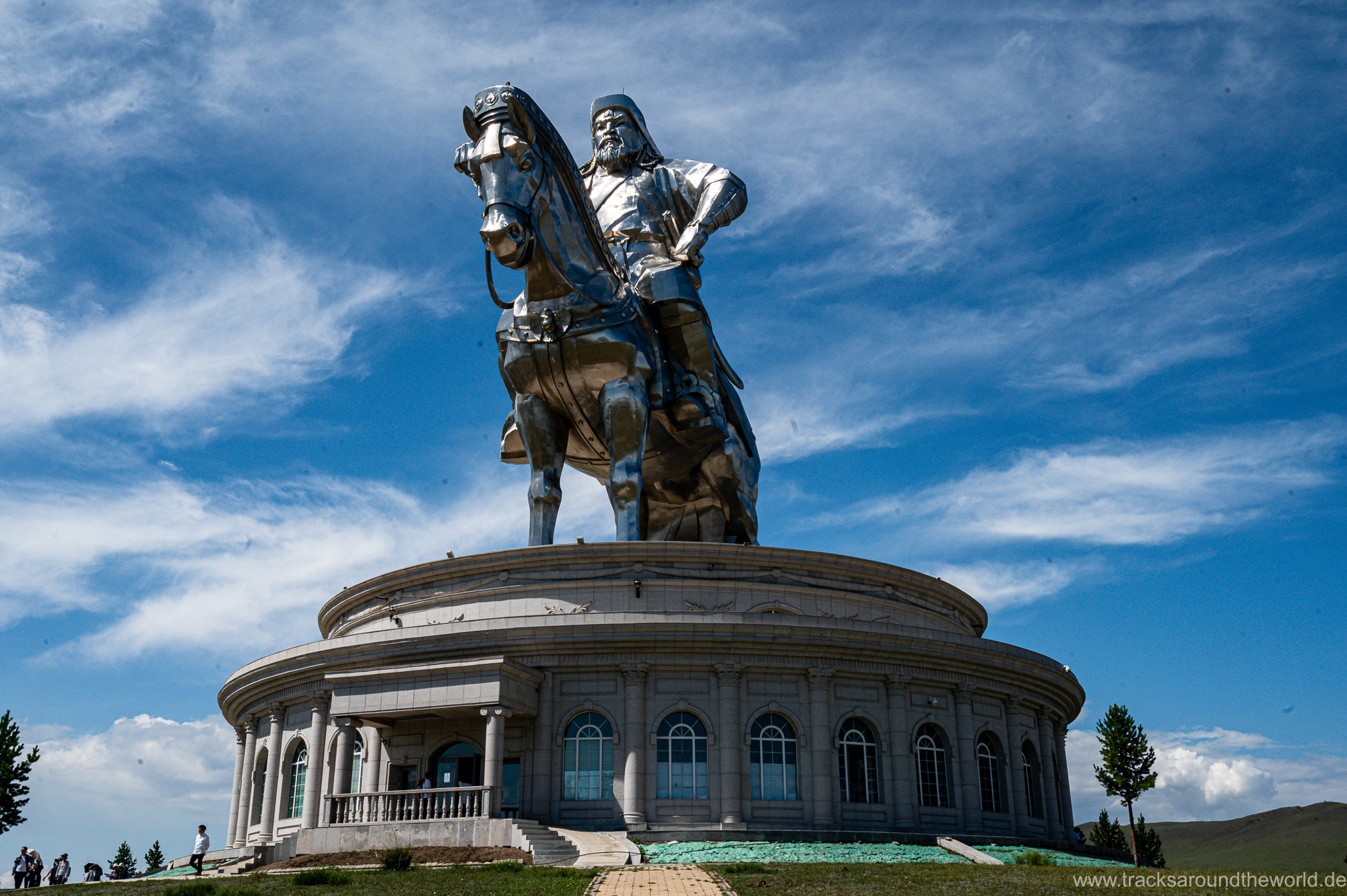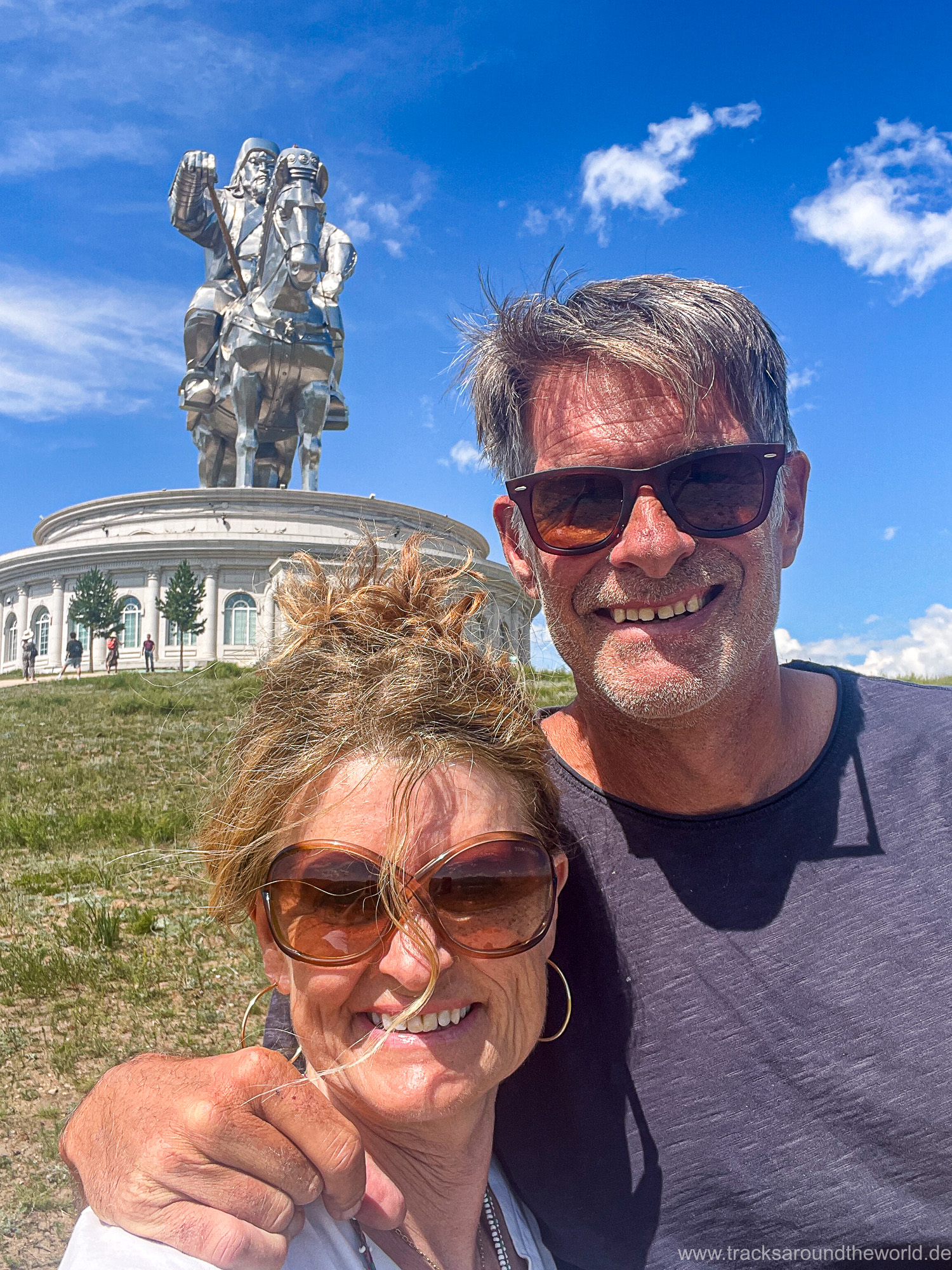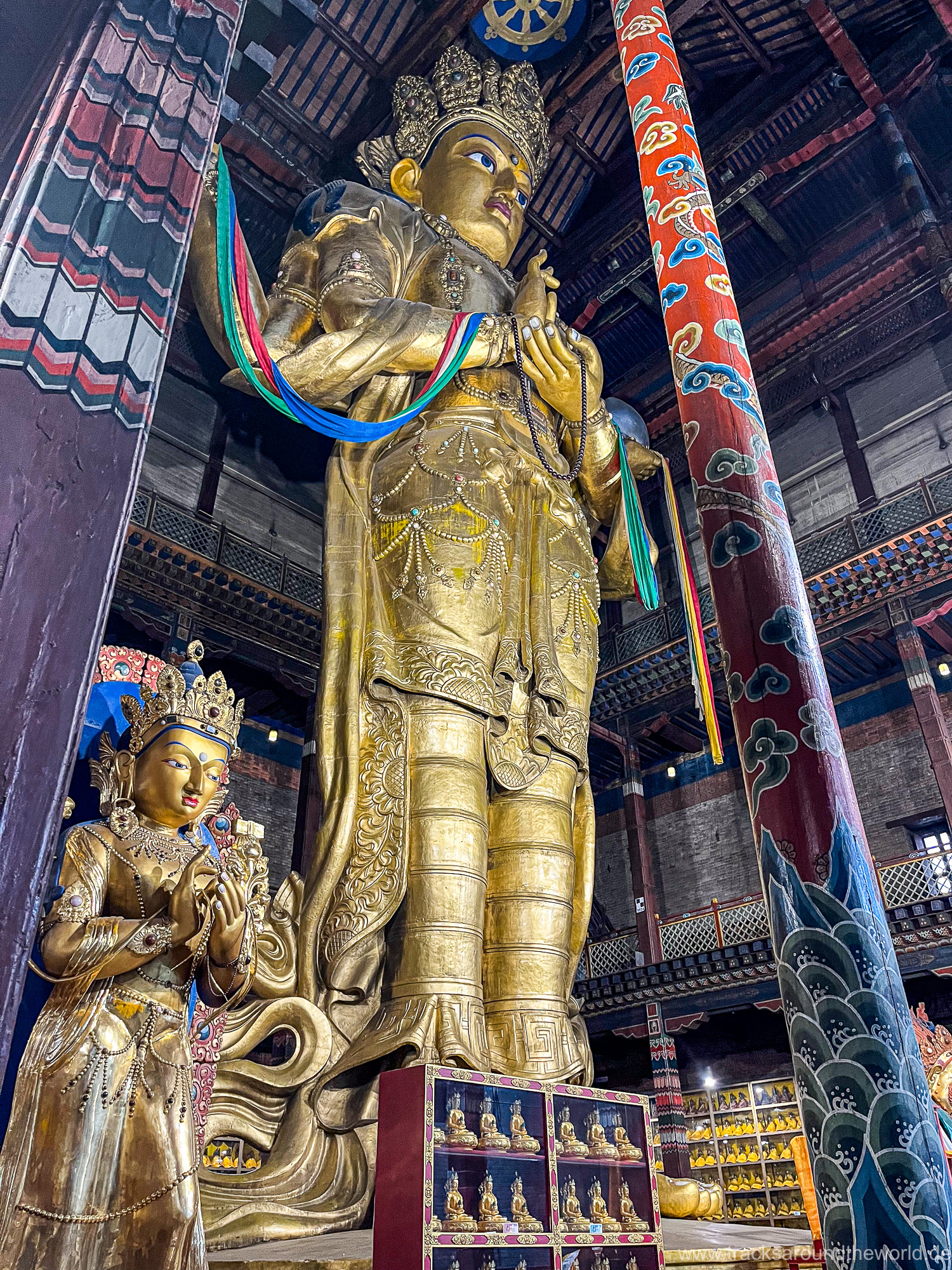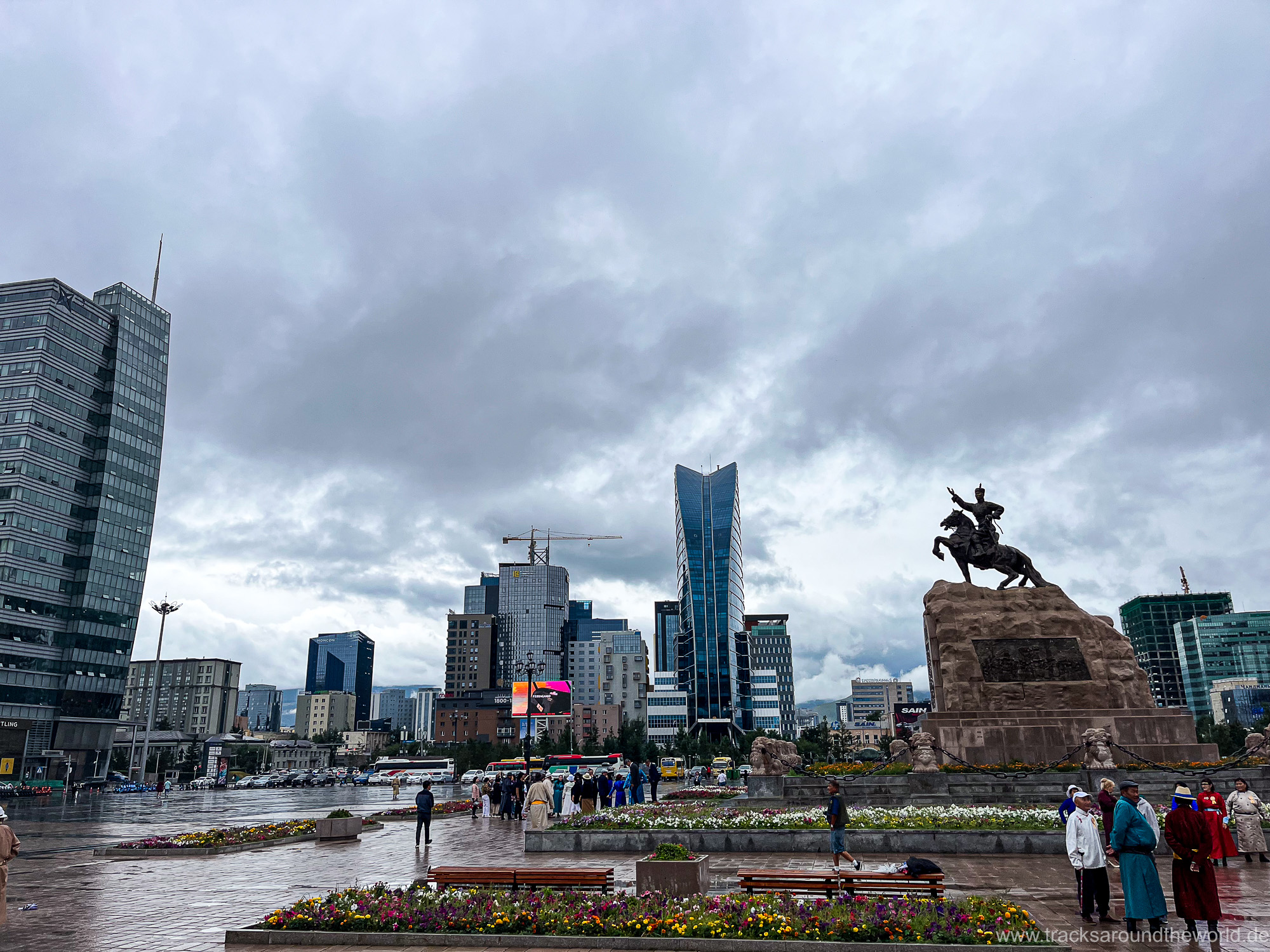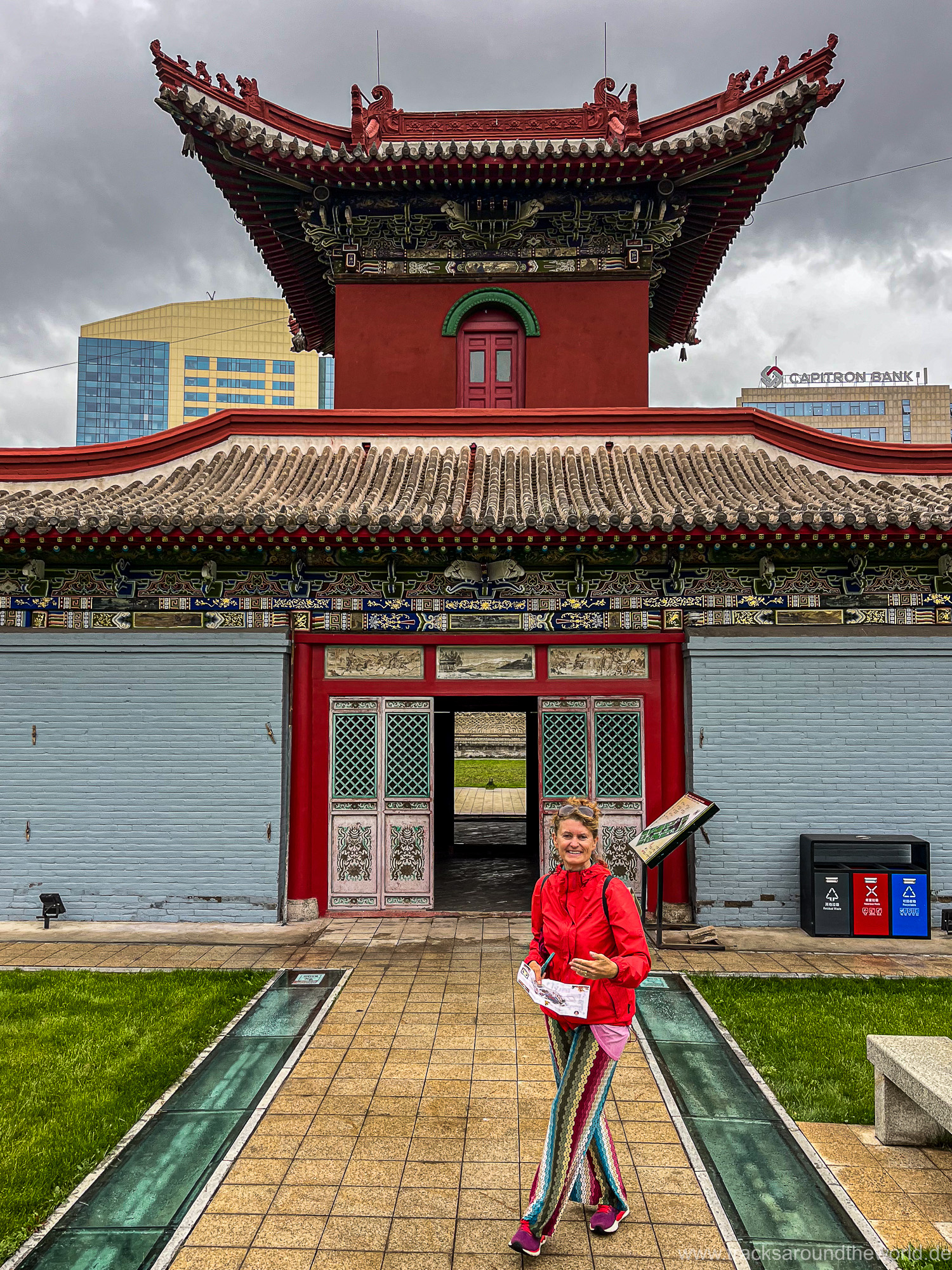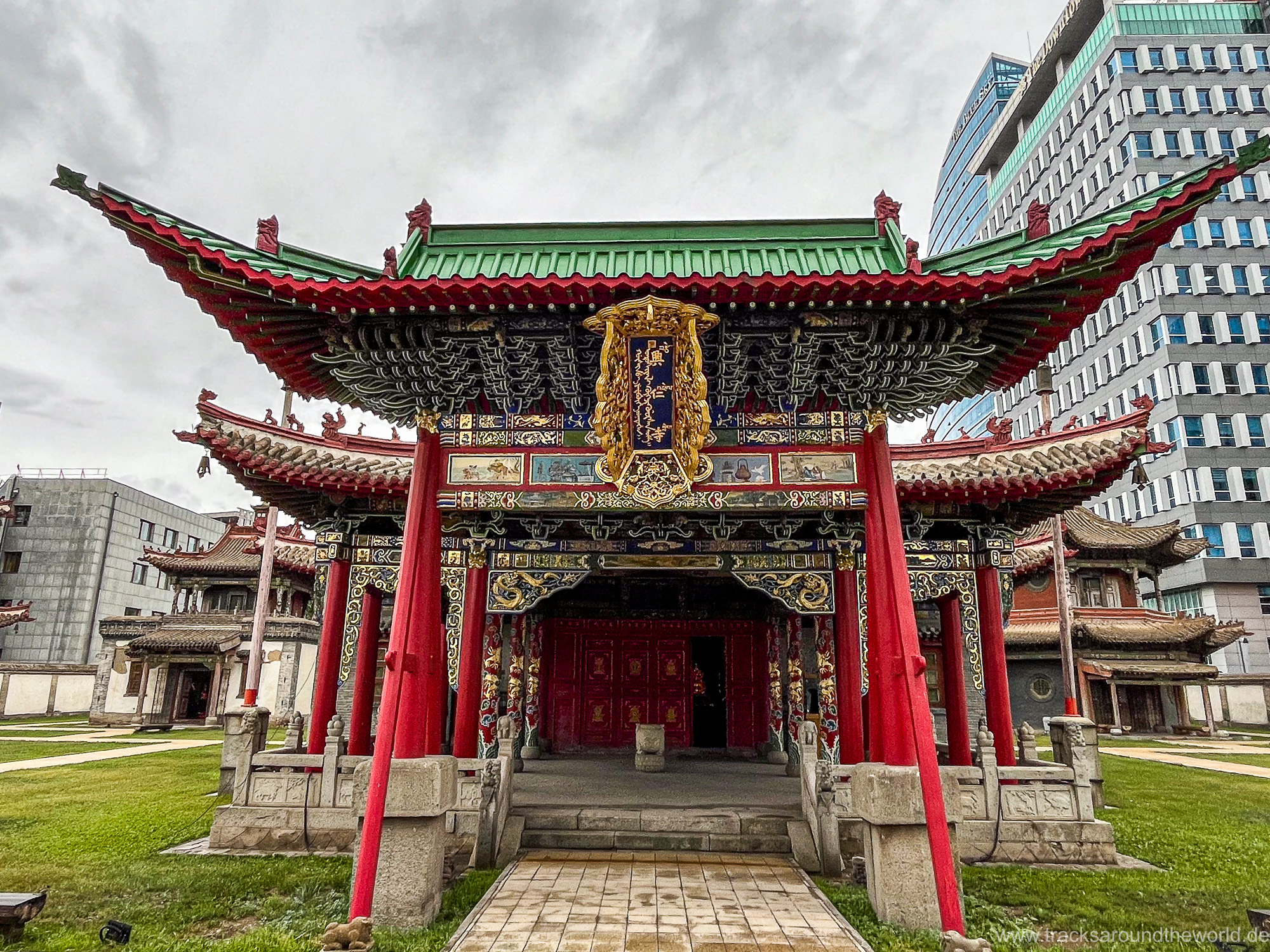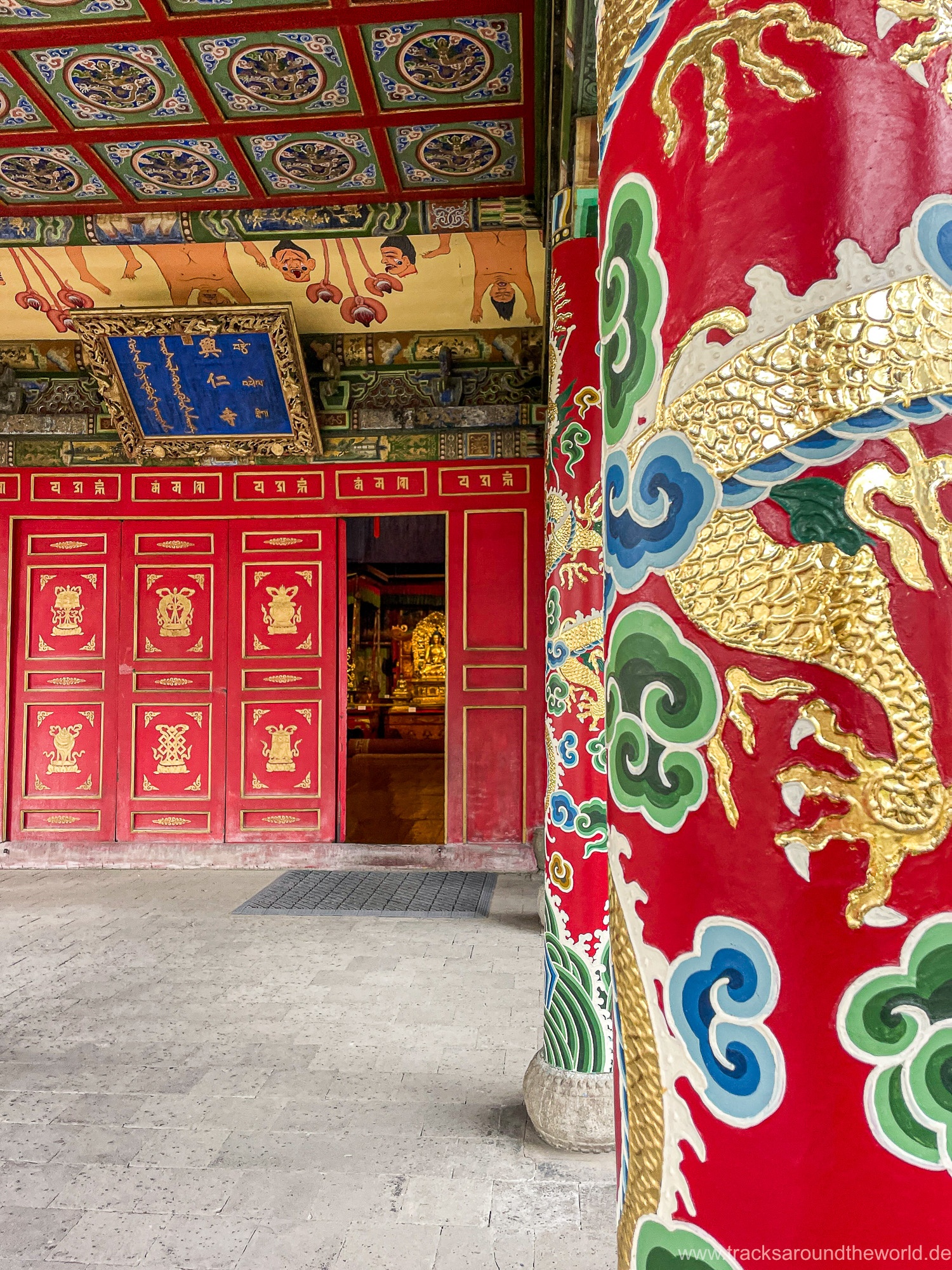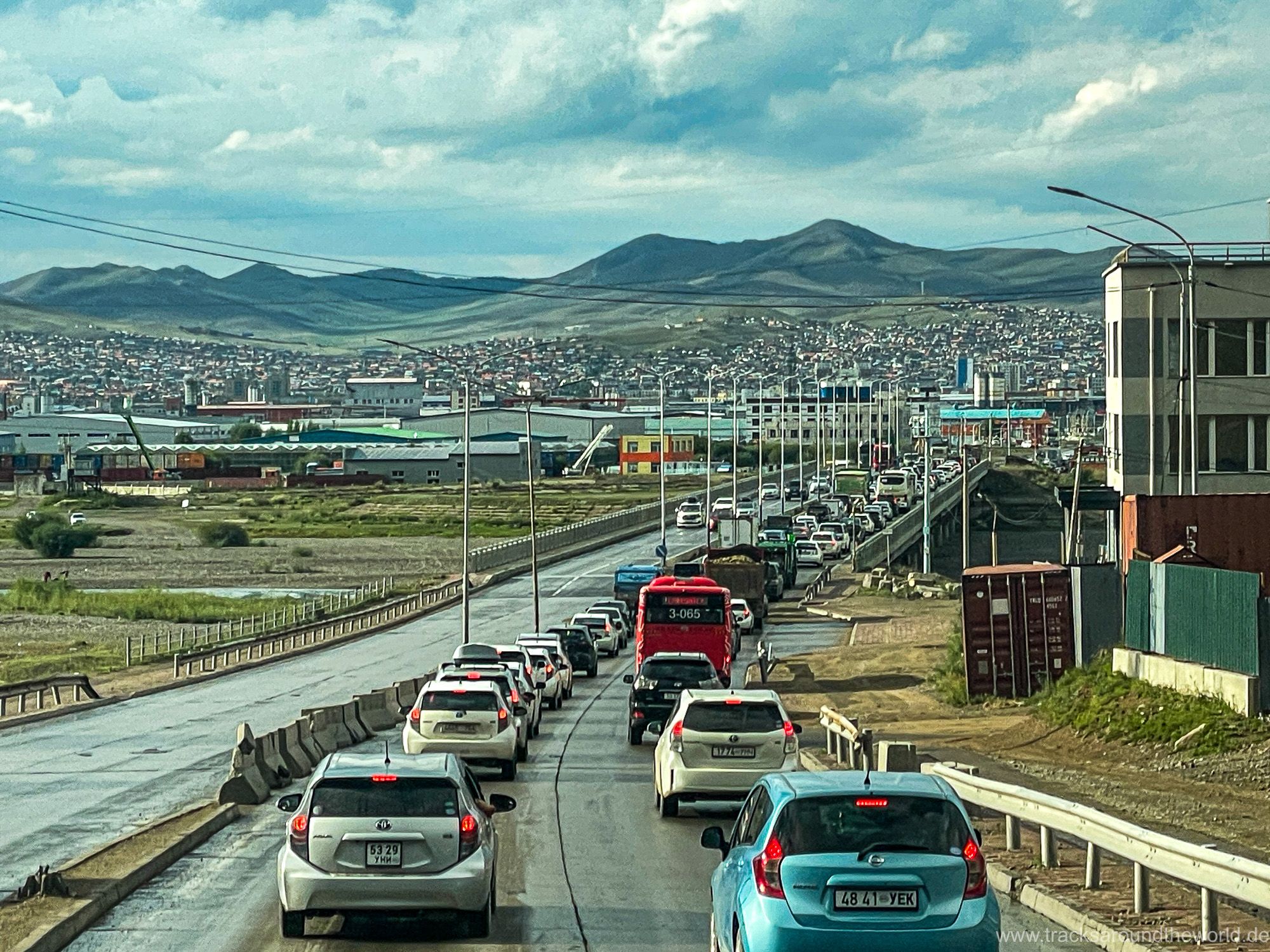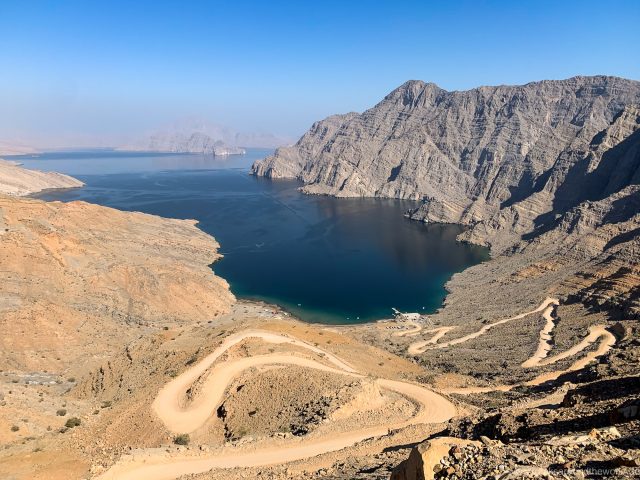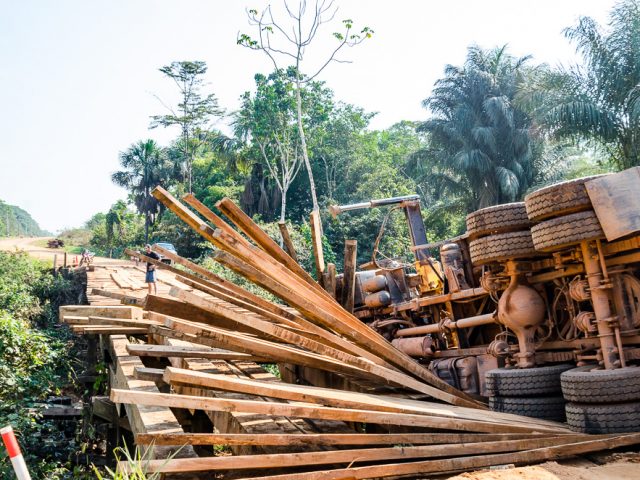The Khangai Mountains are the second major mountain range in Mongolia after the Altai: although their highest peaks reach up to 4,000 meters, their slopes are quite flat and partly forested – their topography resembles more a German “Mittelgebirge” than the Alpes.
Near the provincial town of Uliastai, we plan to hike to the holy site of Dayan Zavkhan which lies above Lake Tsagaan Nuur. However, this hike presents us with certain challenges 😉. Firstly, the access road along the river valley is so rutted that we decide to stop after 30 km, find a nice spot under the trees on the picturesque riverbank, and decide to drive the remaining 15 km to the starting point of the hike the next day with our quad bike Shujoo. Secondly, the hike itself is listed in our guidebook with a total length of 20 km. Since we’re doing the first stretch by quad, I expect it to be 12-14 km. However, the information turns out to be completely wrong, and I end up walking almost 30 km that day. At the end I pick up Karin with the quad at a ranger station because she wouldn’t have been able to make it back herself – at least not in daylight. And yes, the hike itself was fantastic, and the climb up the sacred mountain Dayan Zavkhan with its bizarre rock formations, prayer wheels, and flags was a truly impressive experience. Sometimes you just have to push yourself to your limits, but we were both completely exhausted afterward.
We hadn’t imagined Mongolia to be as deep green and hilly as it is here in the Khangai Mountains… we normally associate the country with the desert regions of the Gobi and flat grasslands. But progress – even on the very few paved overland roads – is arduous… you have to work hard to reach the interesting areas in Mongolia! However, finding a great, secluded overnight spot has never been easier in any country on our world tour. Simply drive off the road, climb the next hill, and you’ve found the perfect overnight spot with a prime view. The Khorgo Uul volcanic crater and the deeply incised basalt canyon of the Chuluut River bear witness to the intense volcanic activity that occurred here 8,000 years ago.
We find the local’s life in the ubiquitous yurts – or gers as they are called in Mongolia – fascinating, including the coexistence with the countless animals that live there: horses, grunting oxen, goats, sheep, etc. Karin has therefore organized a day with a Mongolian family, allowing us to briefly immerse ourselves into the local farm life. Milking mares and yaks, riding, getting together the animals and separating them from the young ones at night, getting horses used to the saddle, making fermented mare’s milk (airag), brewing milk tea, etc.: highly interesting but unfortunately we don’t really like the food – the traditional dish Khorkhog isn’t really our taste, and having a conversation only with Google Translate is quite tedious over time. On the one hand, it’s a shame that the food in Mongolia is so unappealing, but it’s also understandable. They simply use what has been available for hundreds of years, and that’s not much. The meat is far from being smooth, there are hardly any spices, few vegetables, generally little choice, and a lot of fat.
We combine the ger visit with a visit to the beautiful Orkhon Waterfalls… but the track to the end of the valley is an absolute challenge, even by Mongolian standards; it’s incredible how the Mongolians manage to get everywhere with their Toyota Prius Hybrid (the standard car in the country with an 80% market share). Despite all the scenery, culture shouldn’t be neglected either: with the strongly Tibetan-influenced monasteries of Thövkön (high in the mountains, you have to walk or ride up for an hour… you don’t get anything for free in Mongolia 😉), Shank, and the enormous Erdine Zuu complex in the former capital of Kharakorum, we see several highlights!
Ulaanbataar, with its giant Genghis Khan statue and various impressive monasteries, is a complete contrast to the rest of Mongolia: 24/7 traffic chaos, exhaust fumes and noise. Especially after the last few weeks of absolute solitude, we’re even more sensitive than usual: After two days, a big shopping trip, and a visit to immigration to extend our 30-day residence permit we leave the city stressed and flee to the remote countryside.



